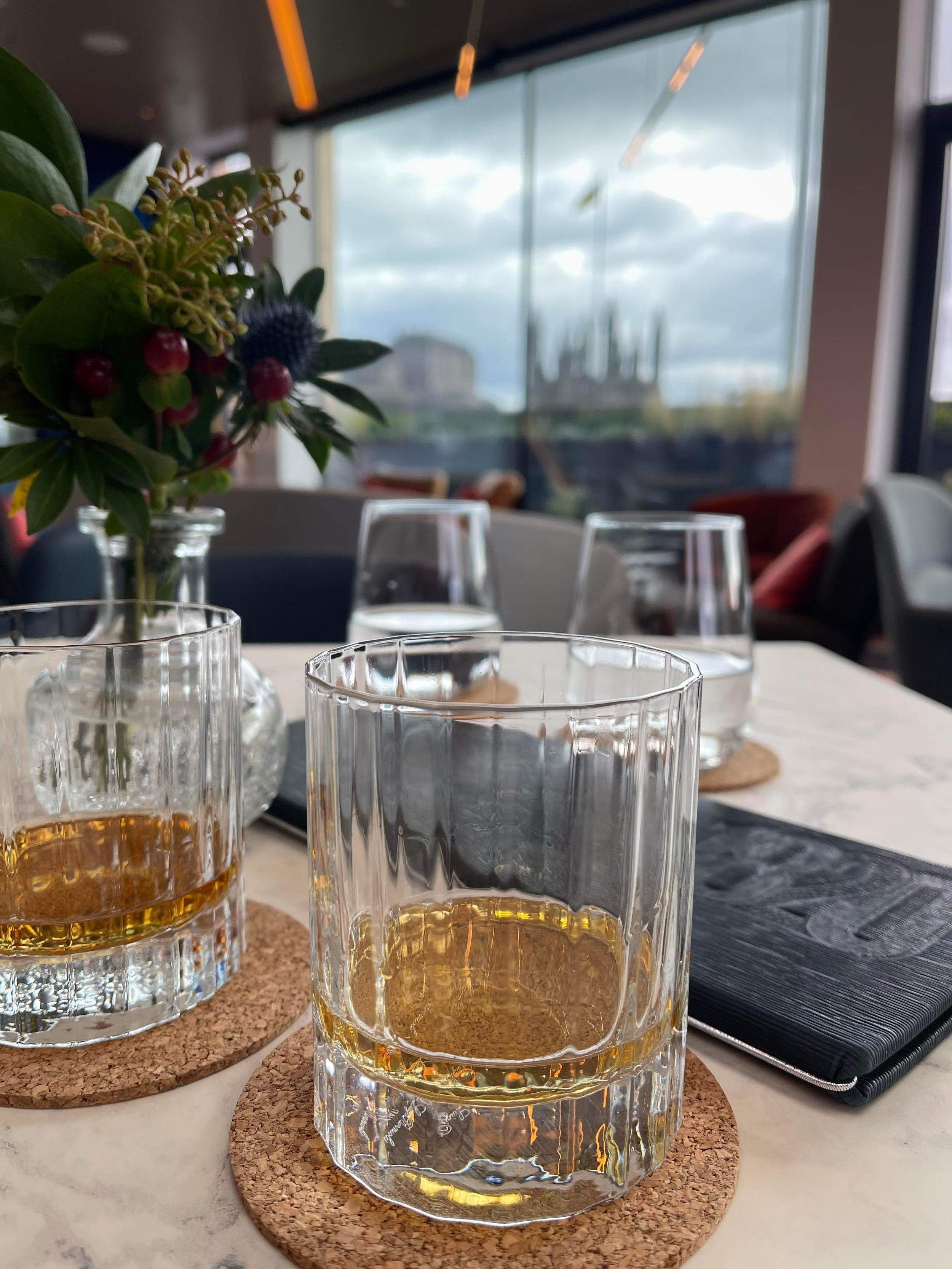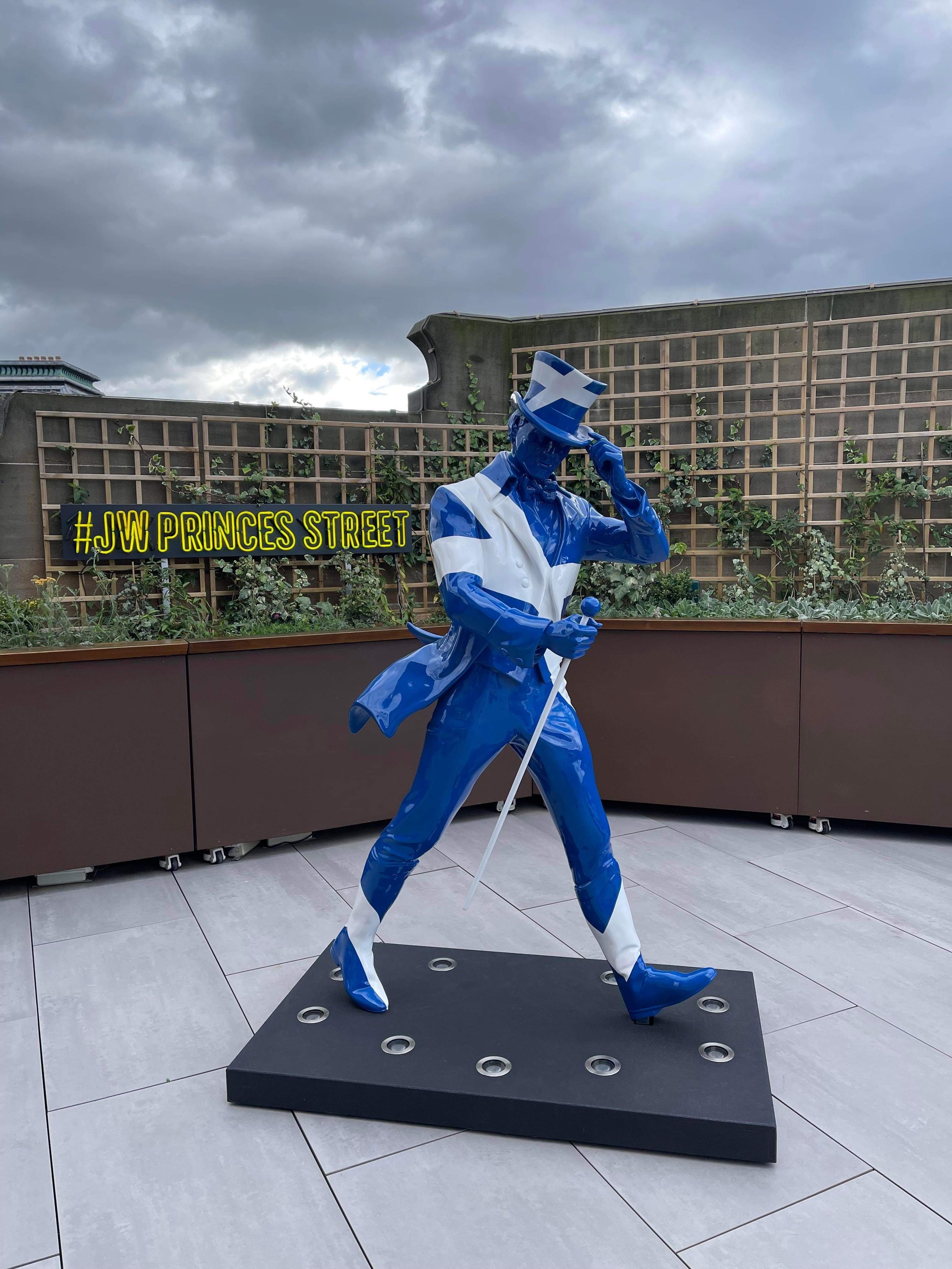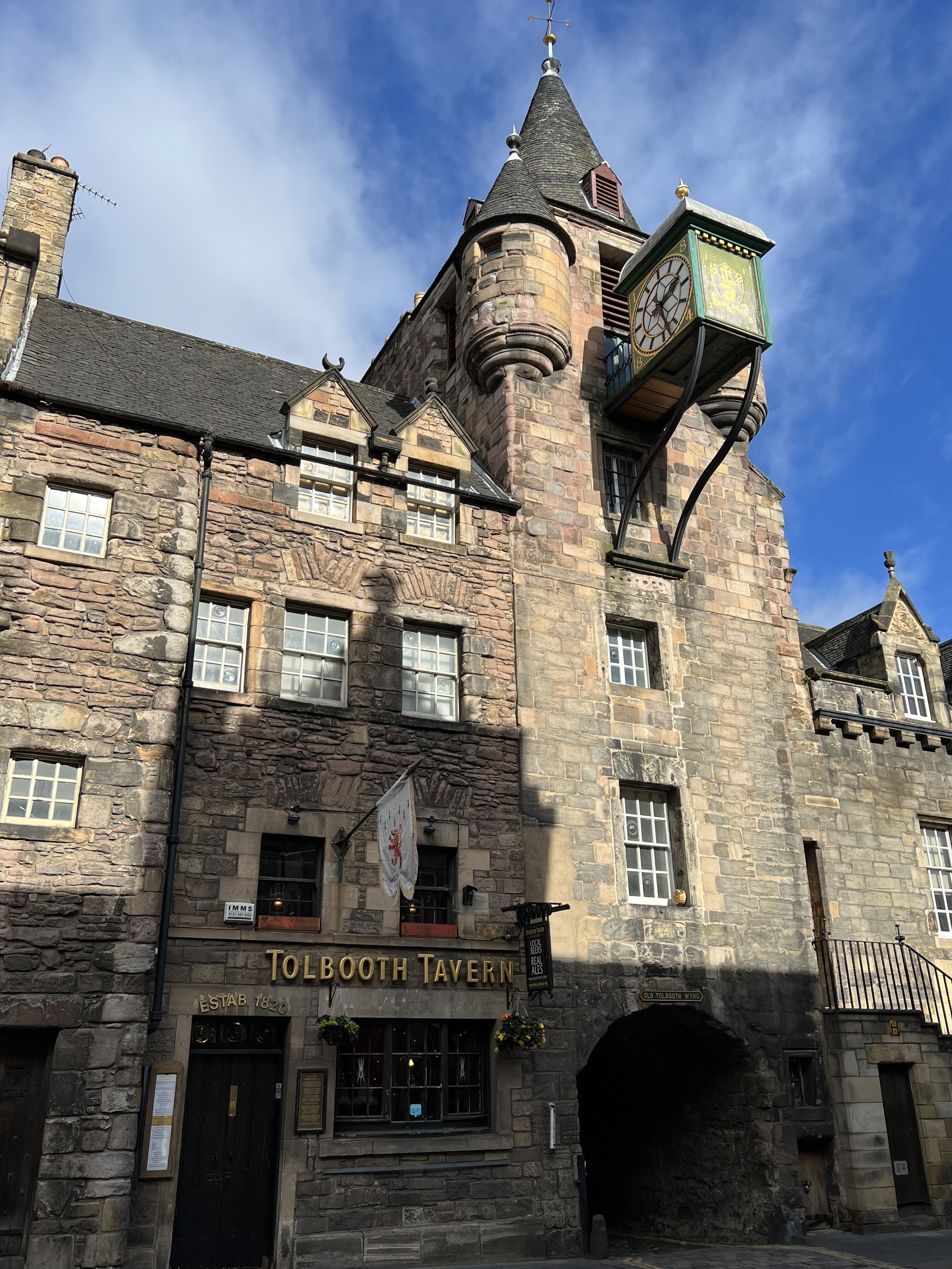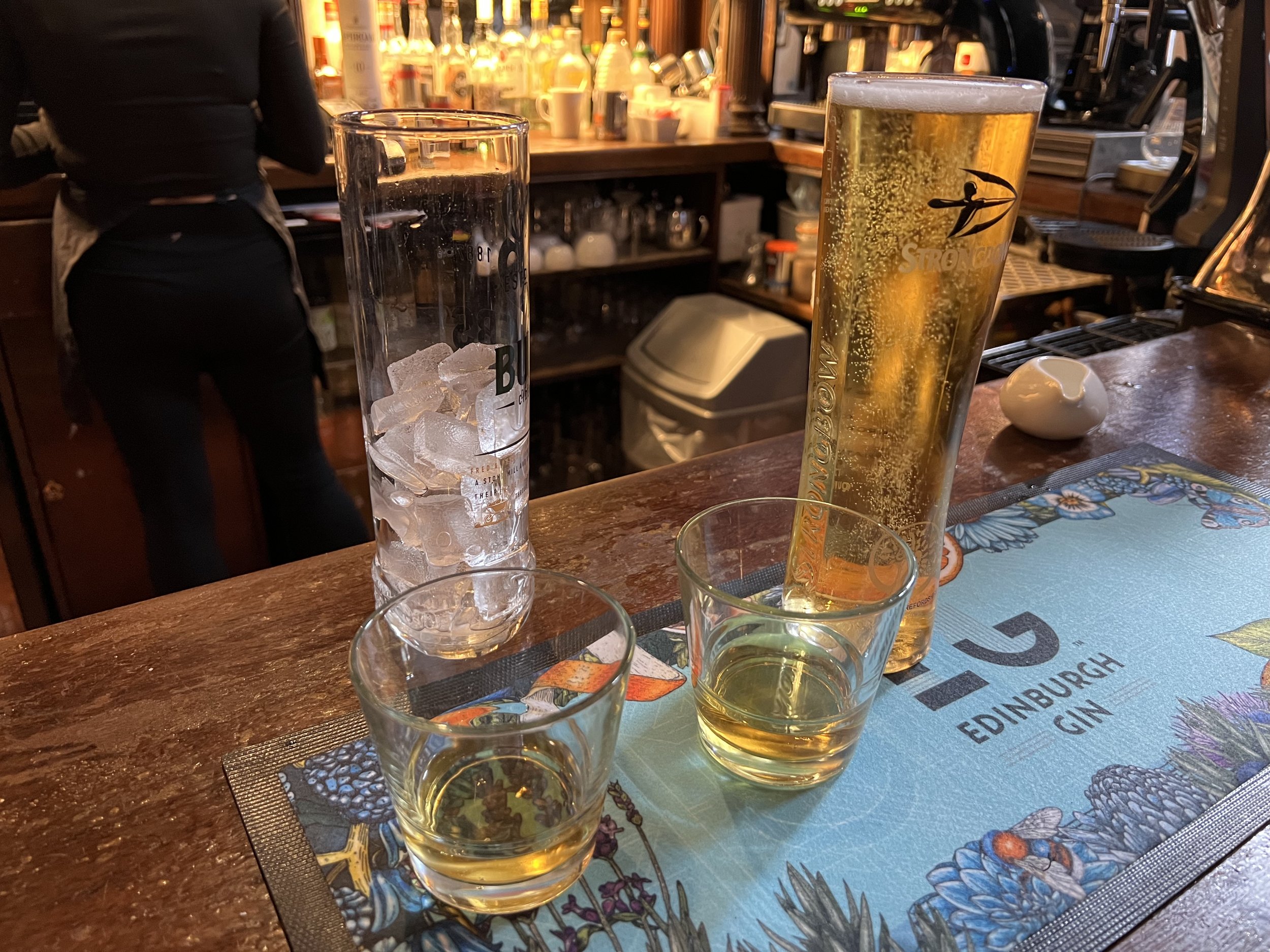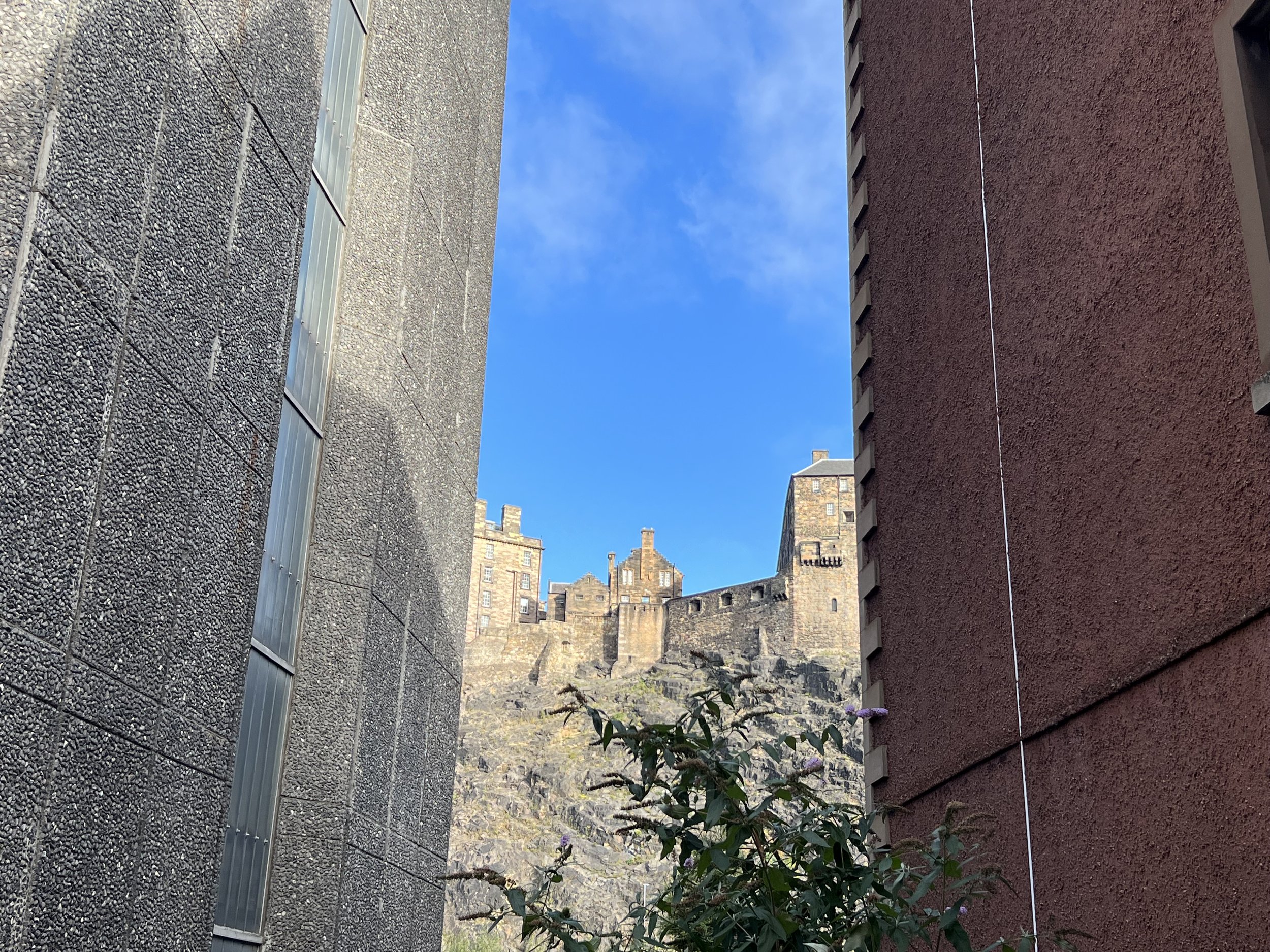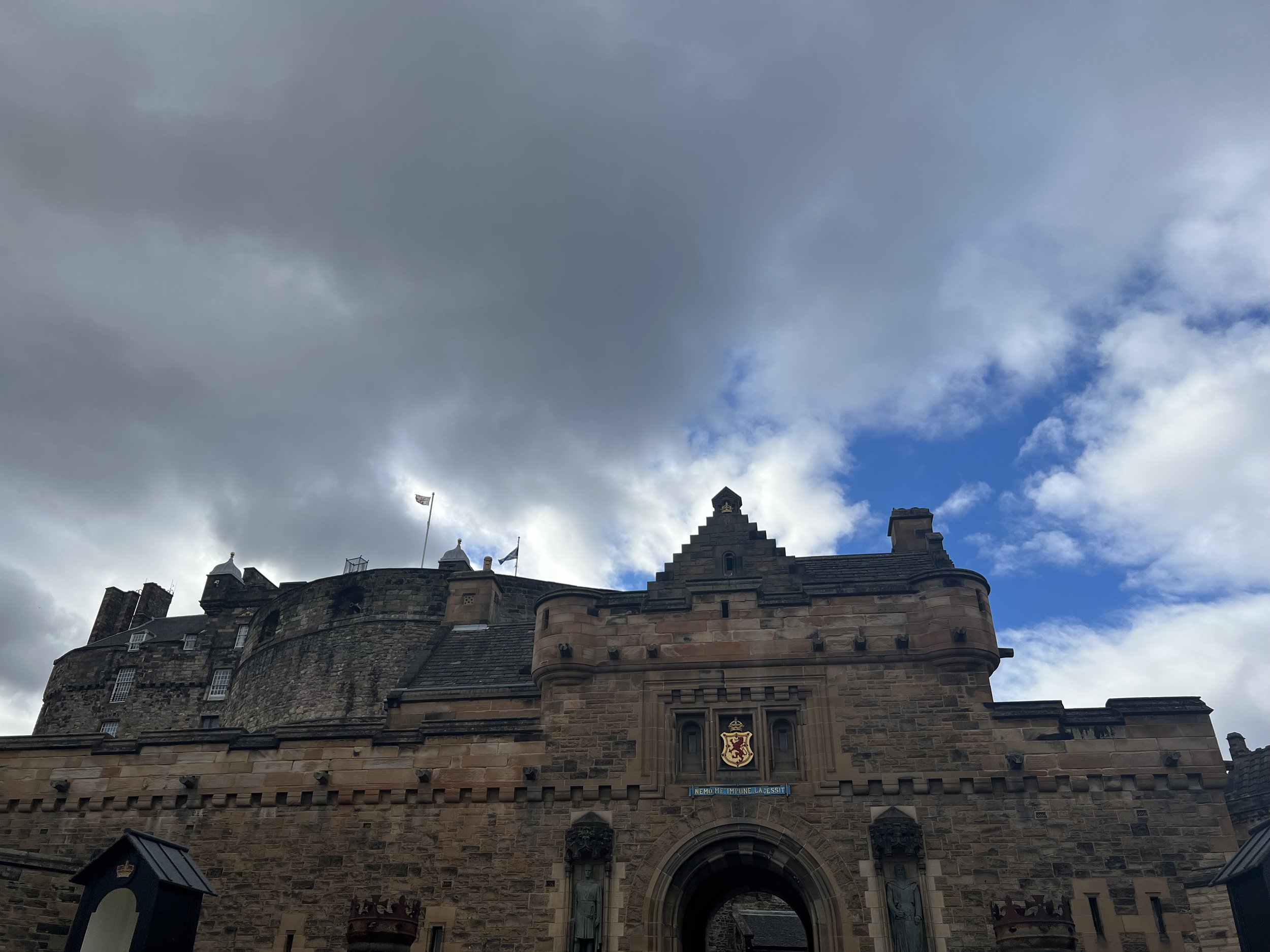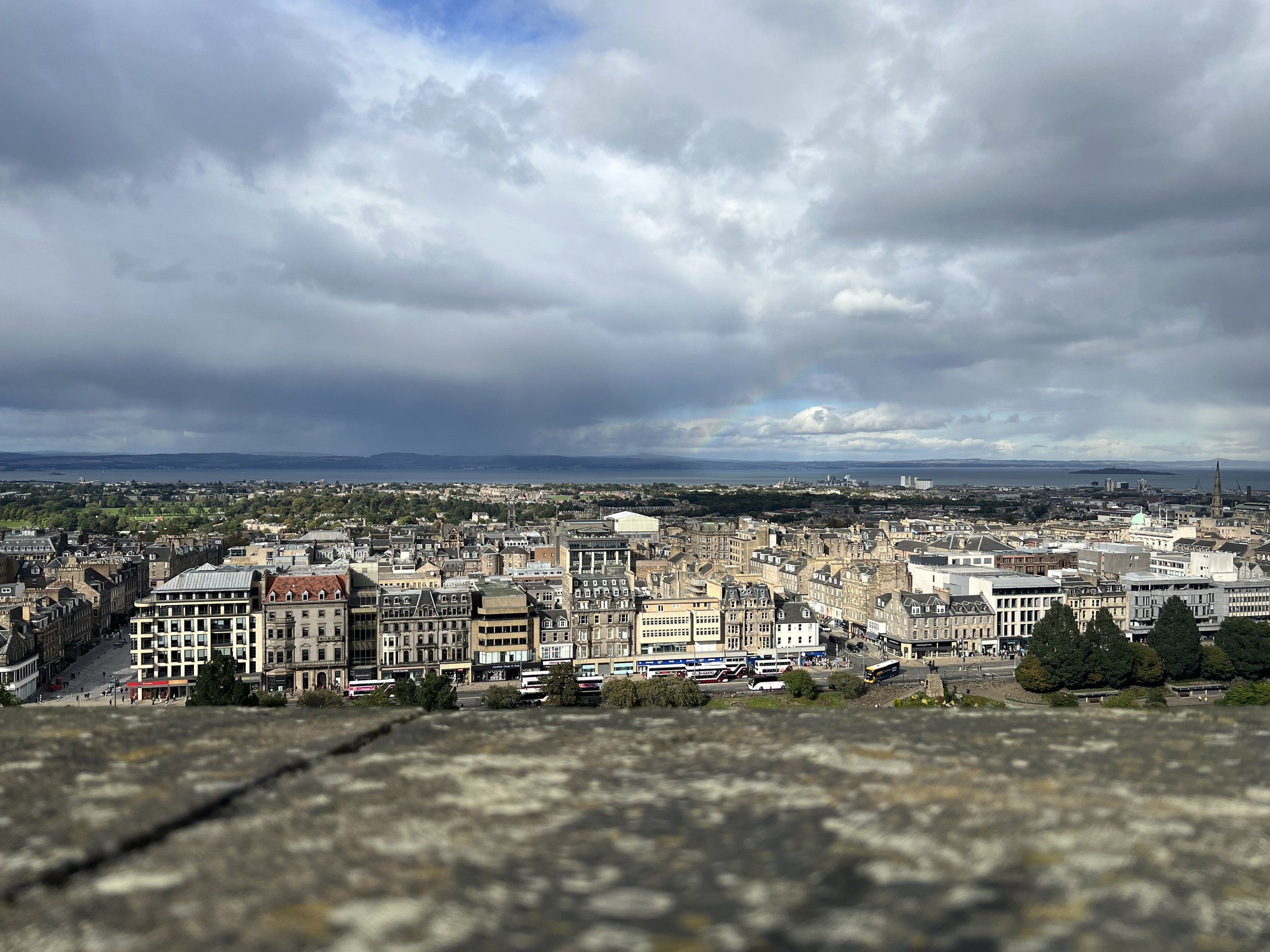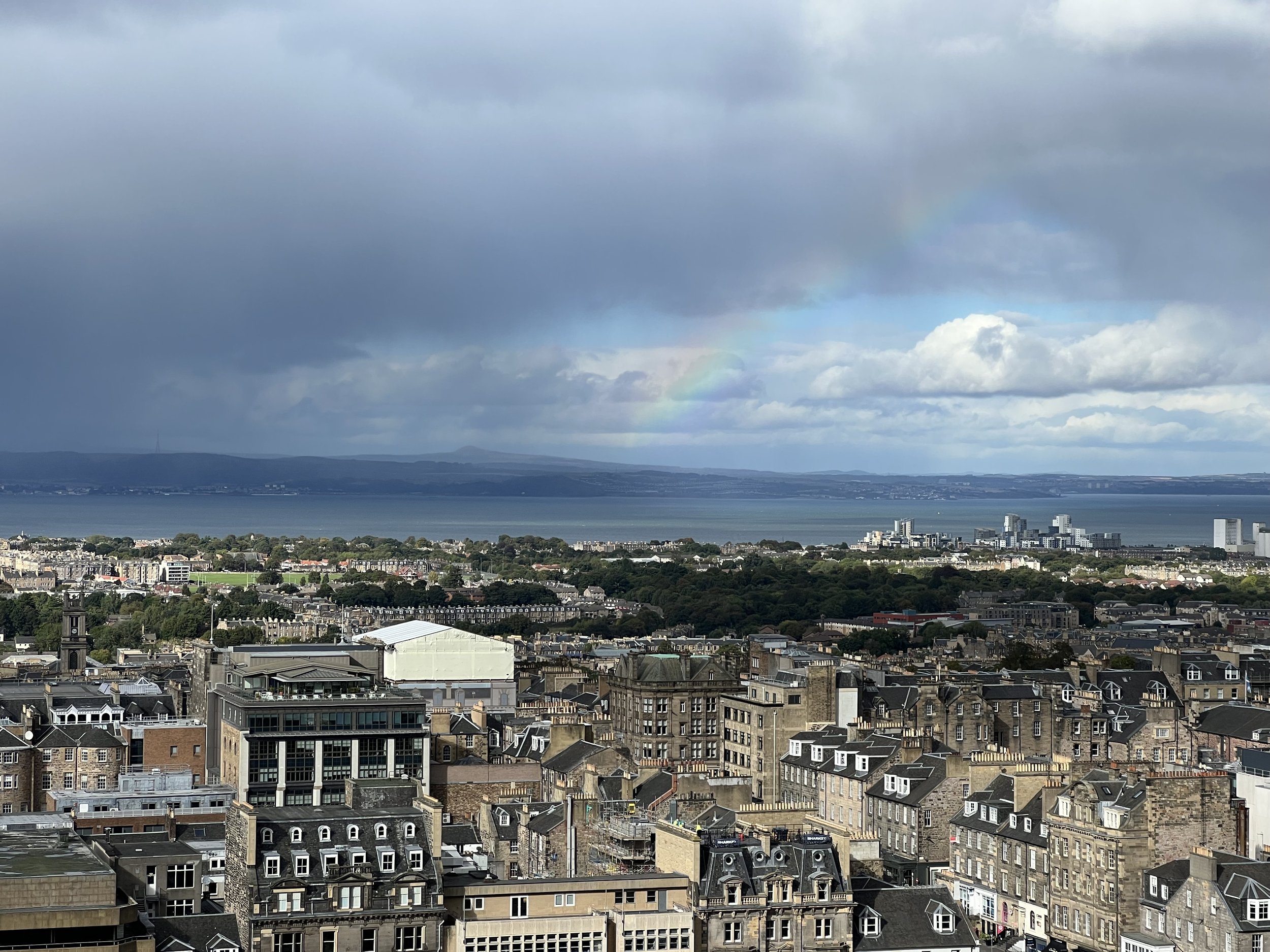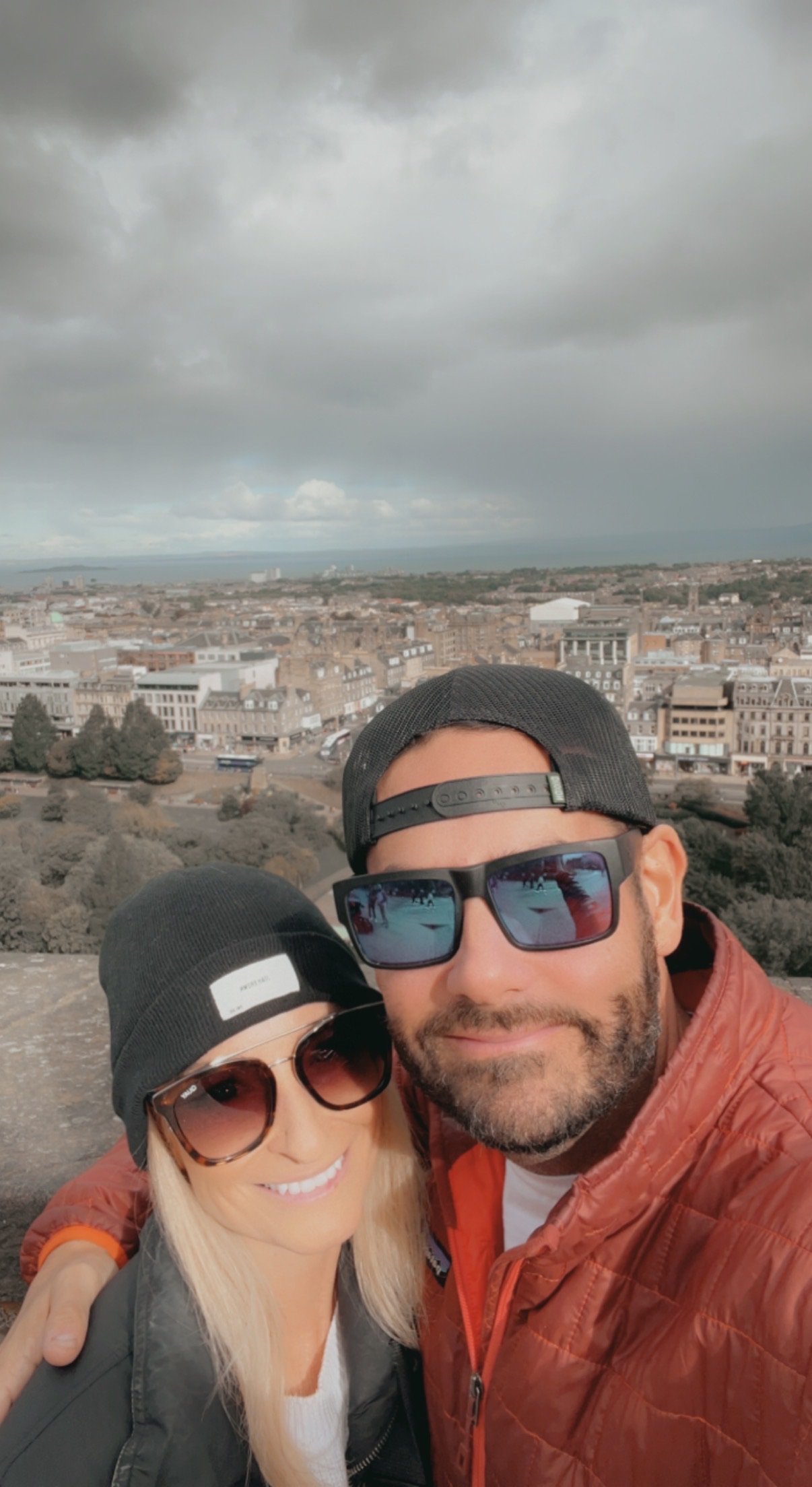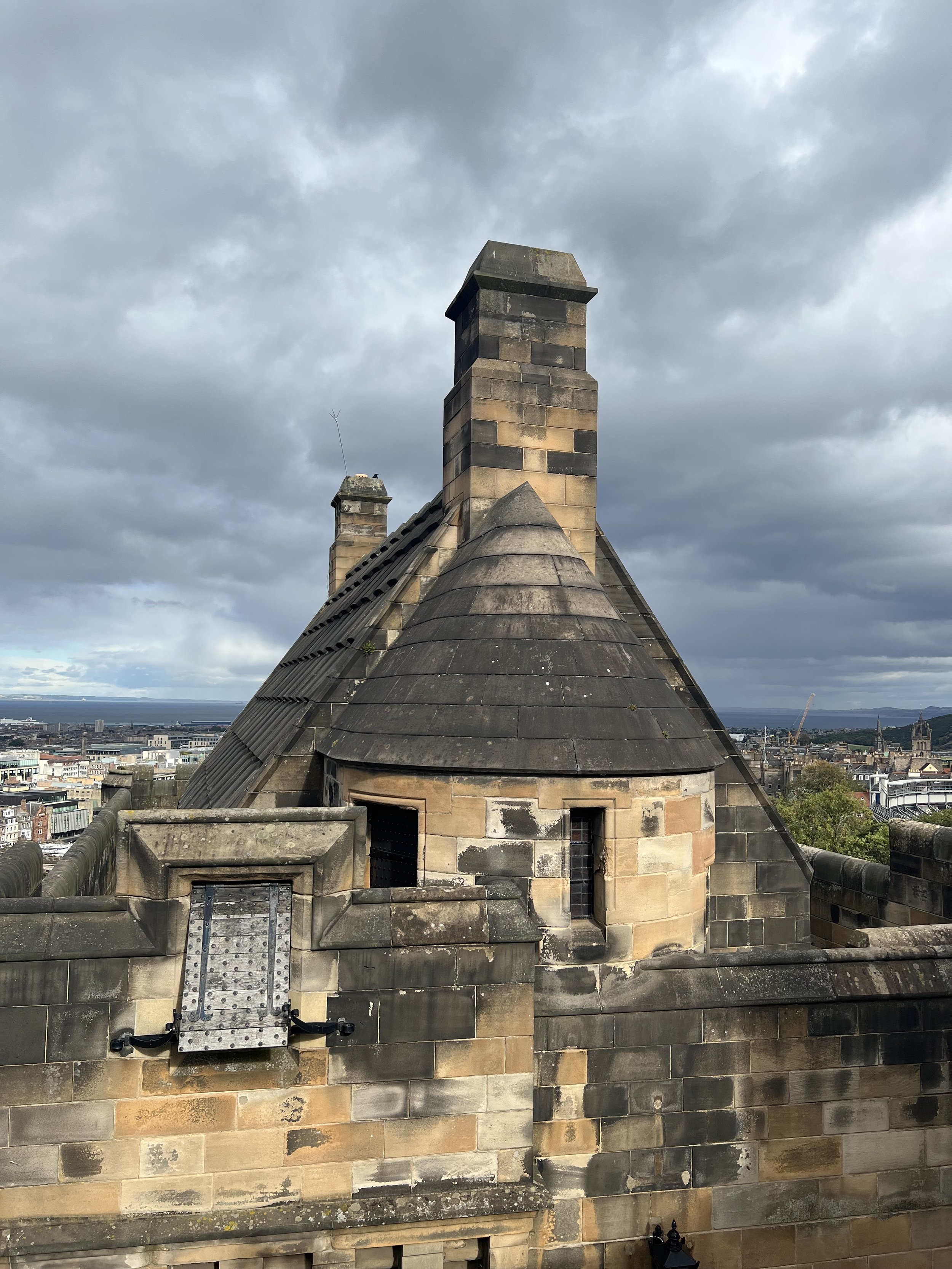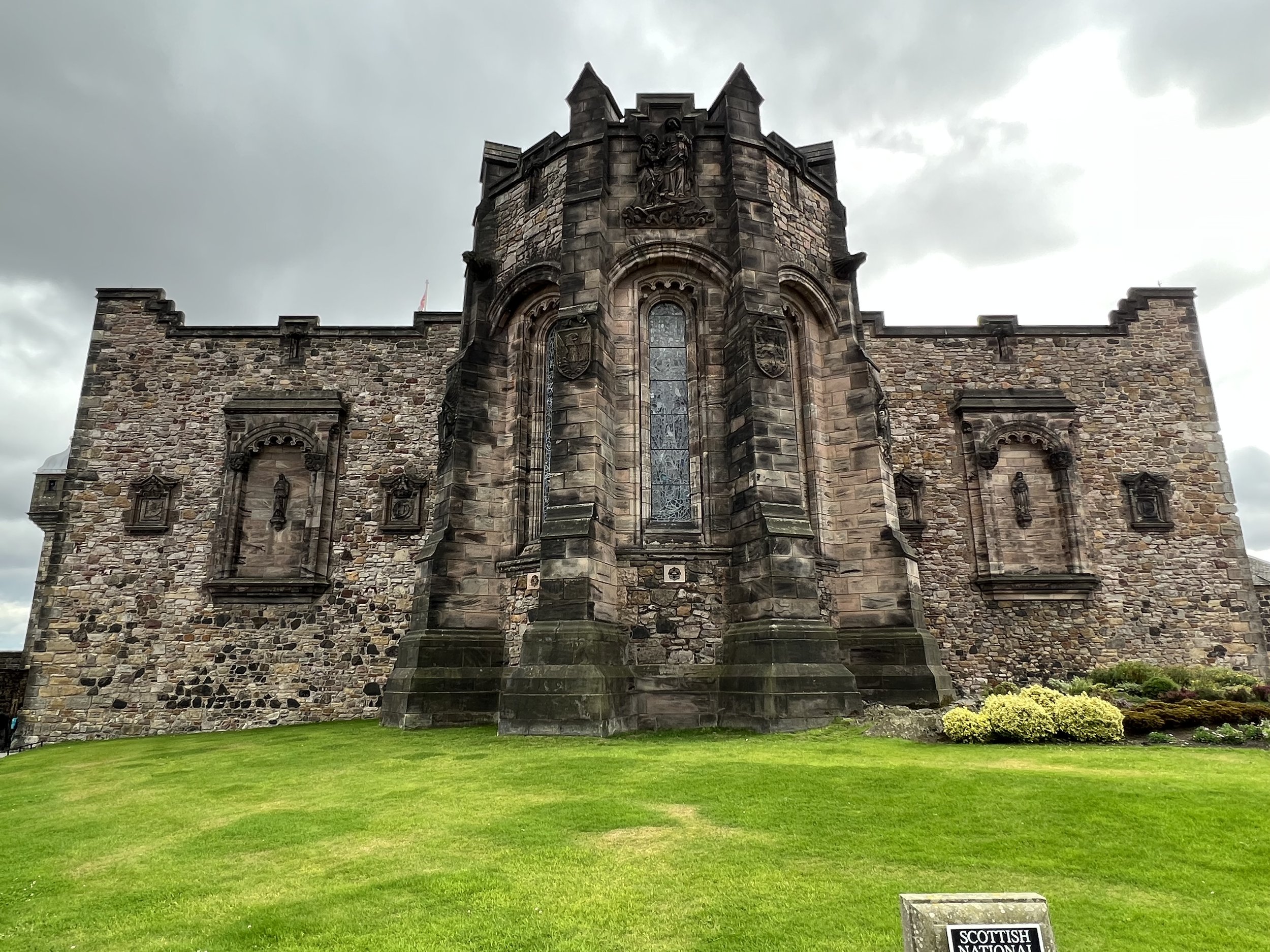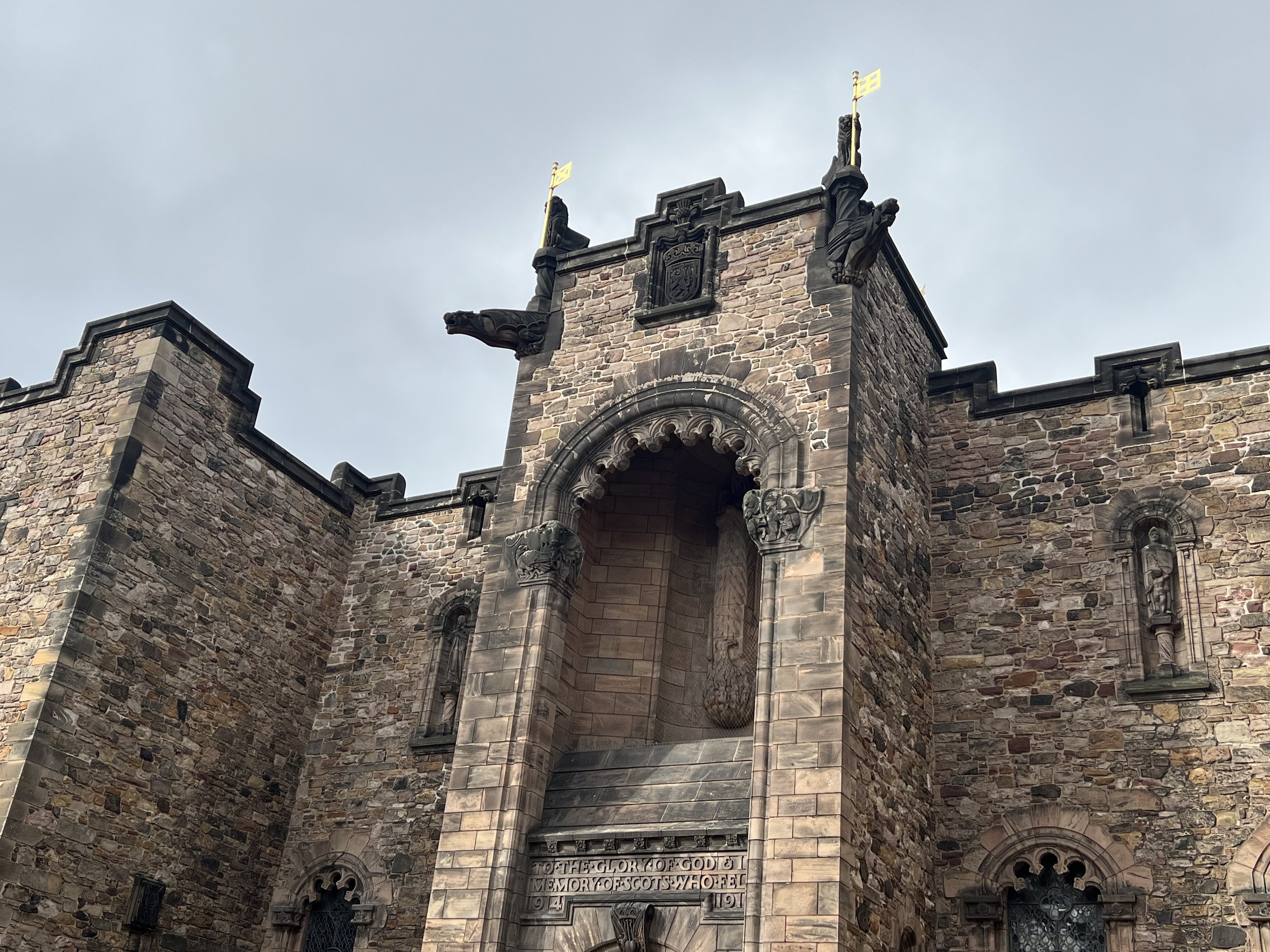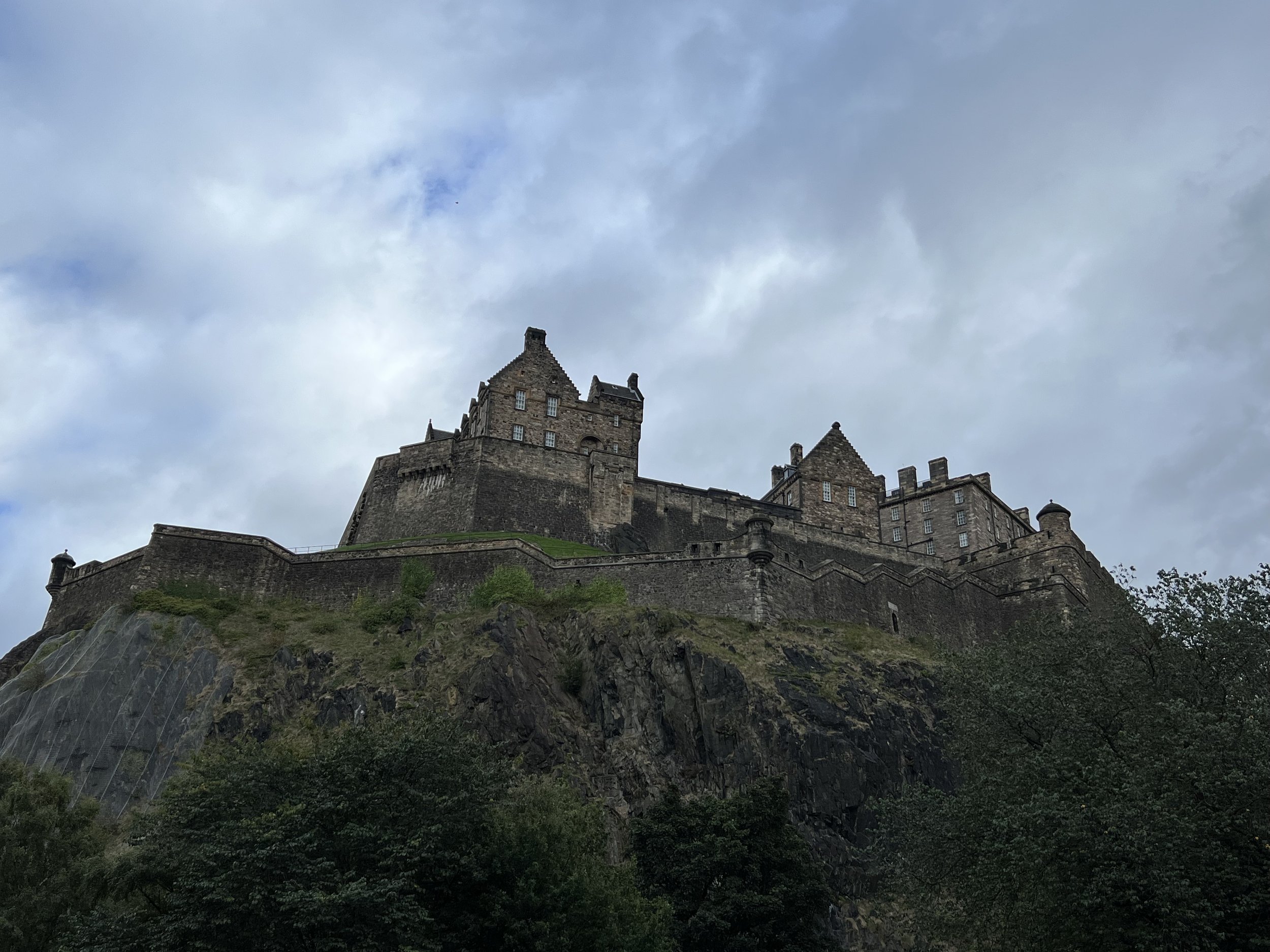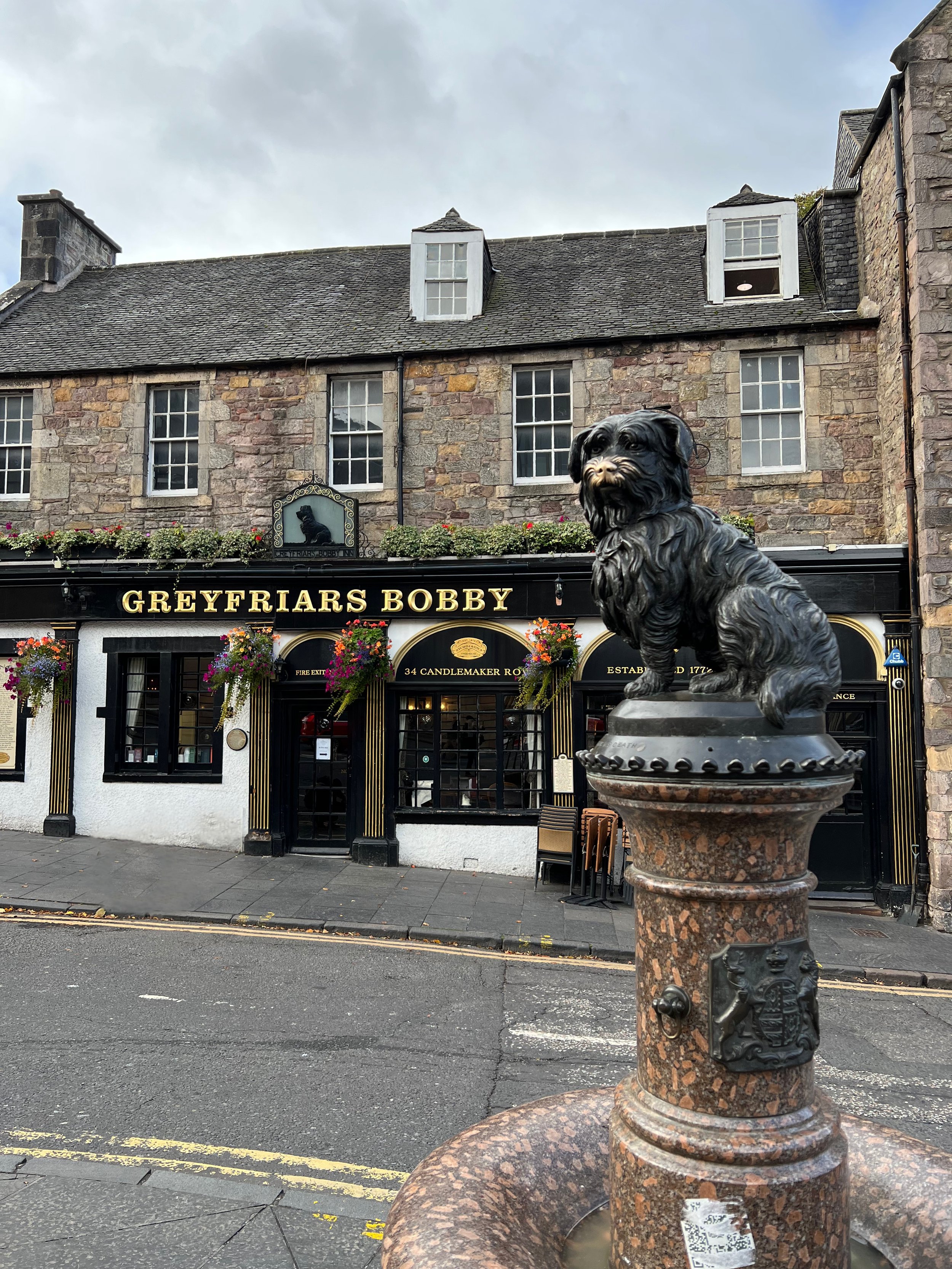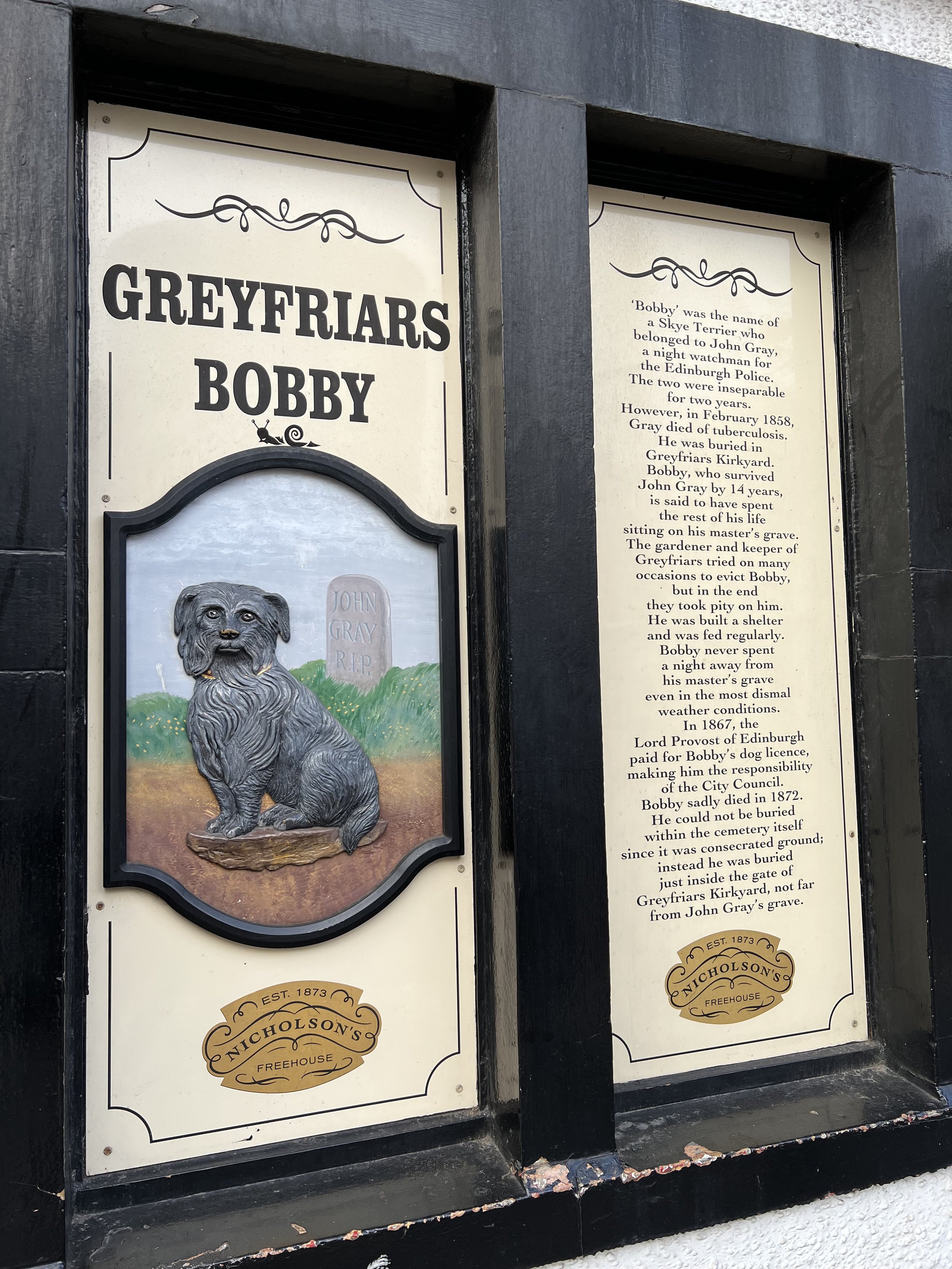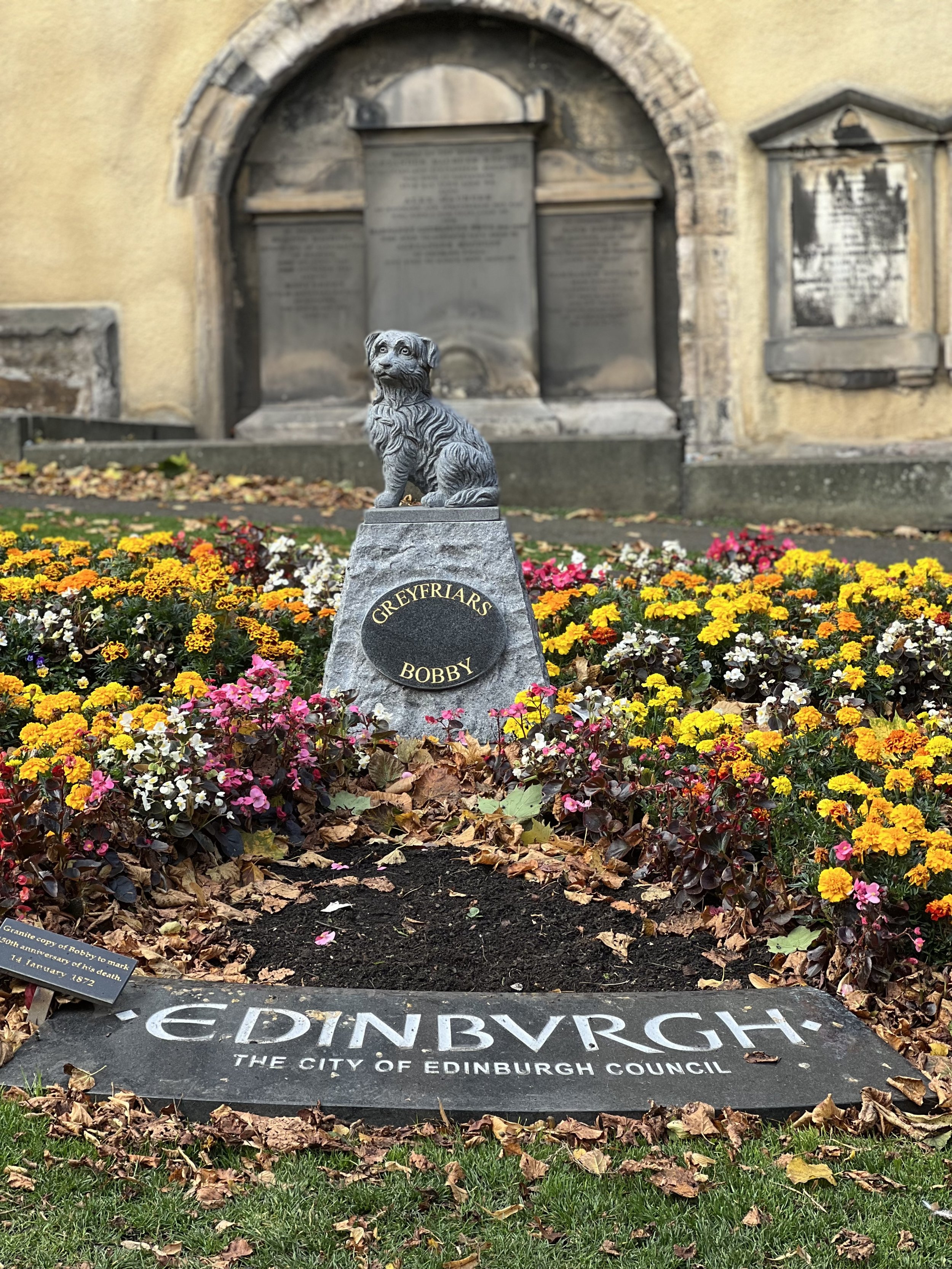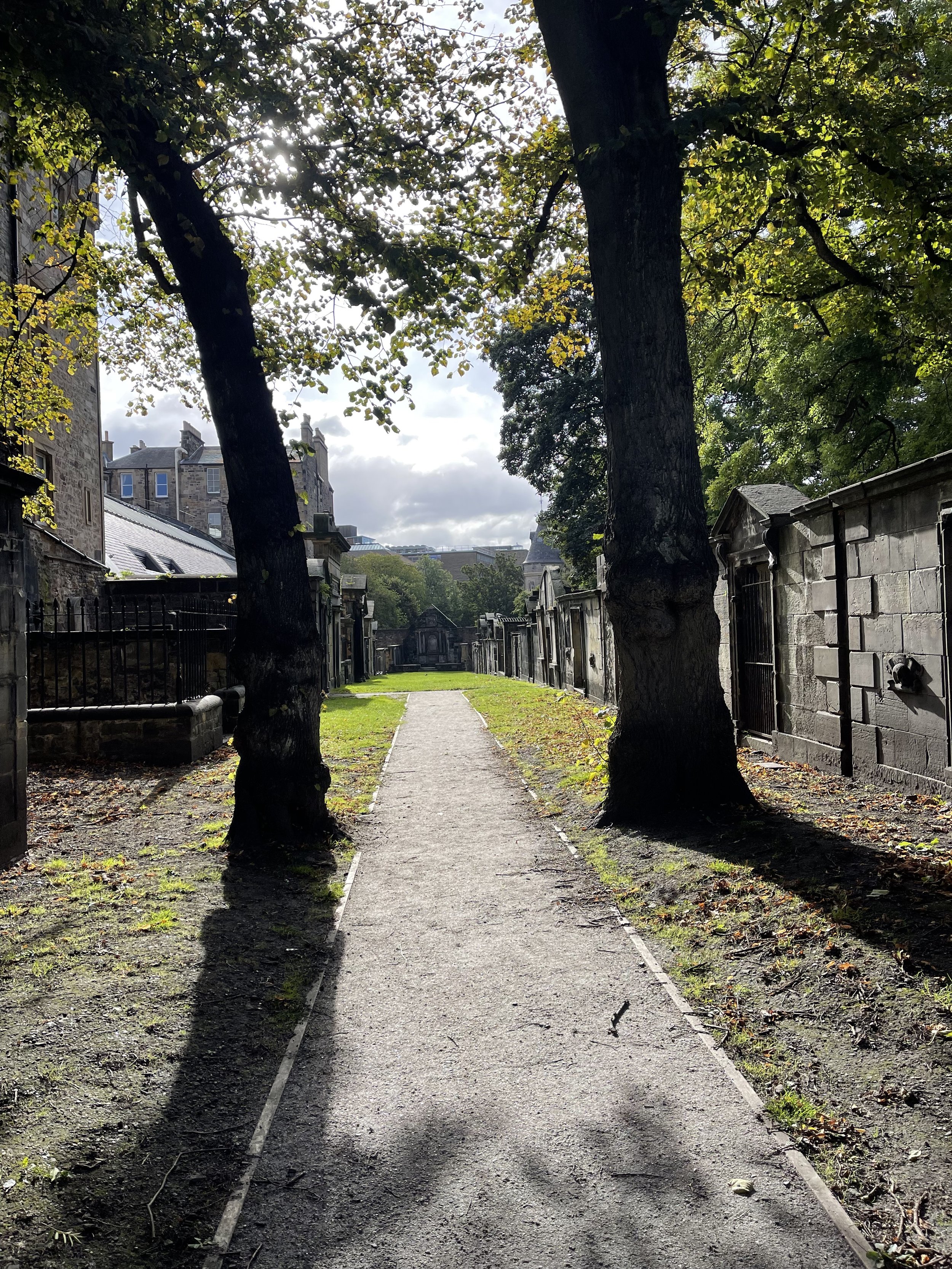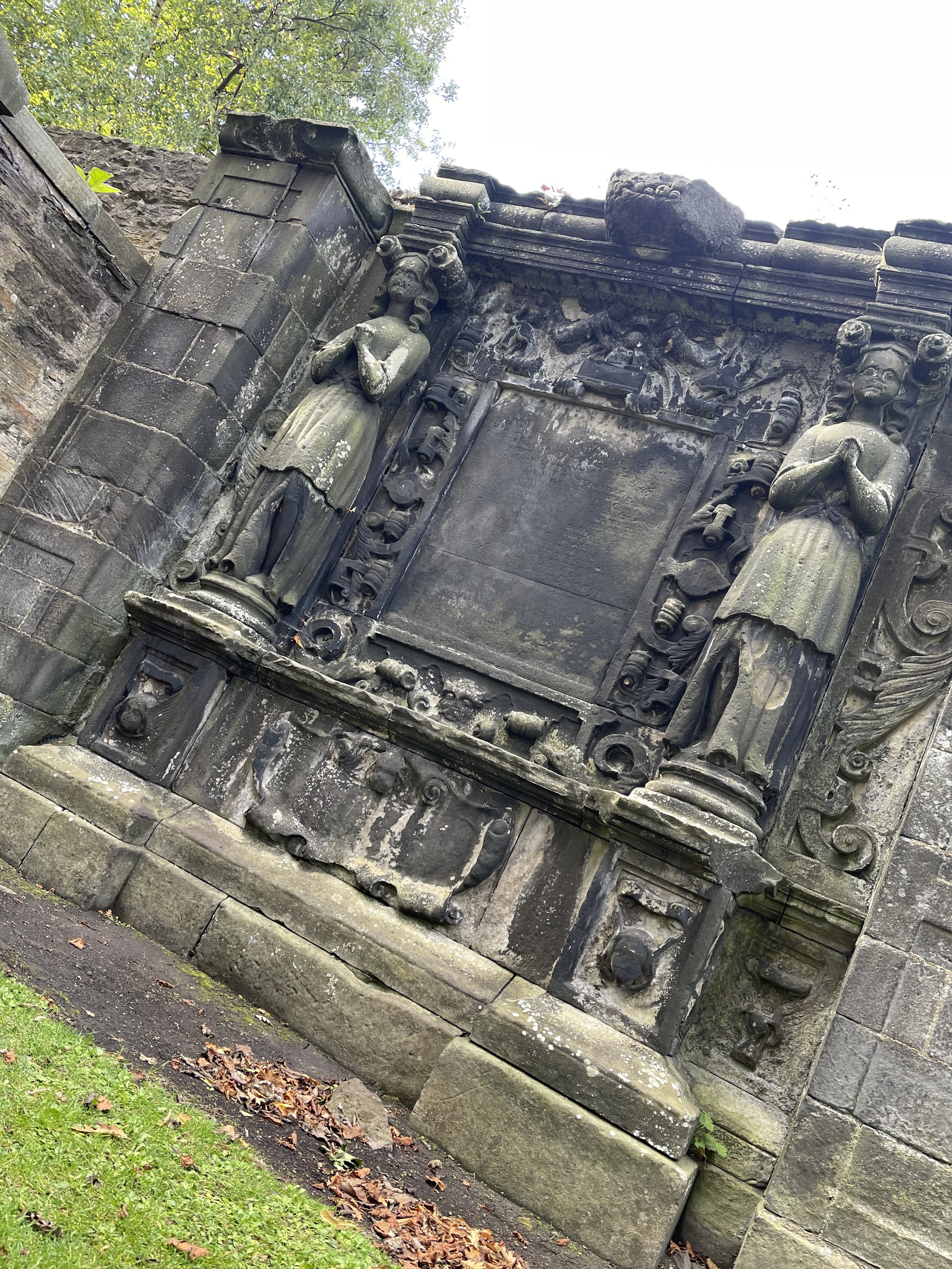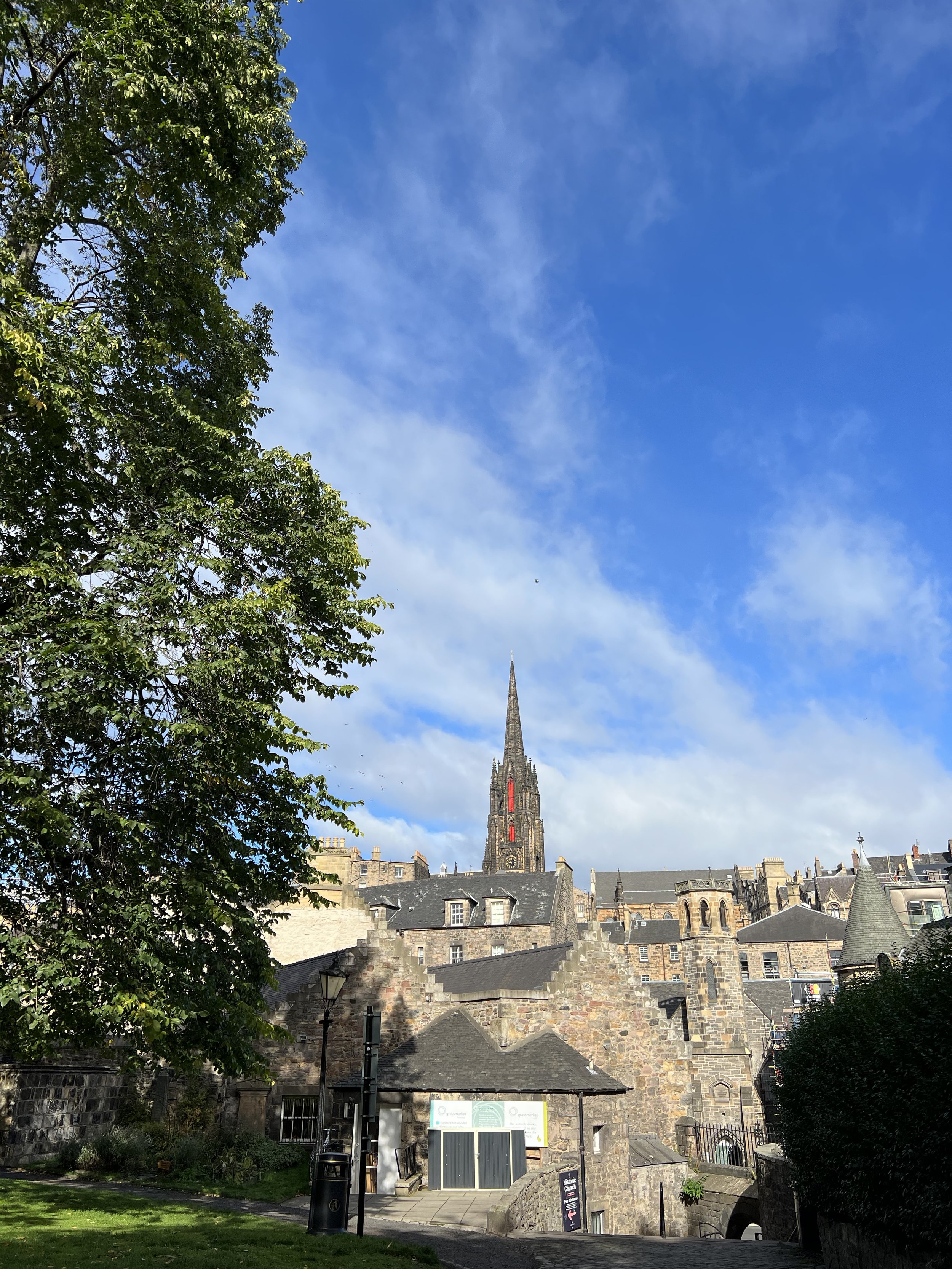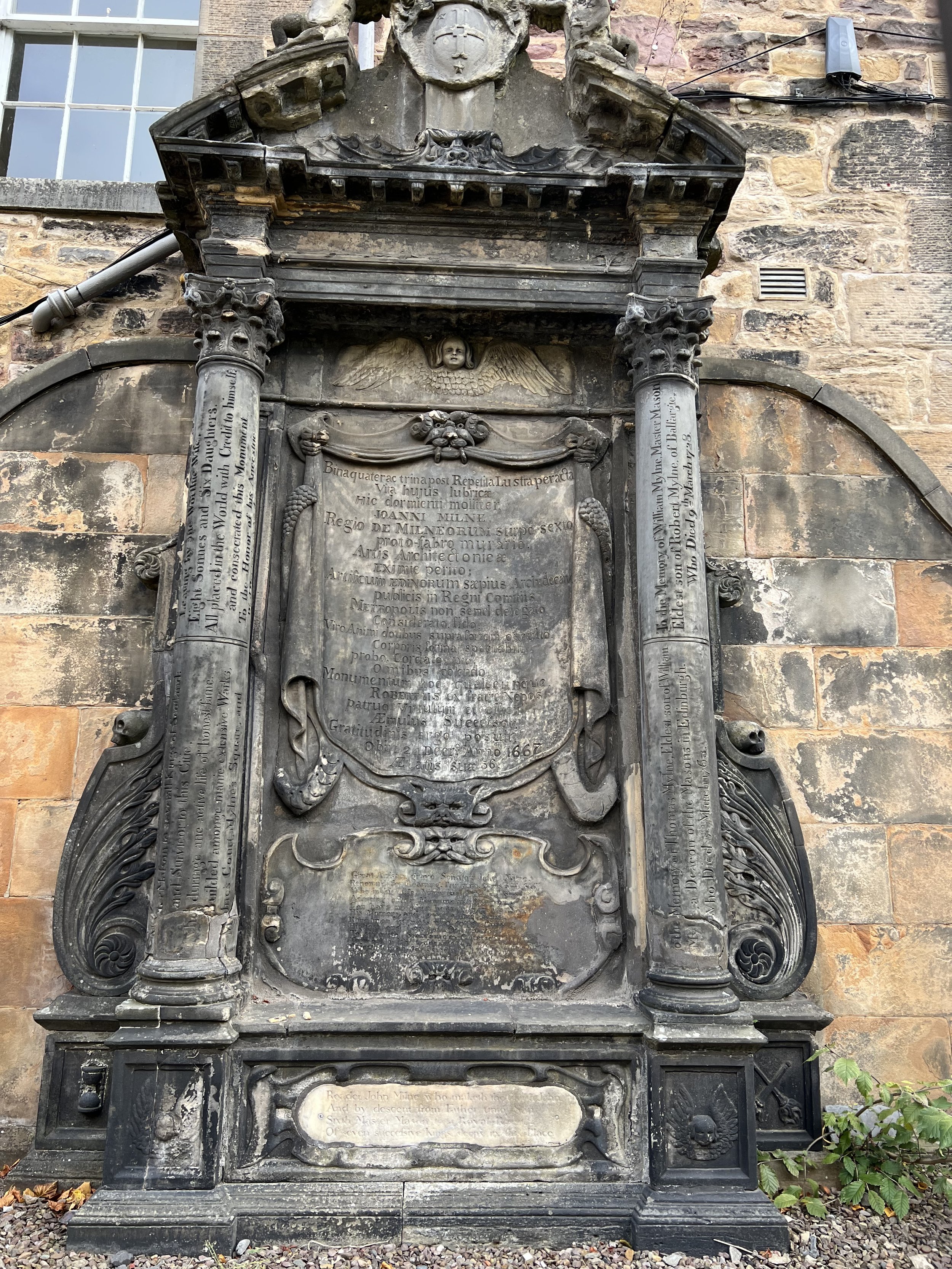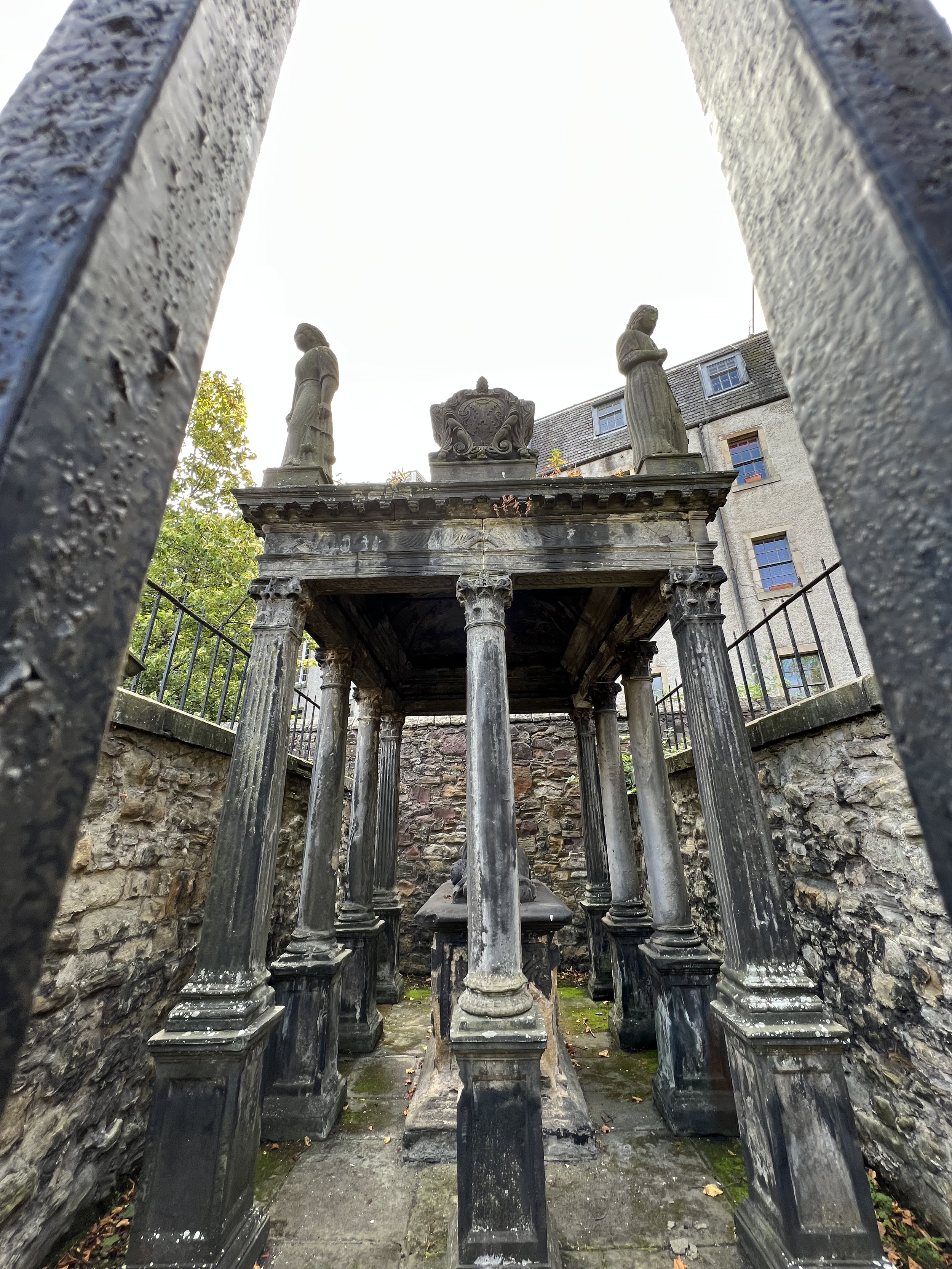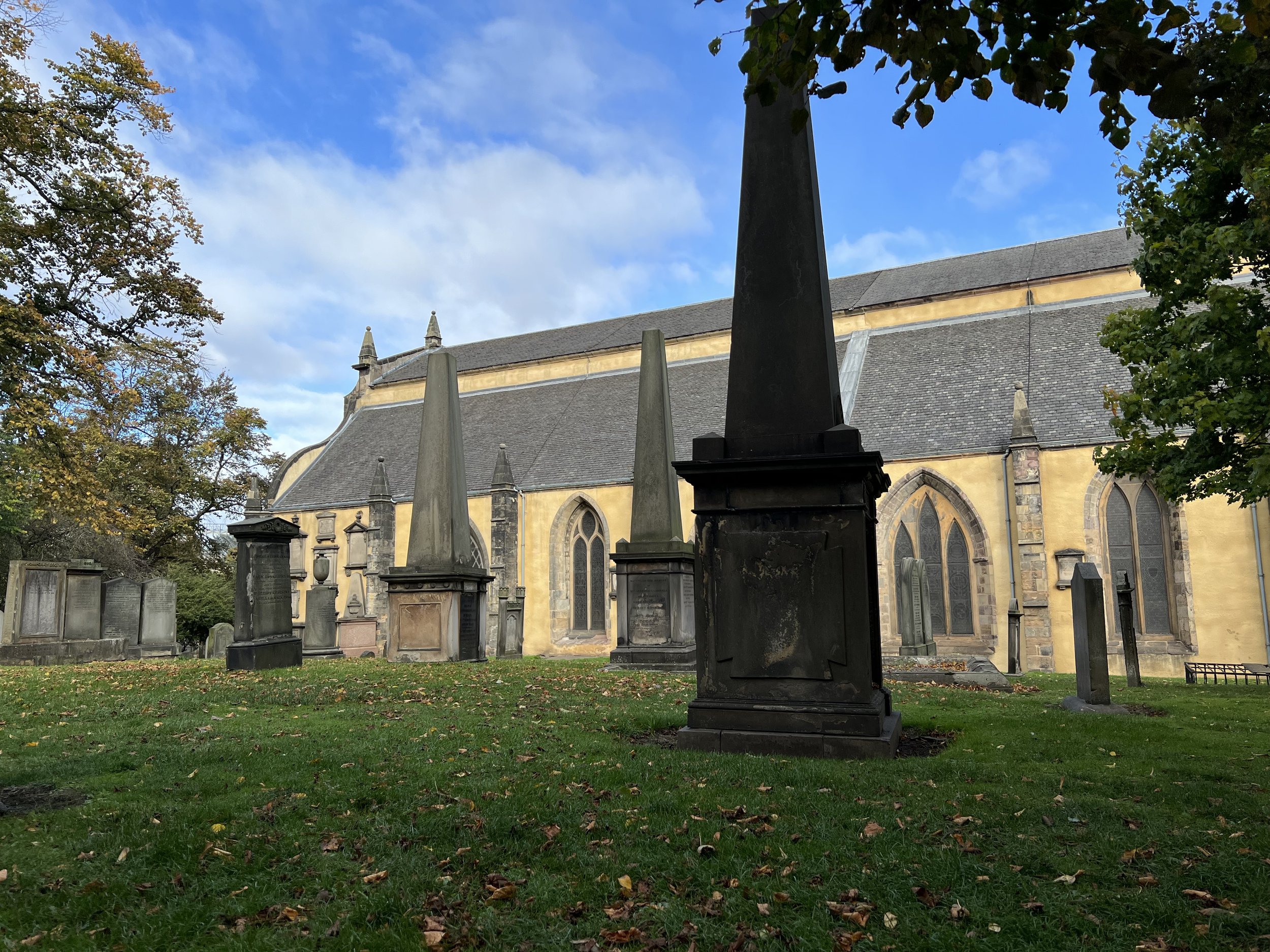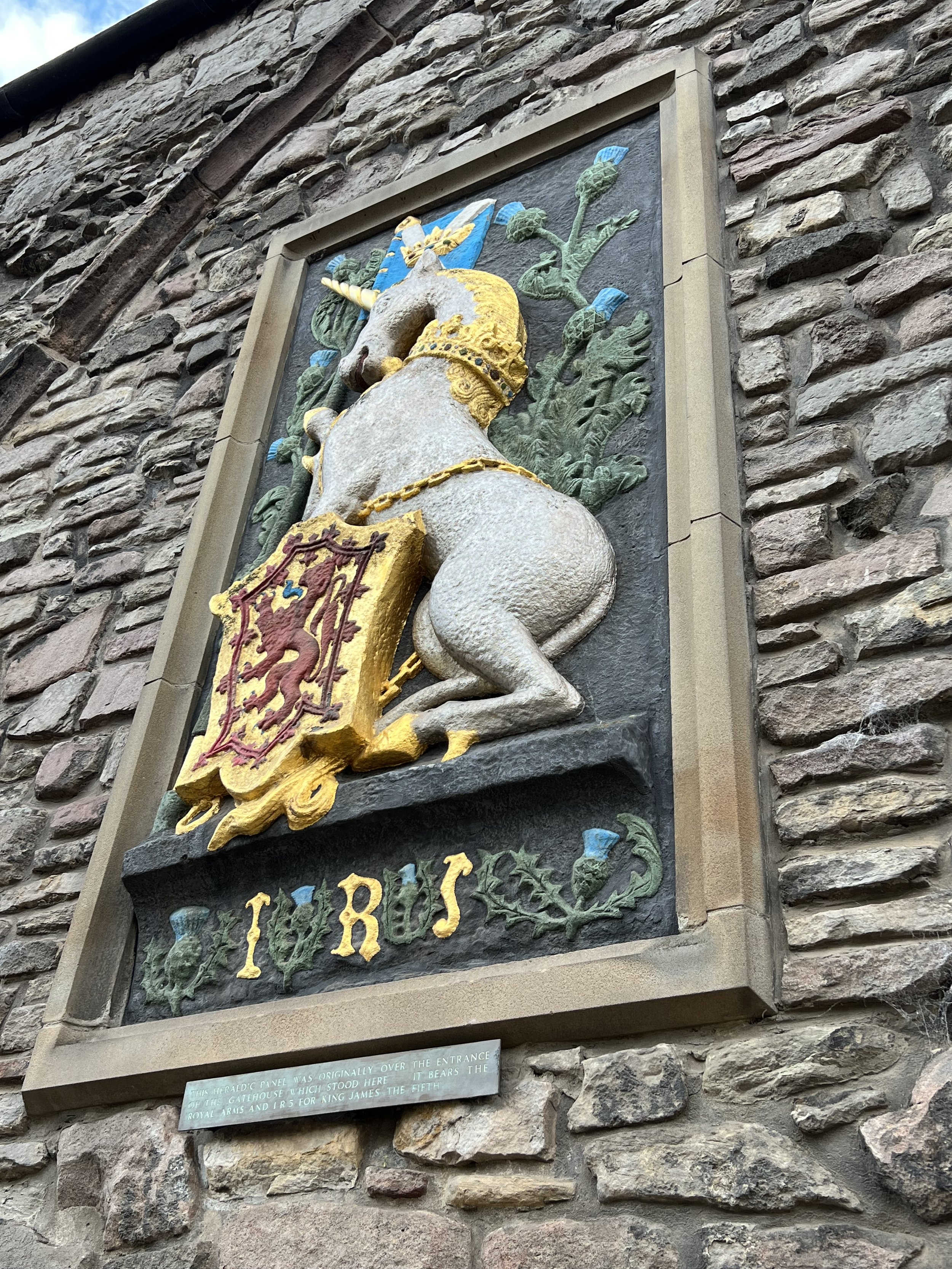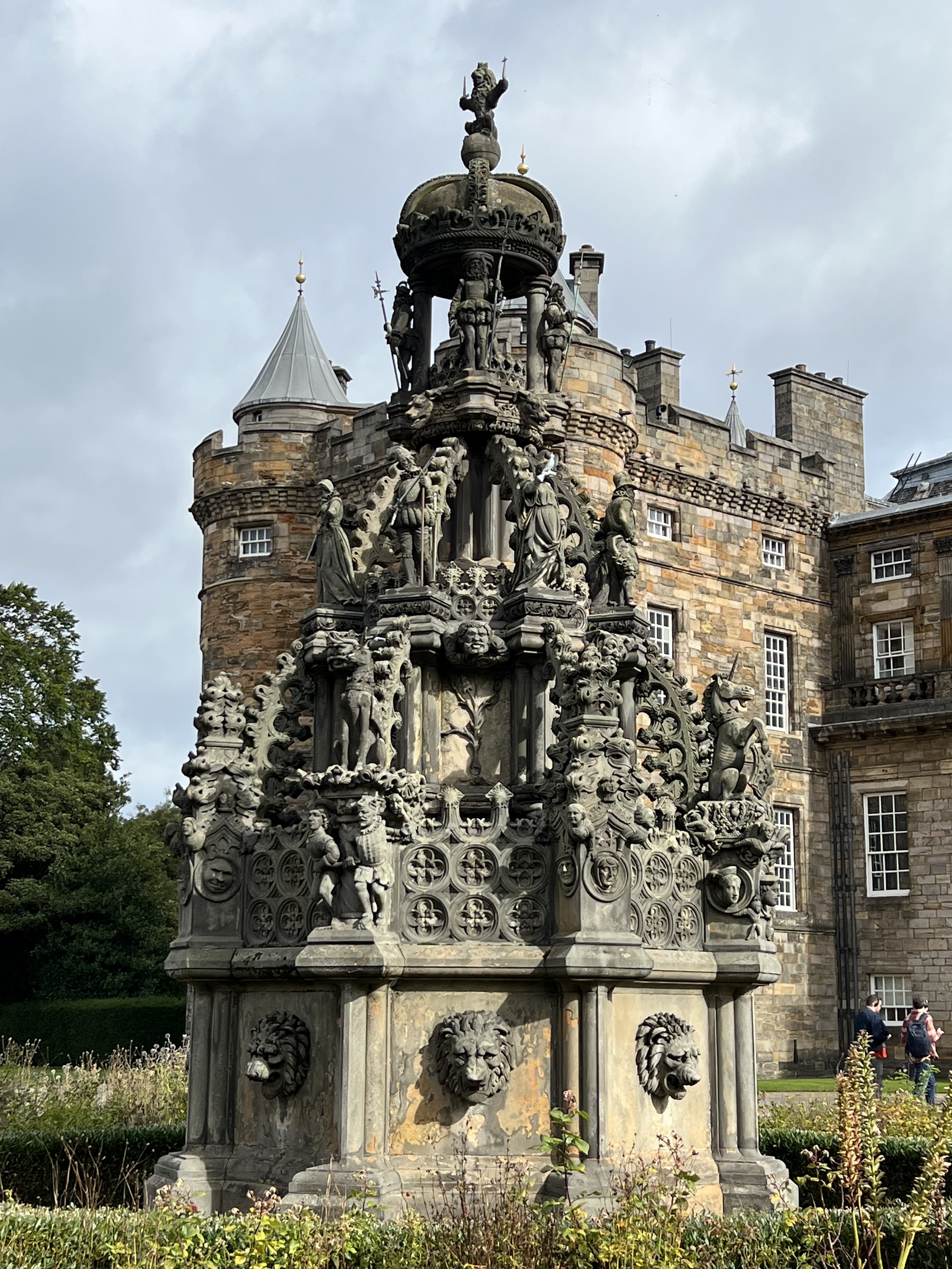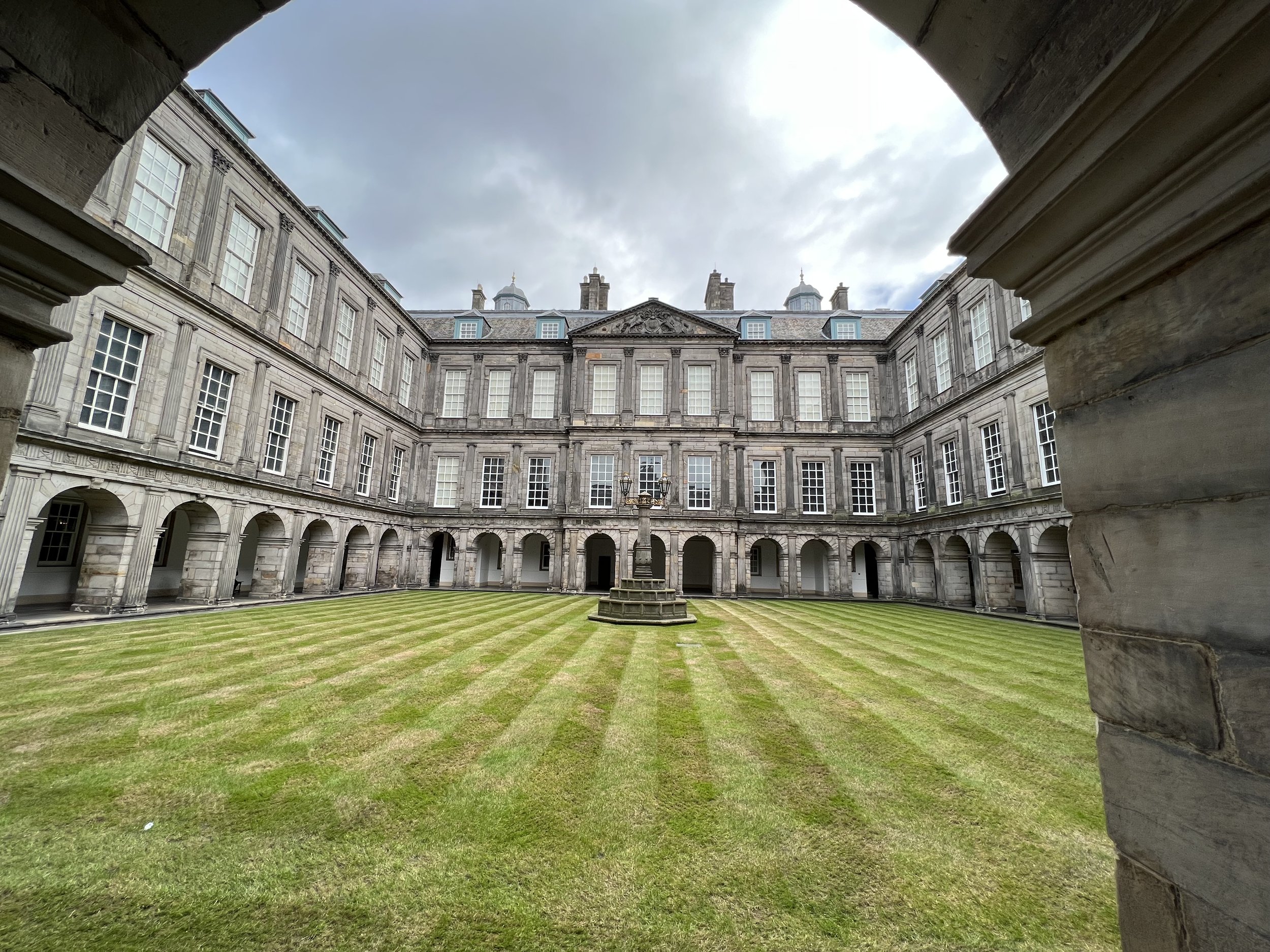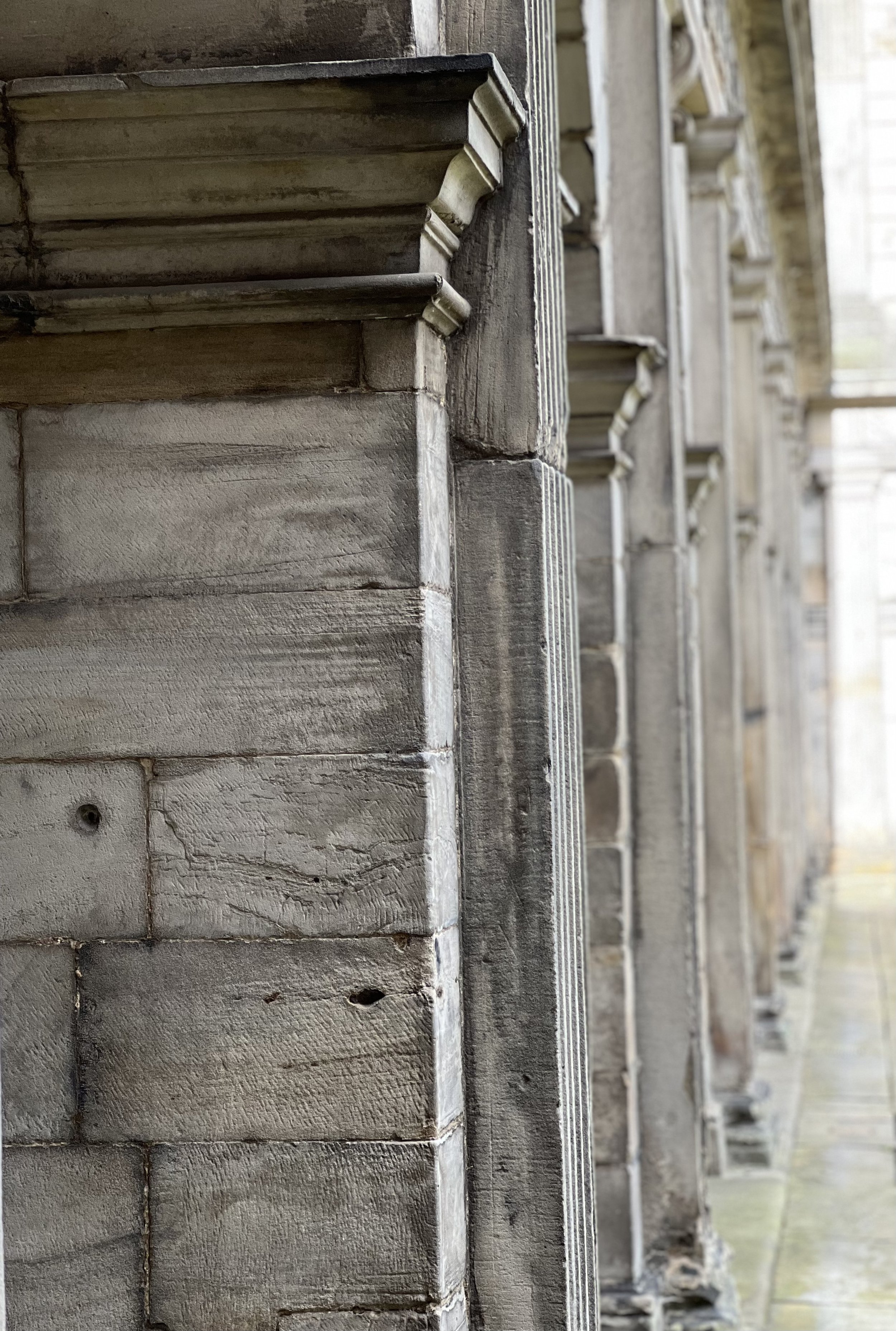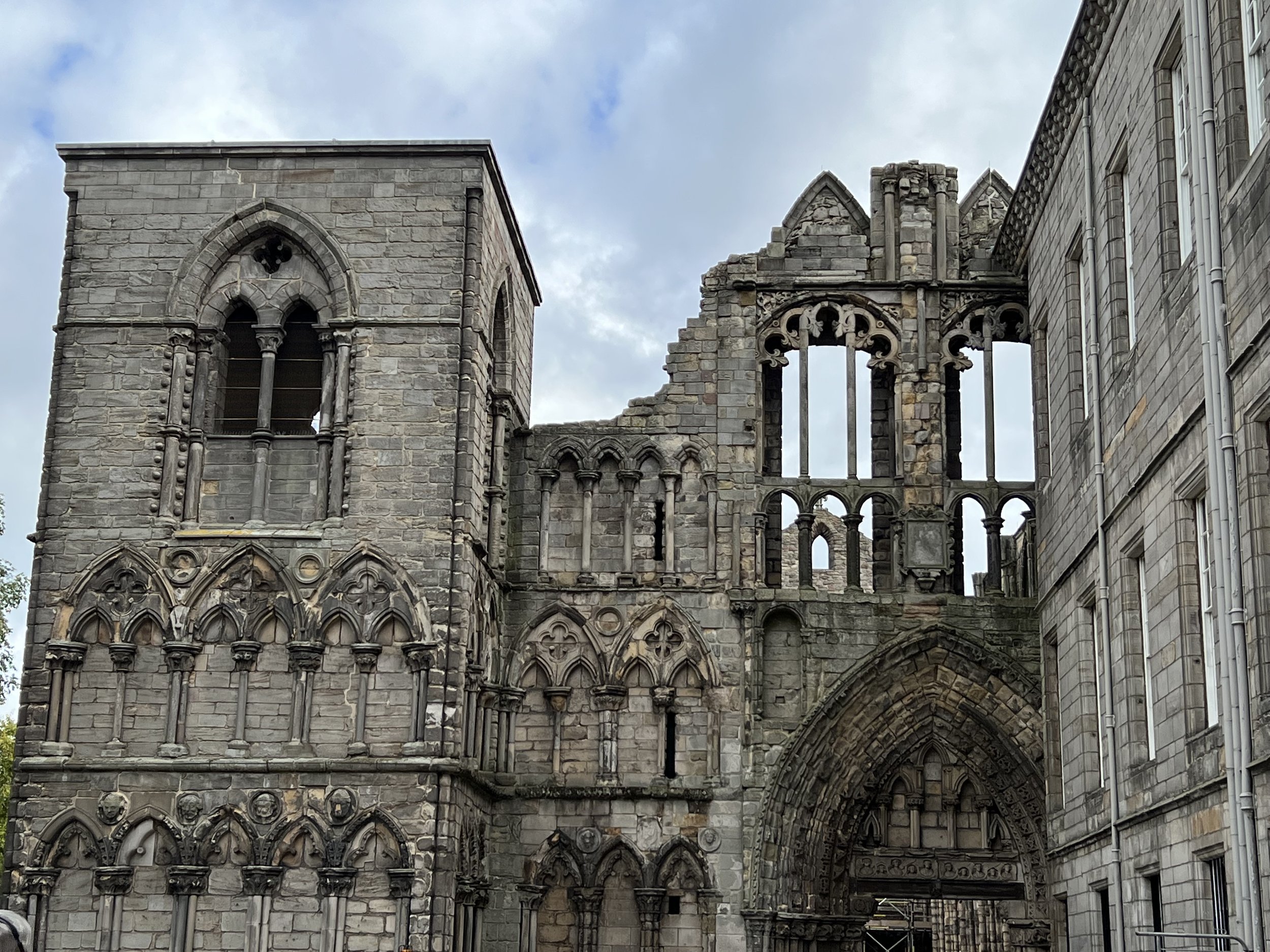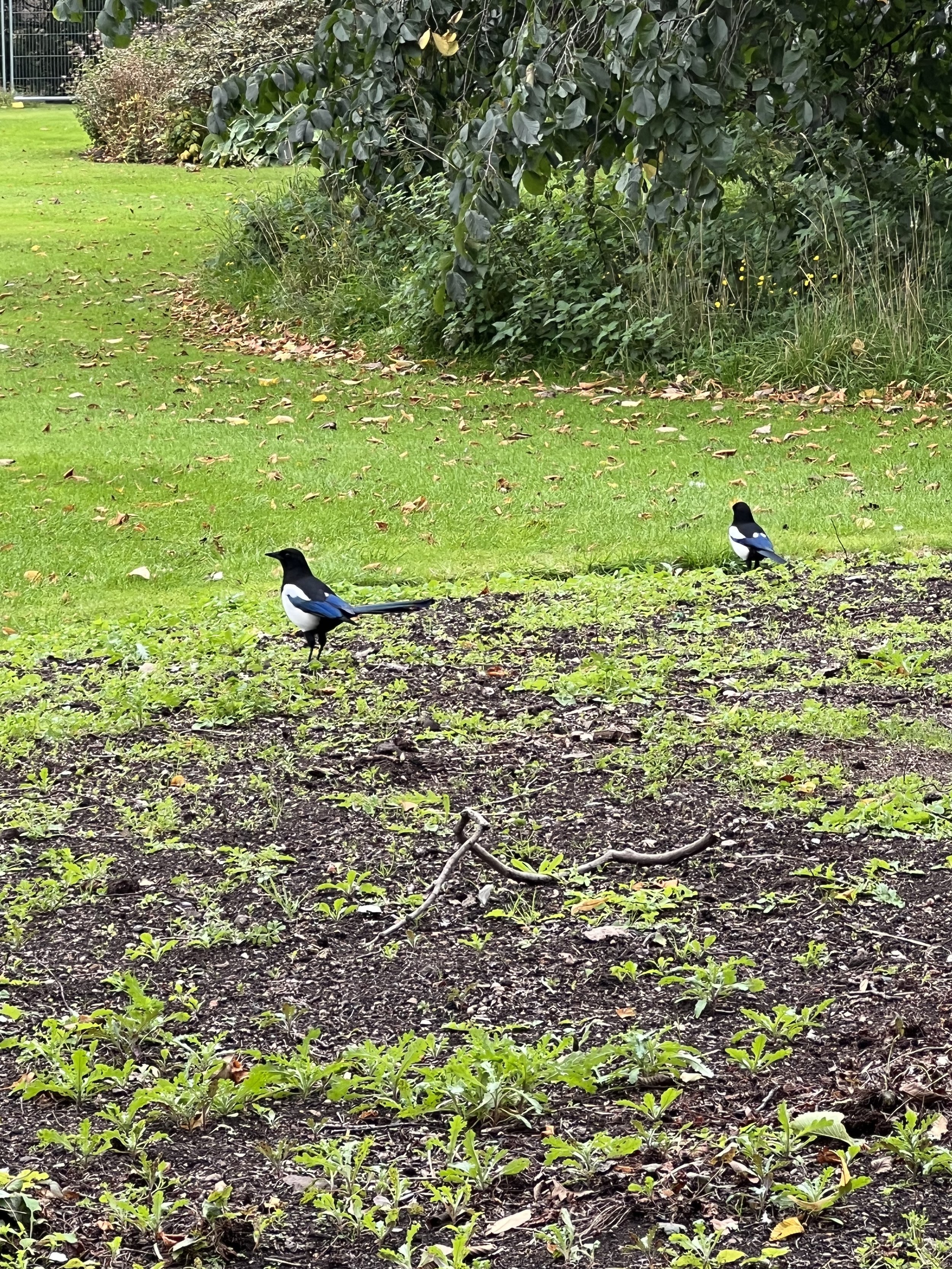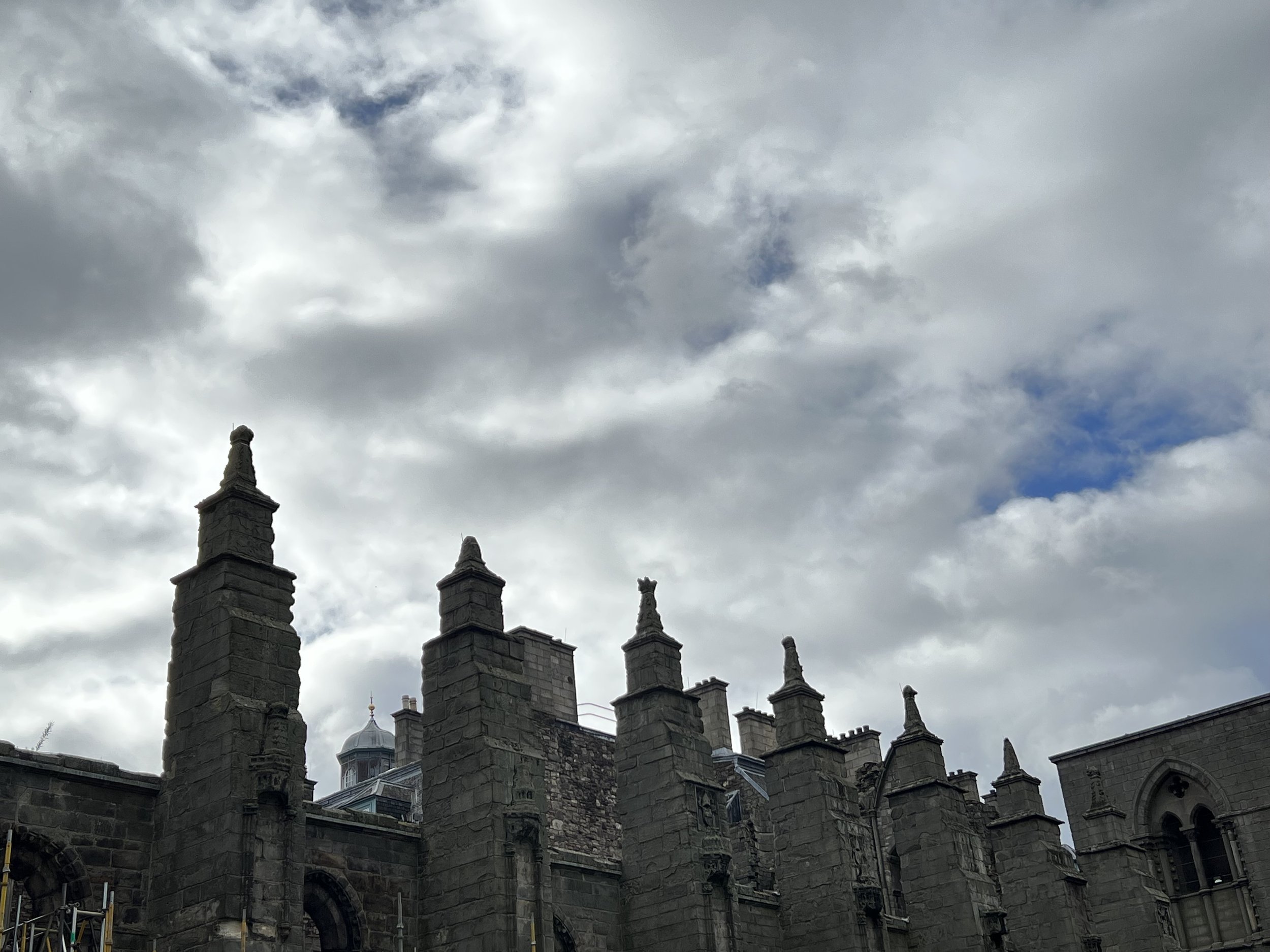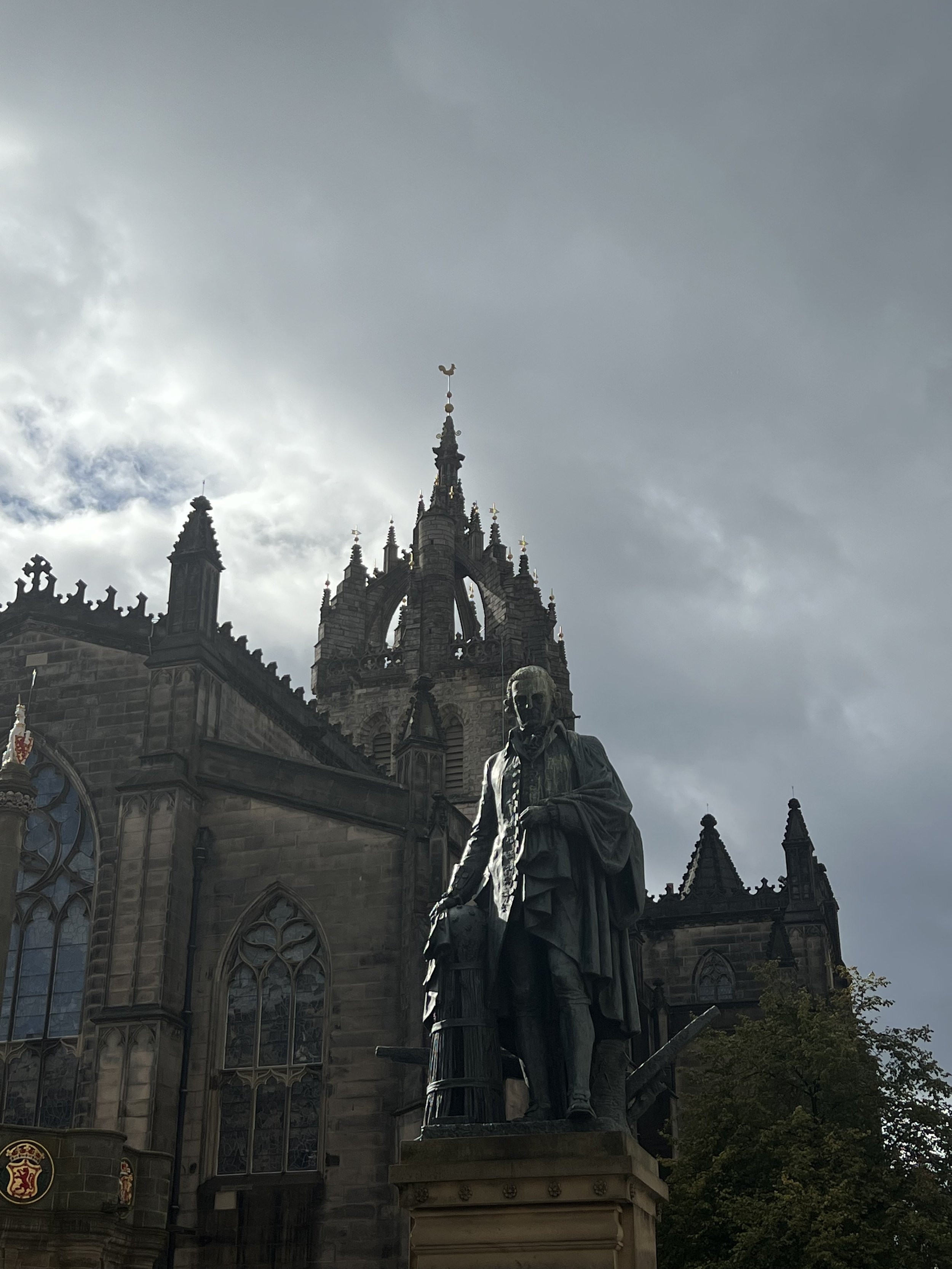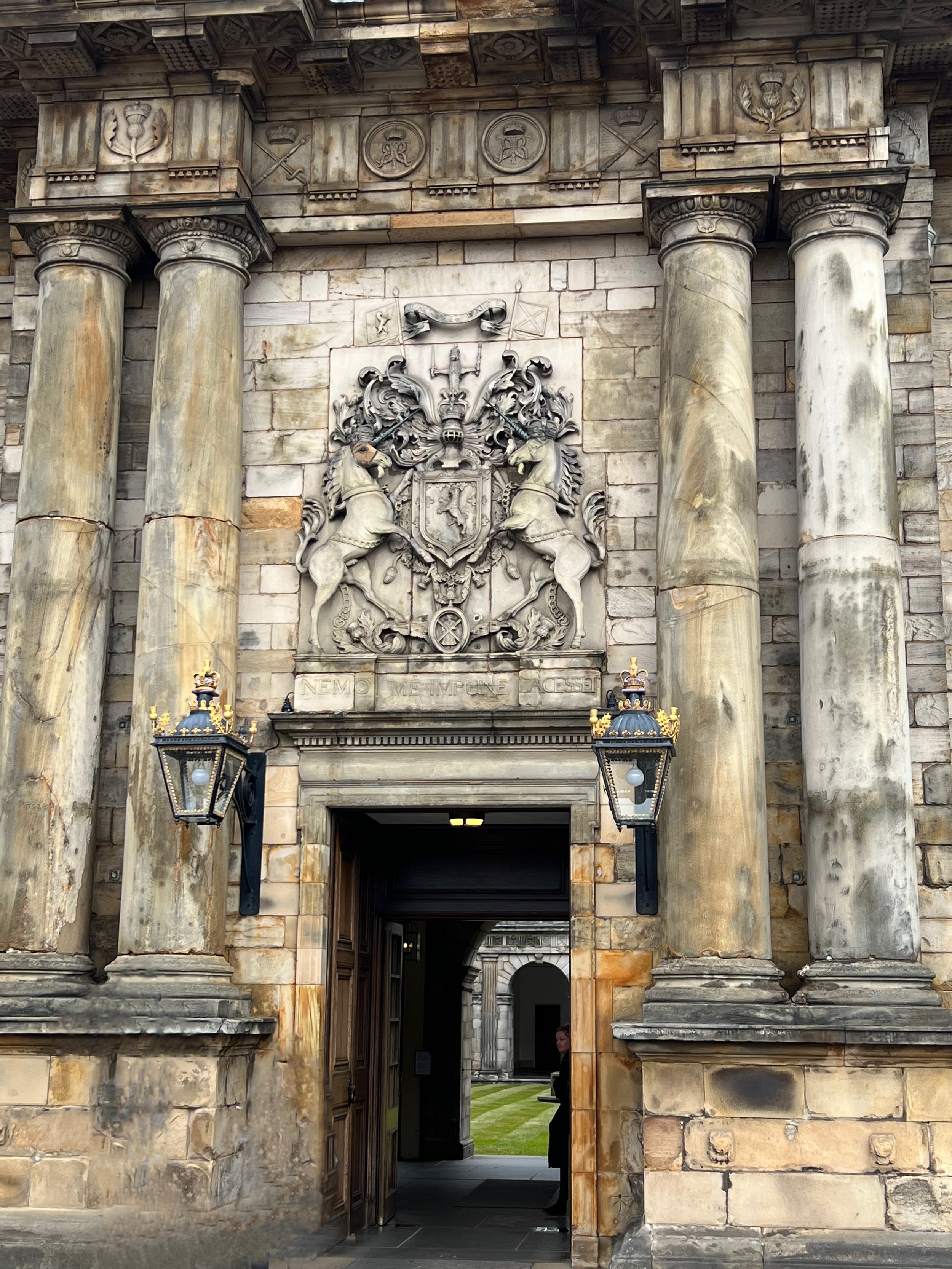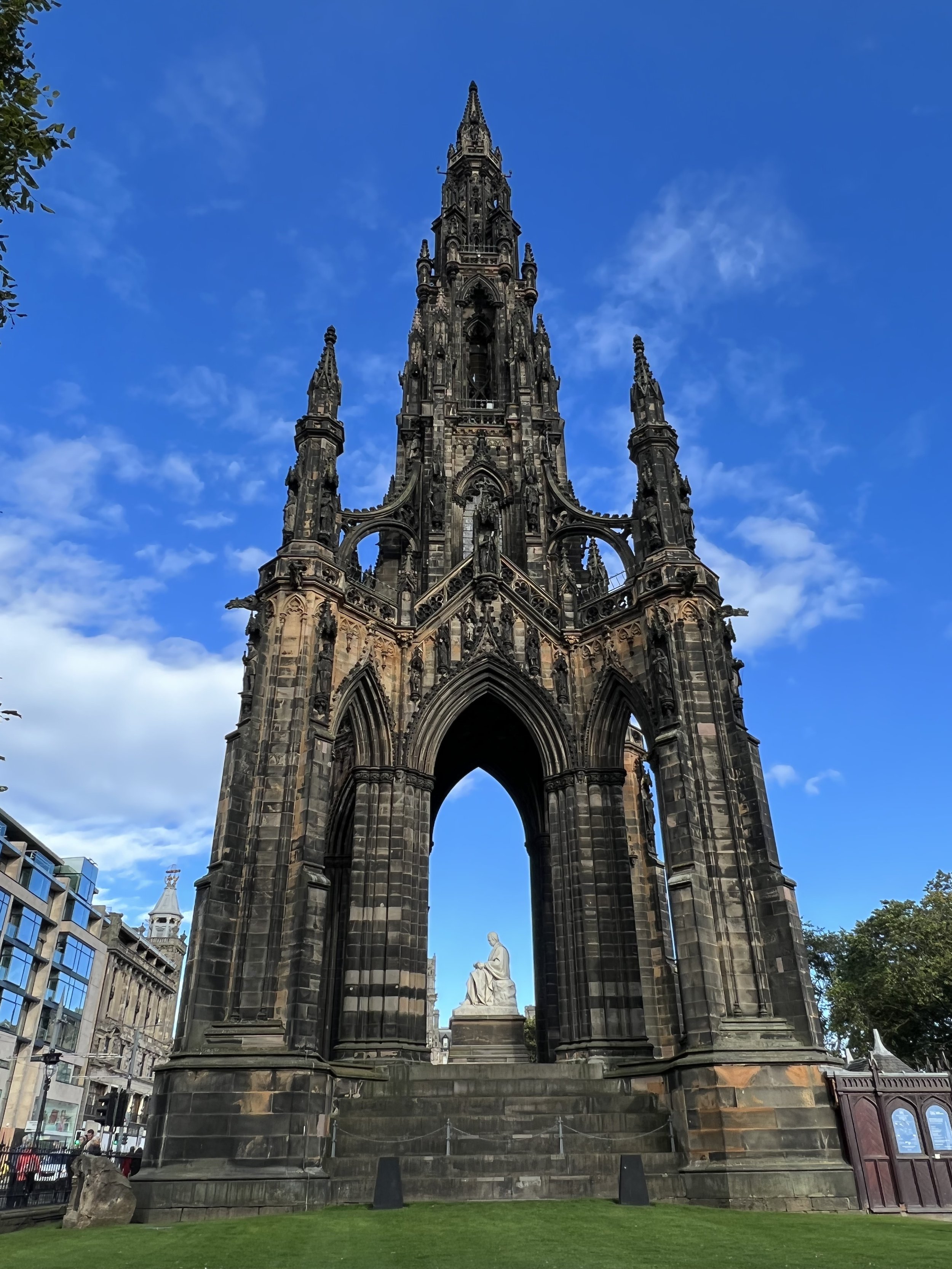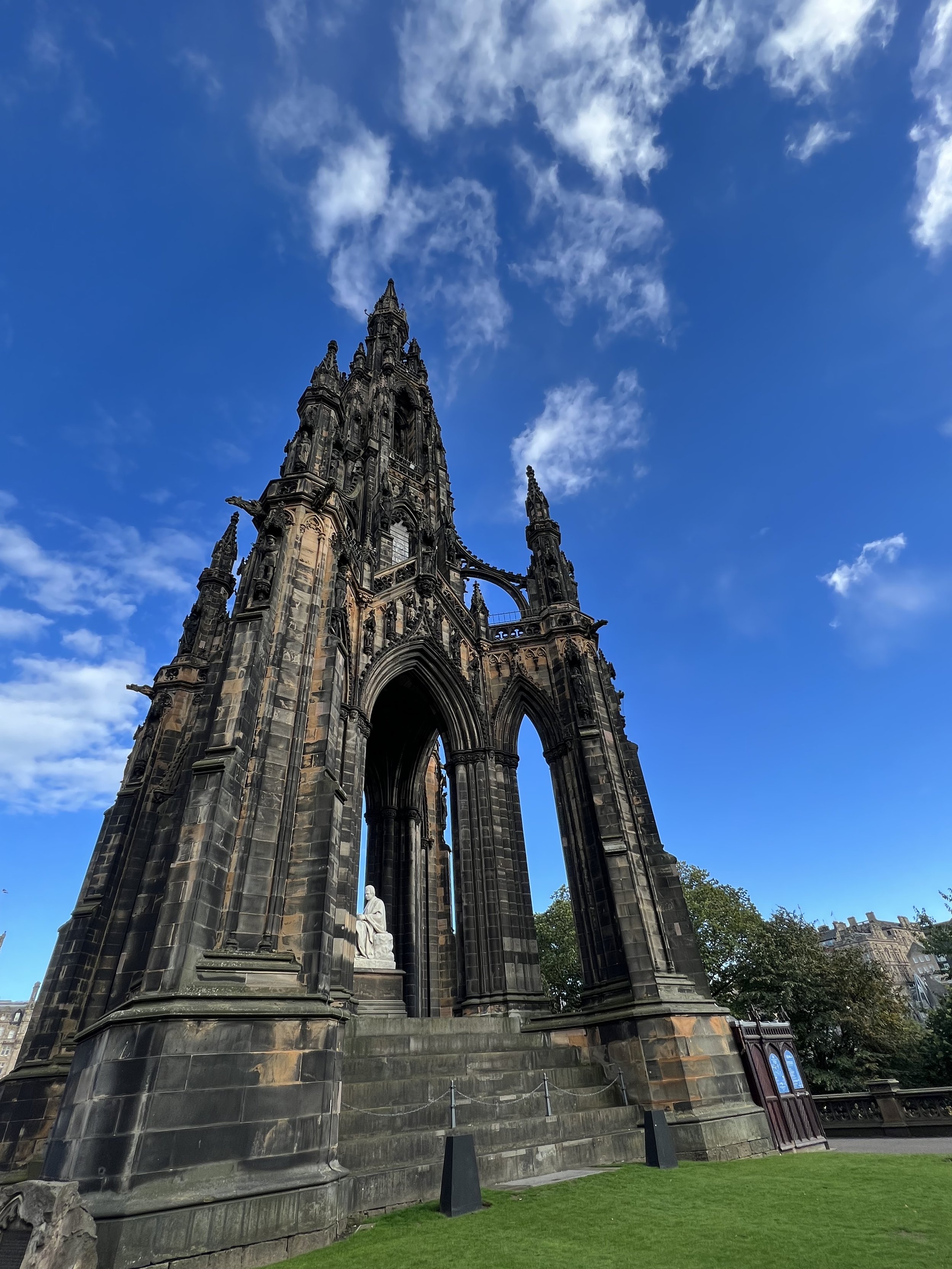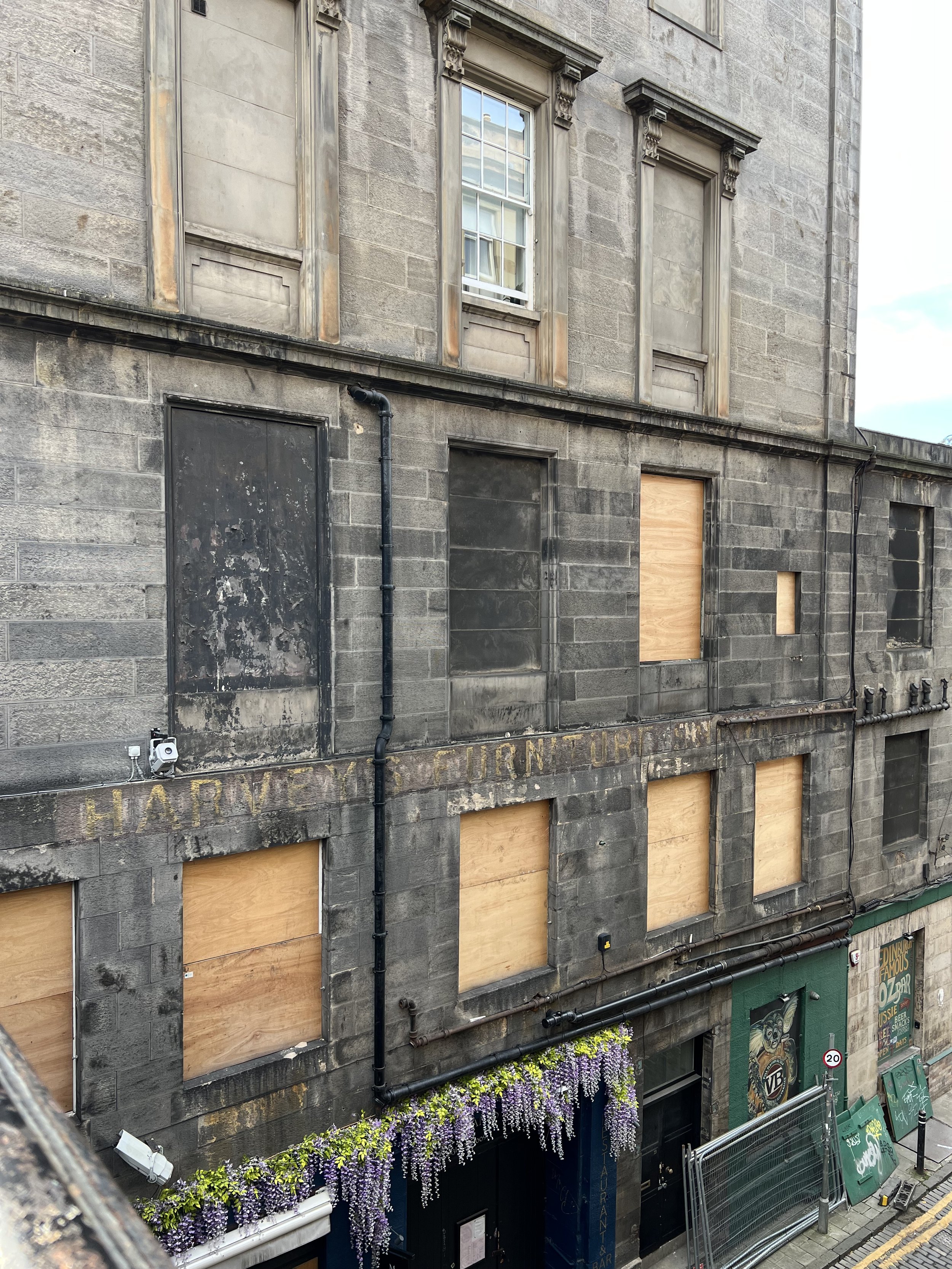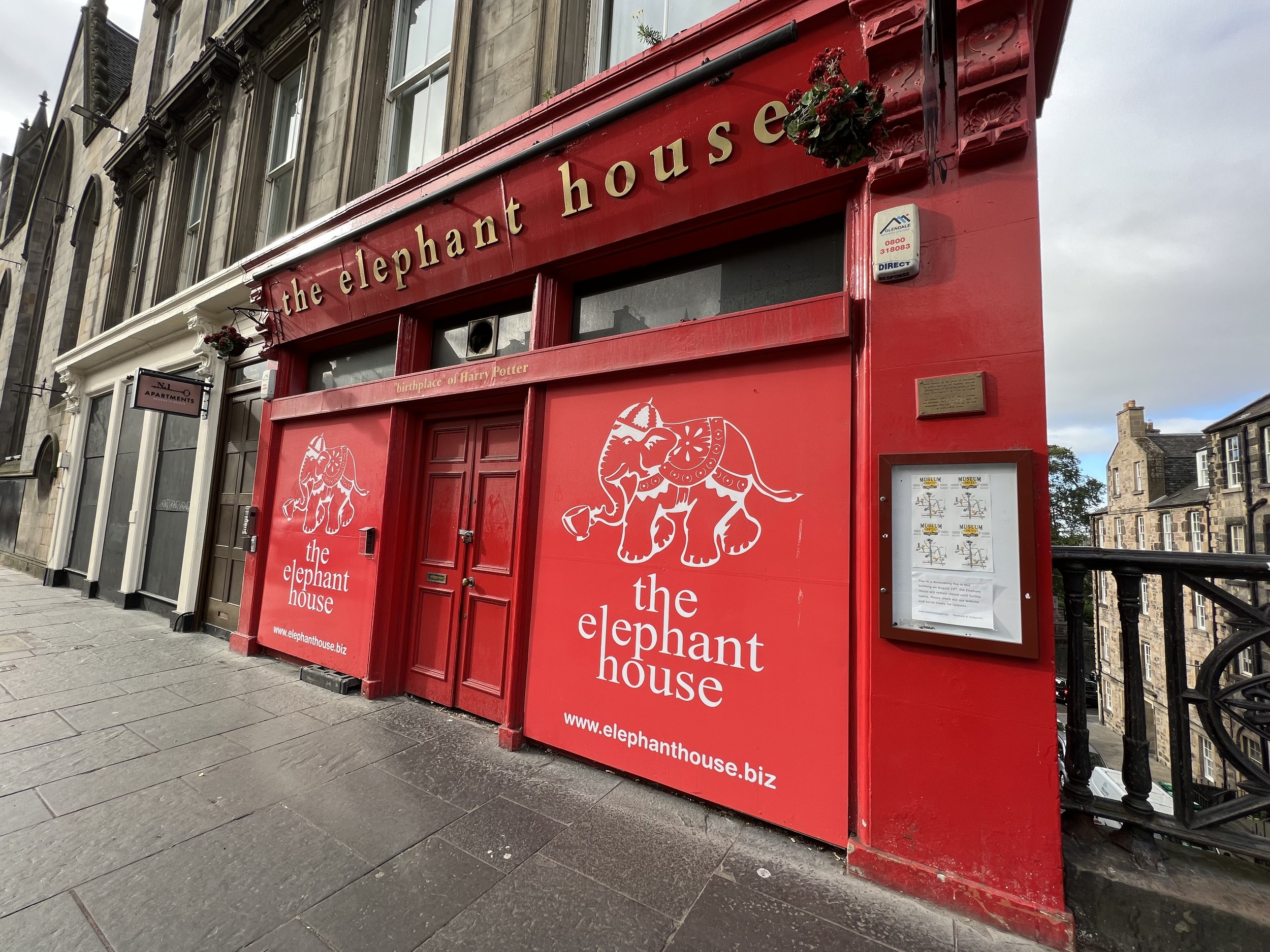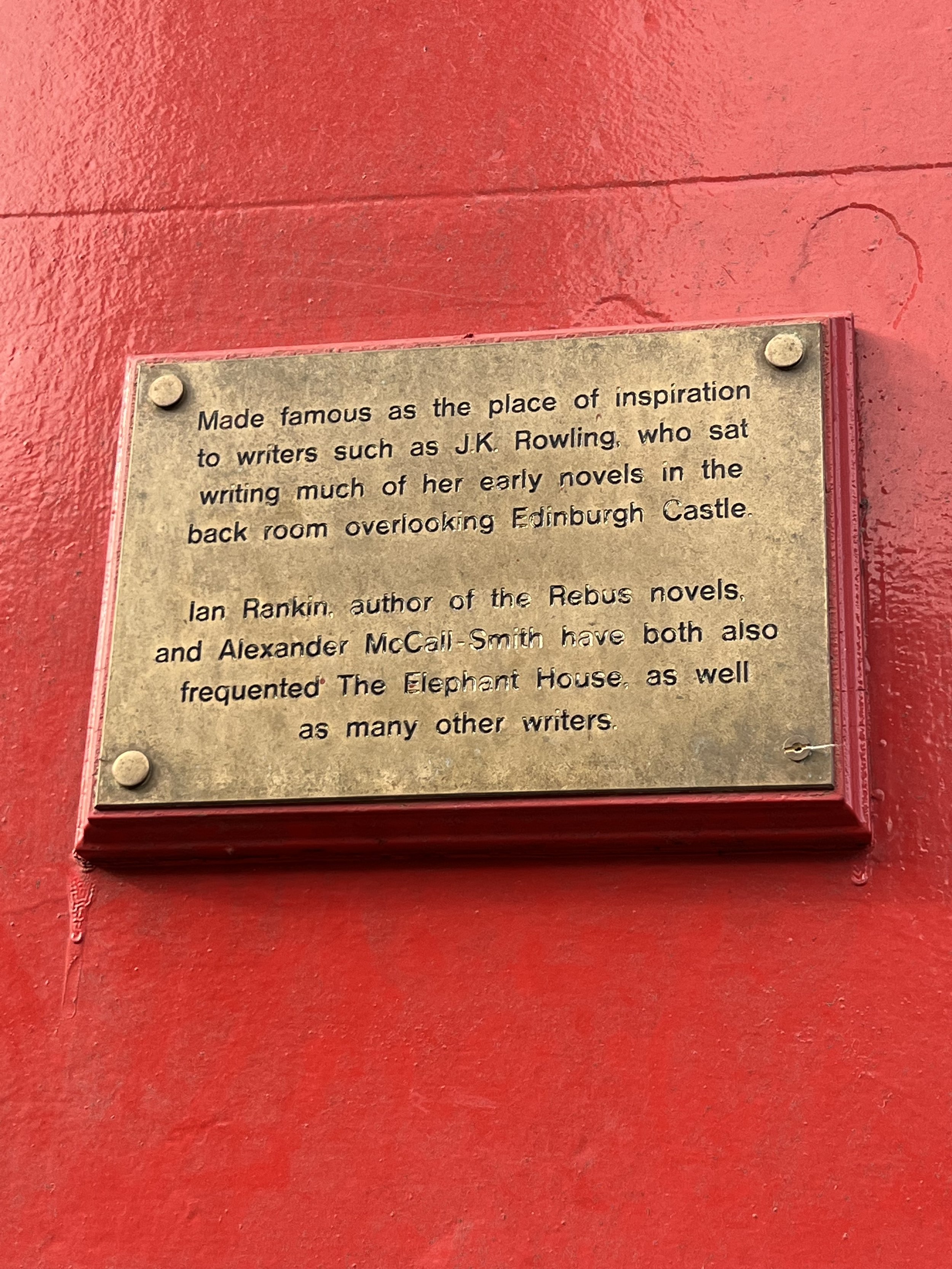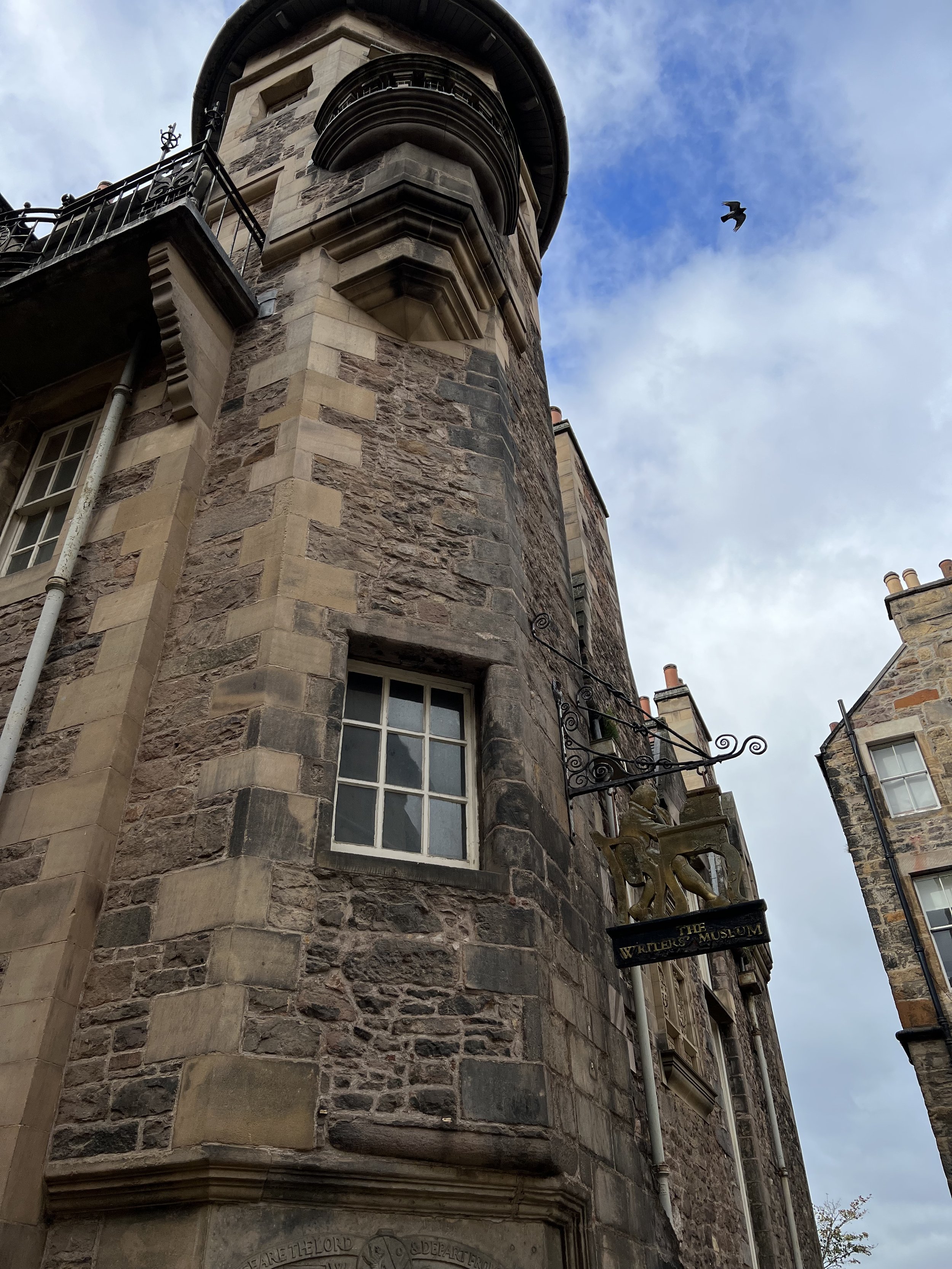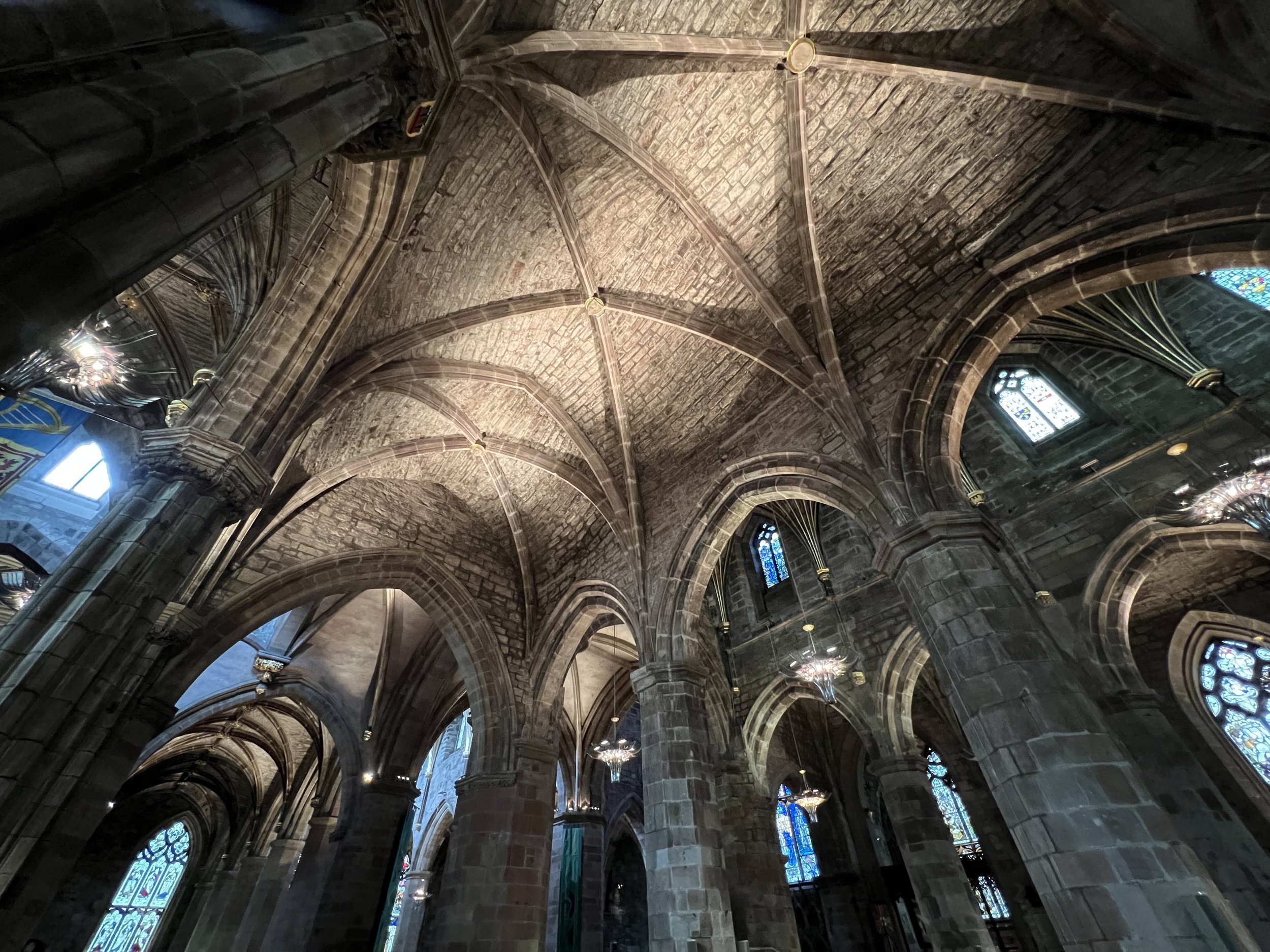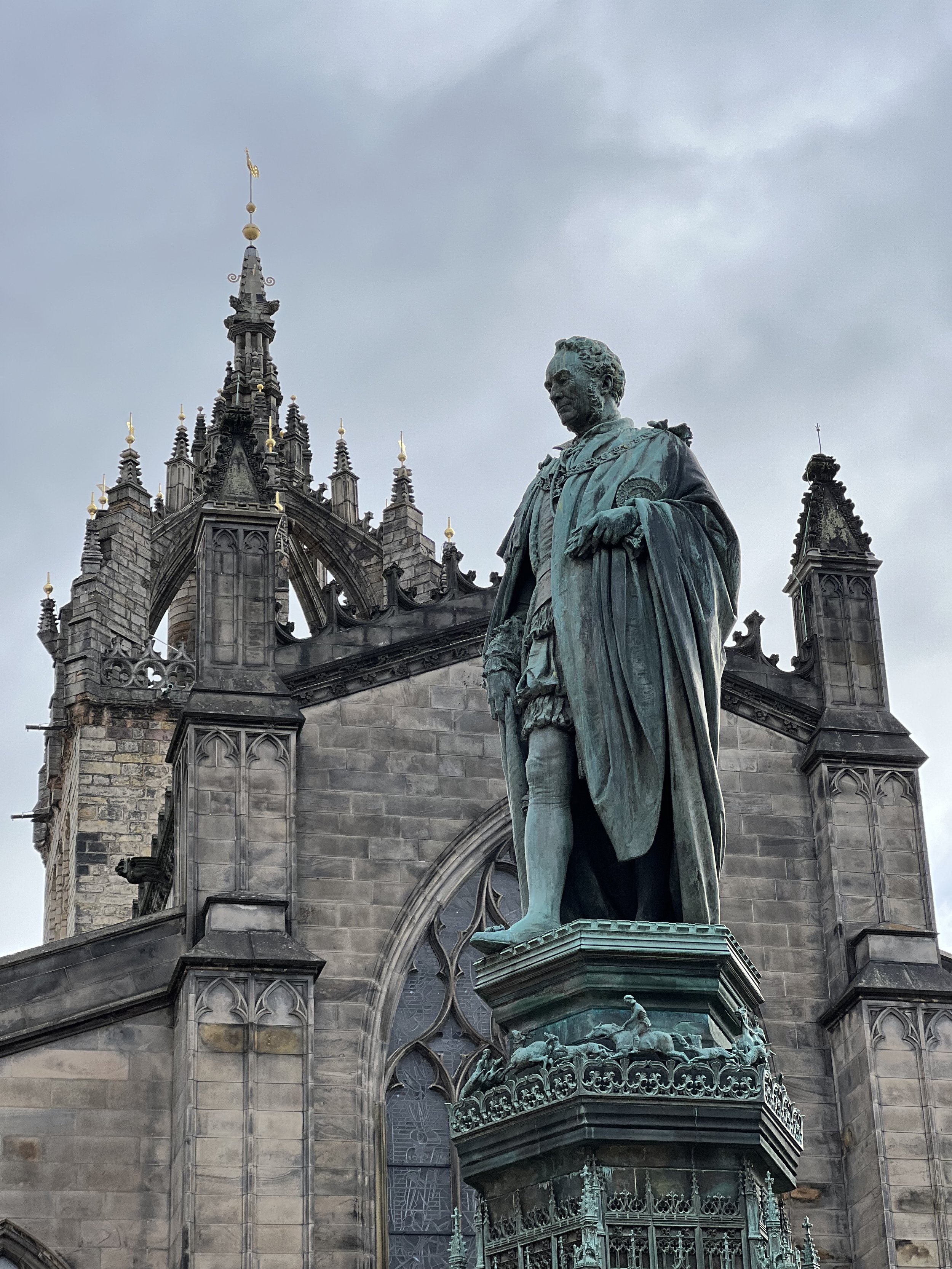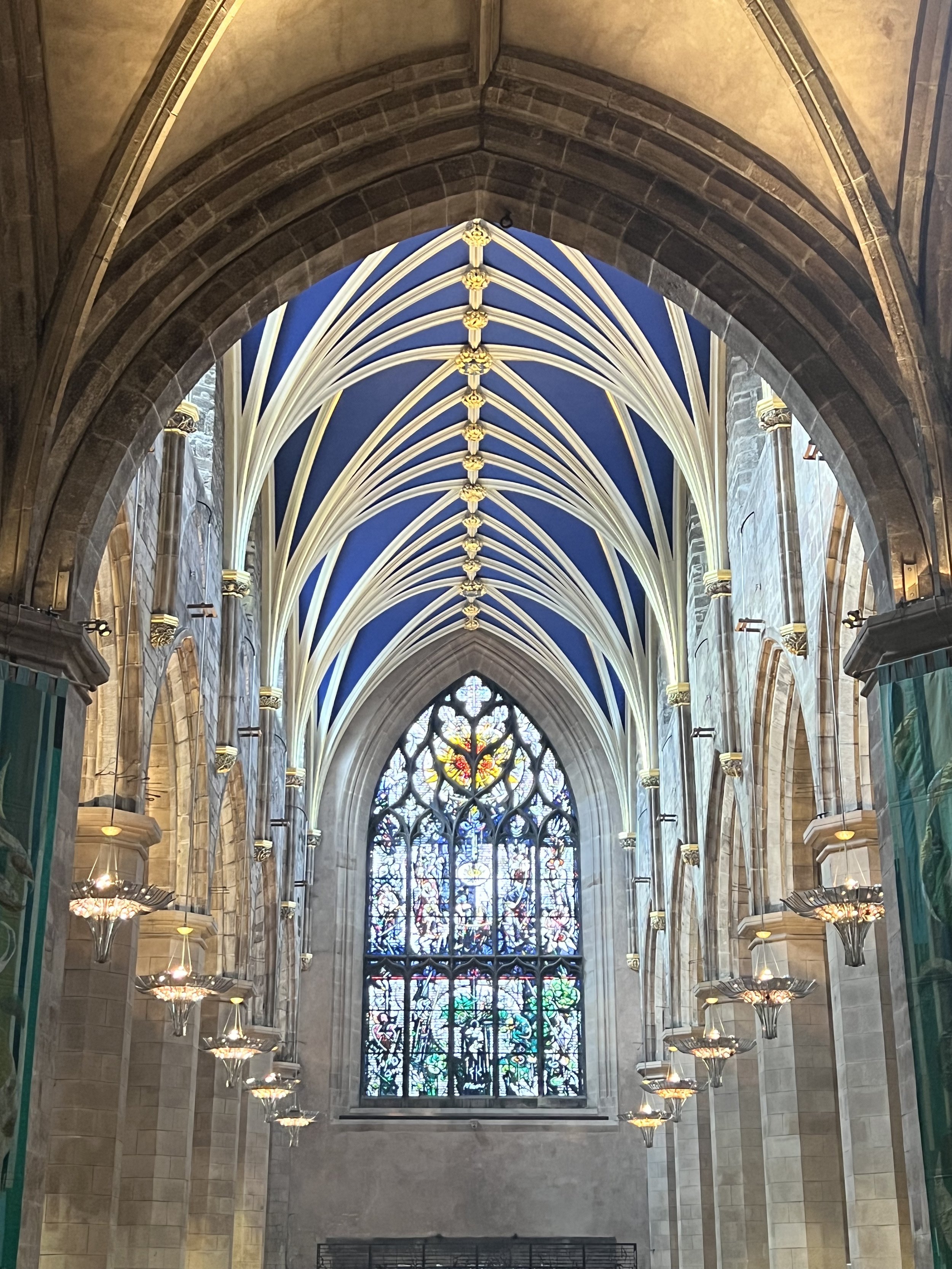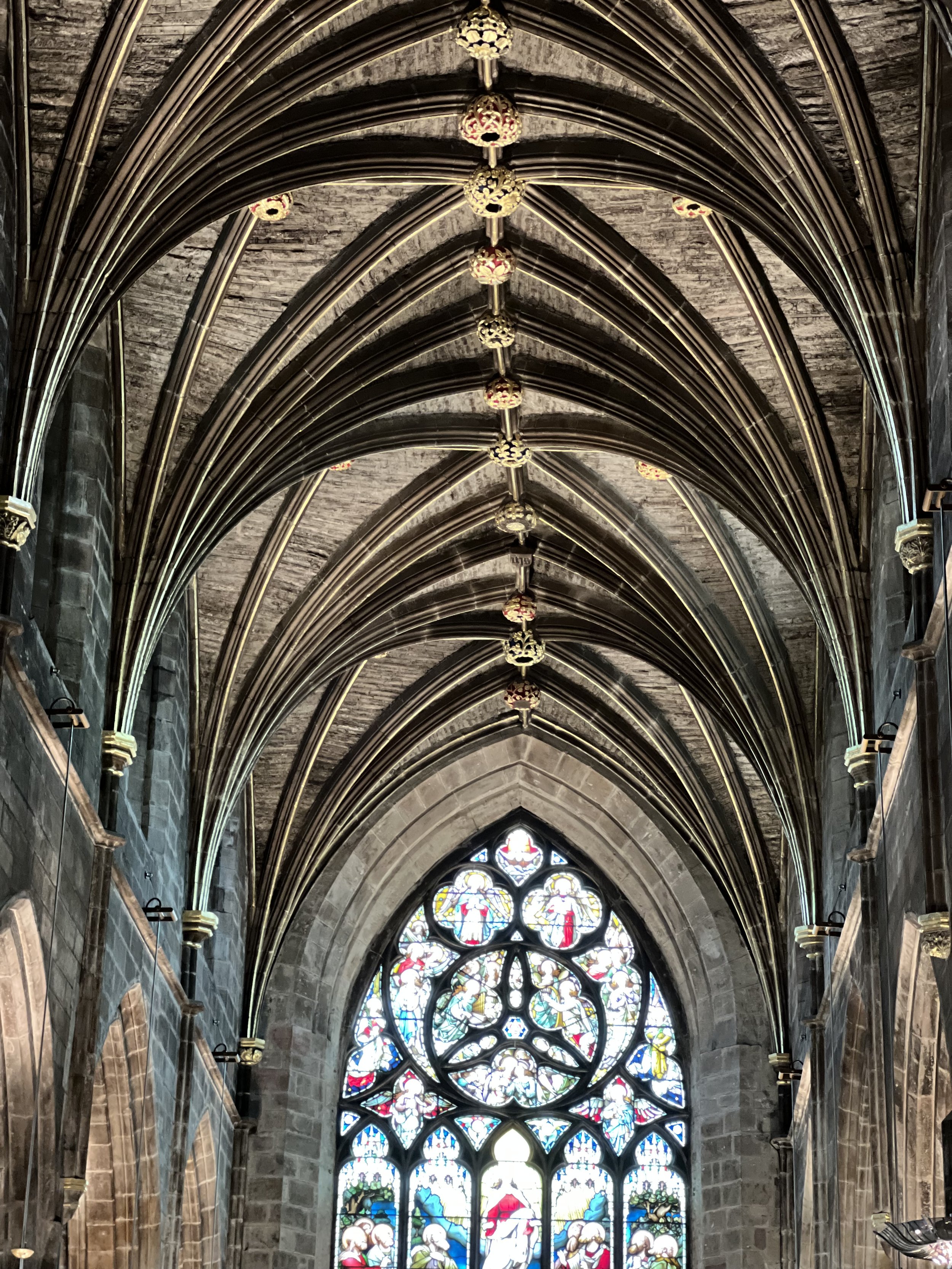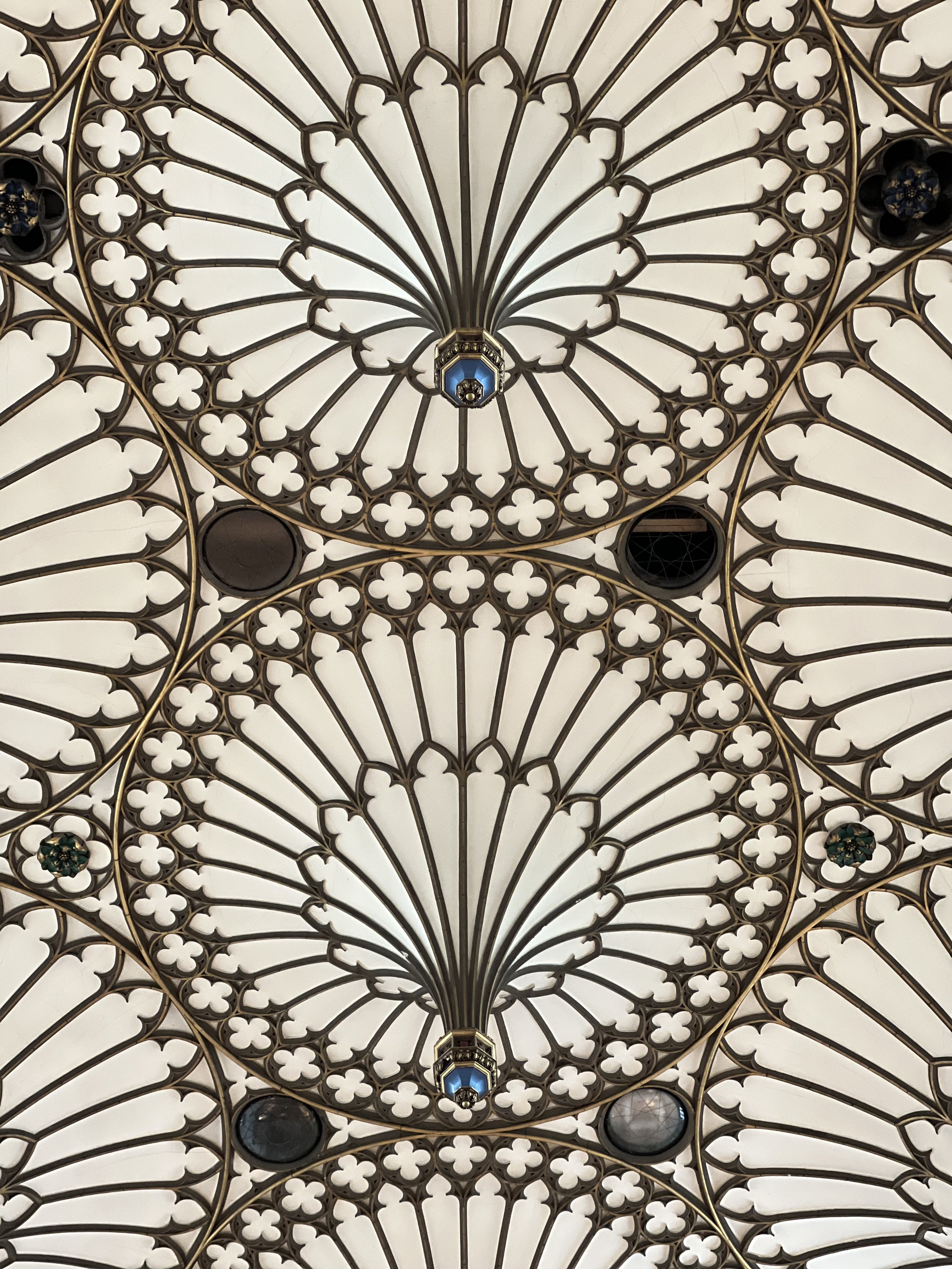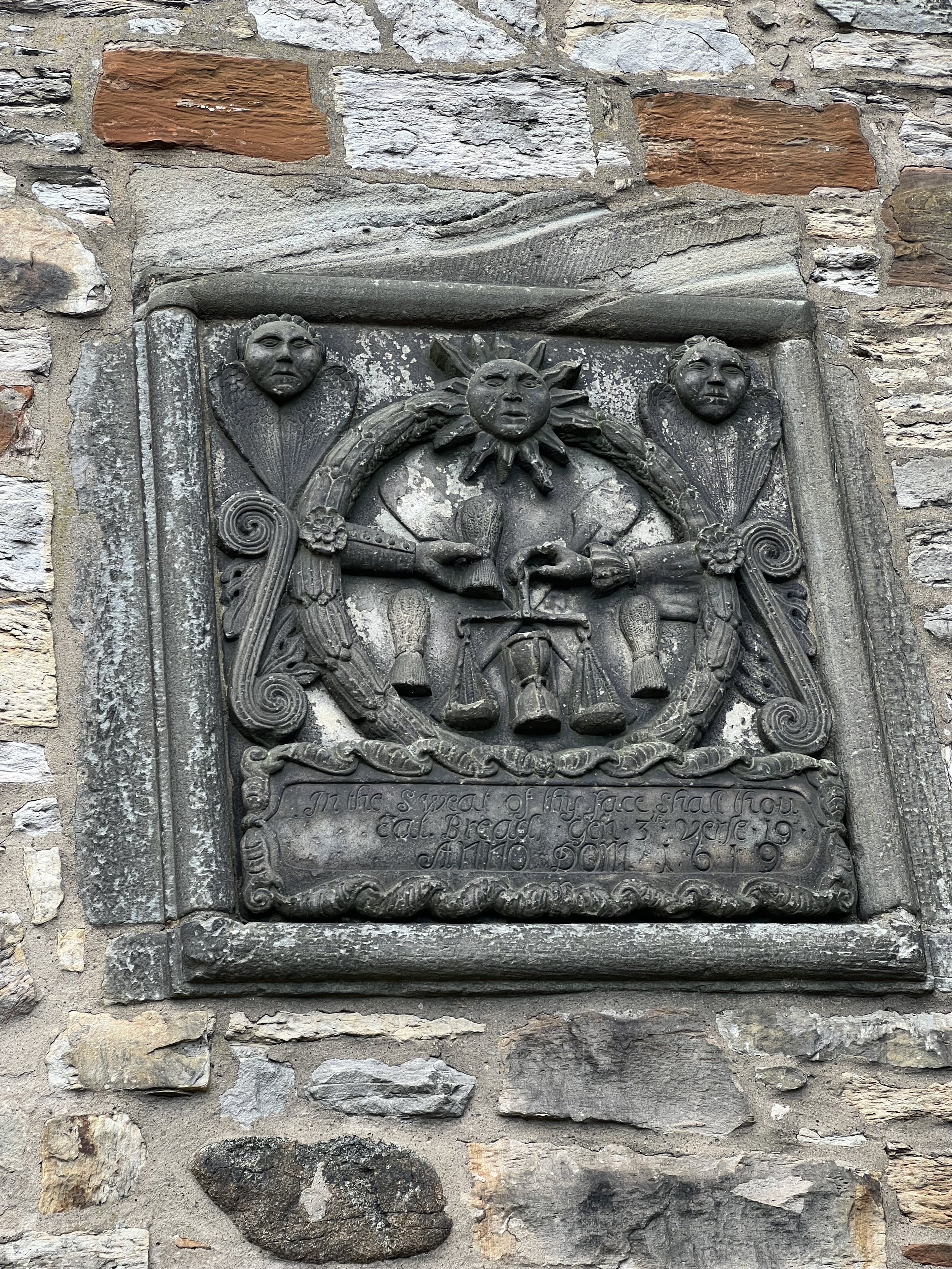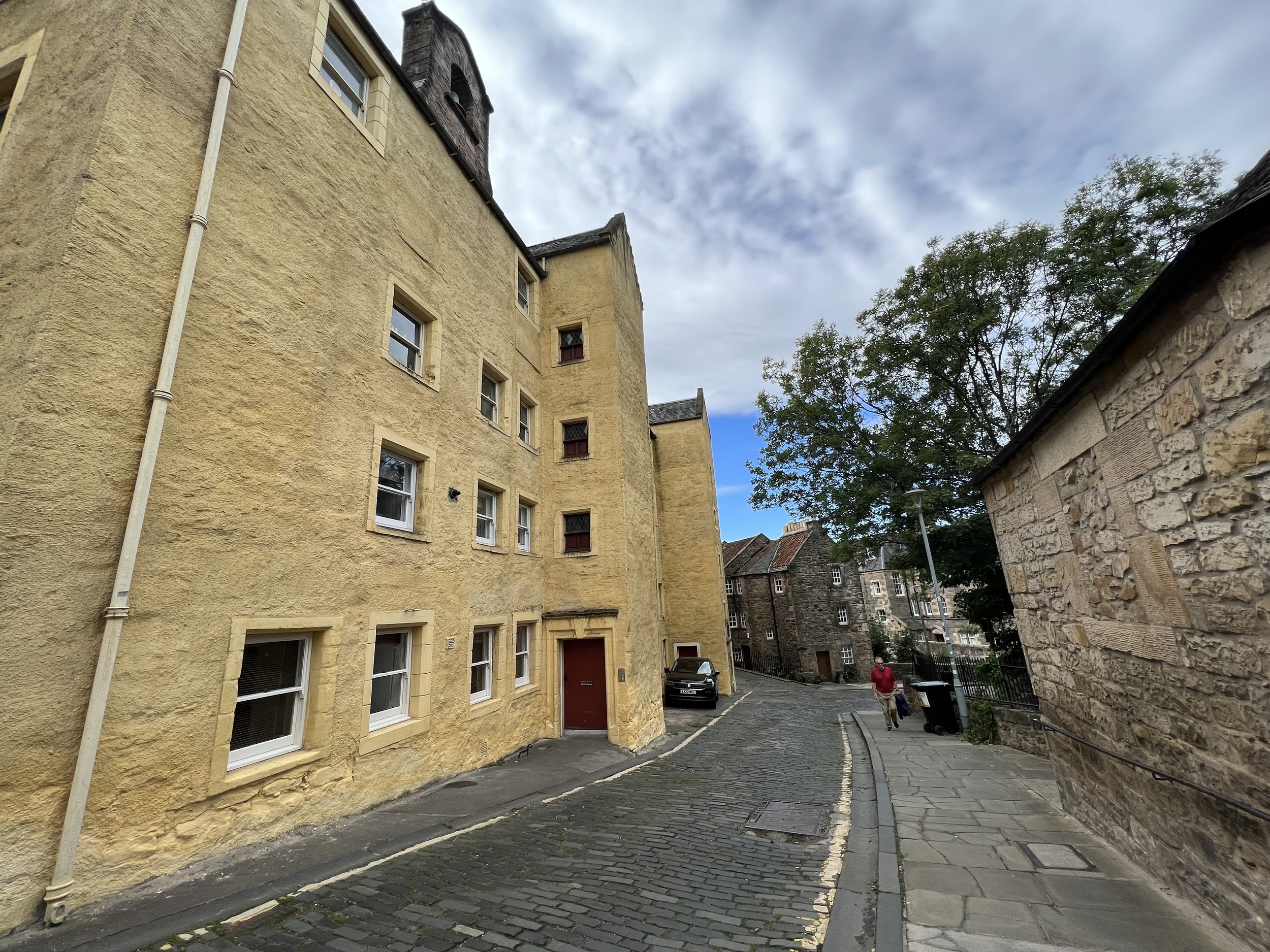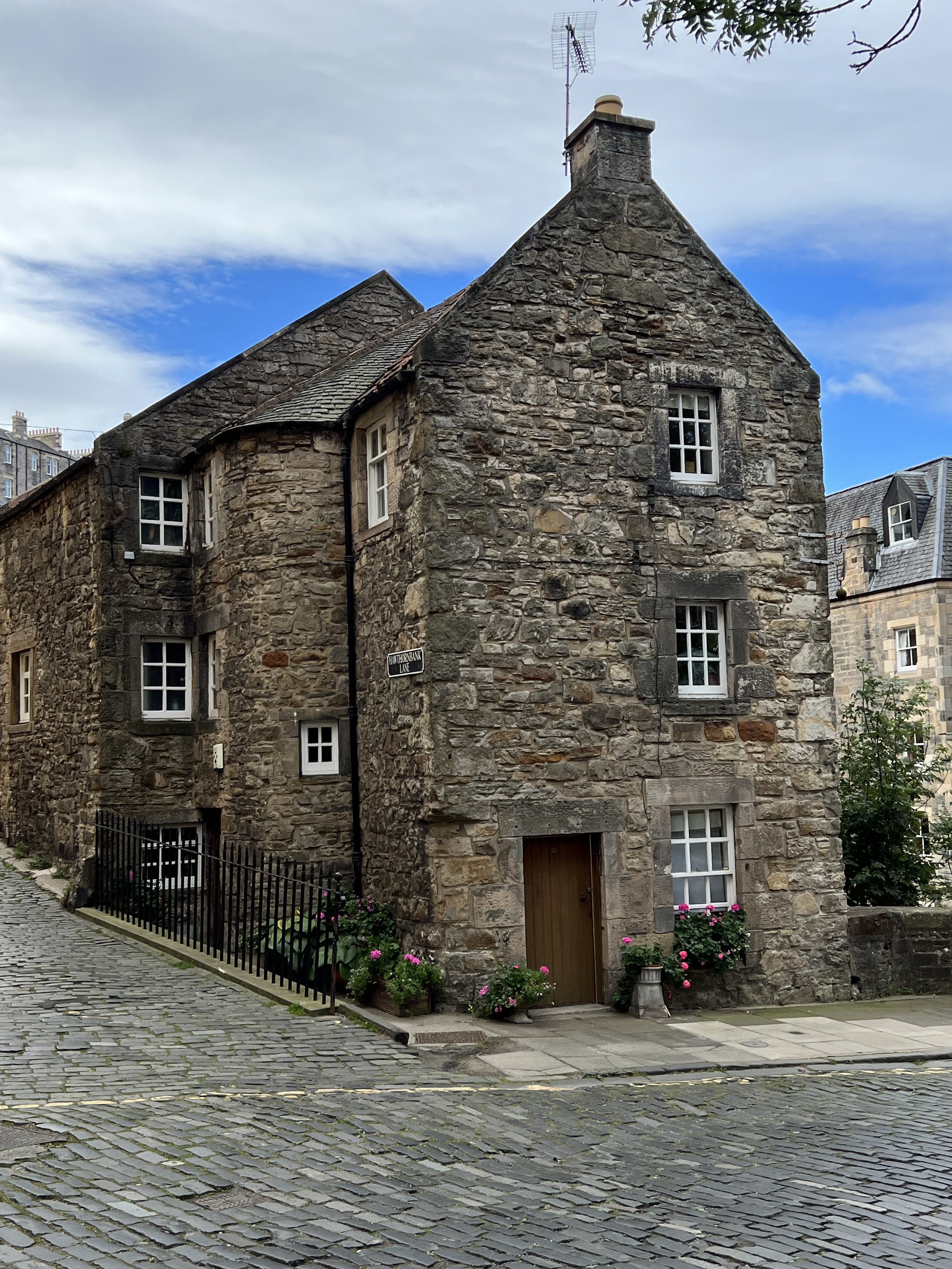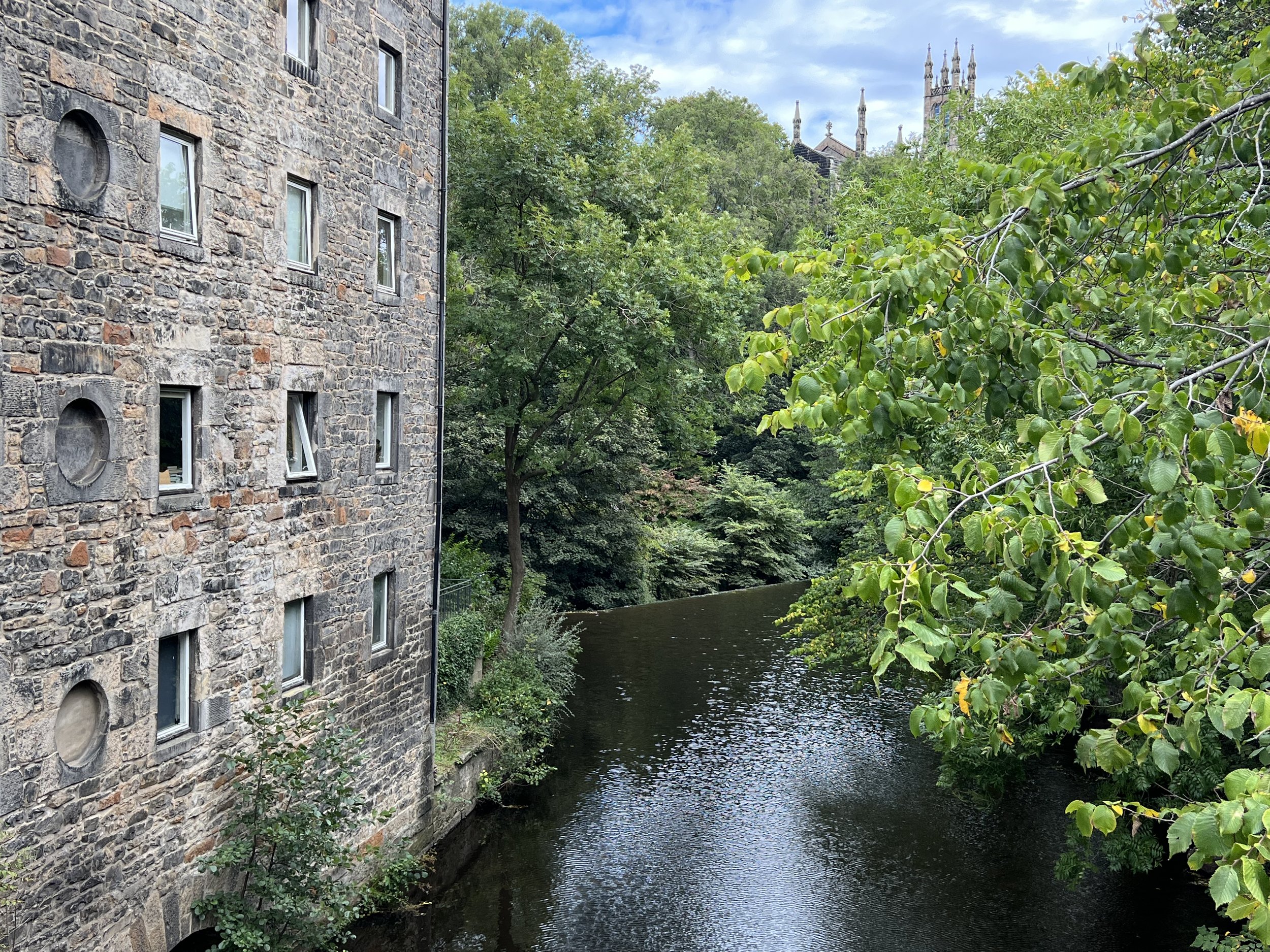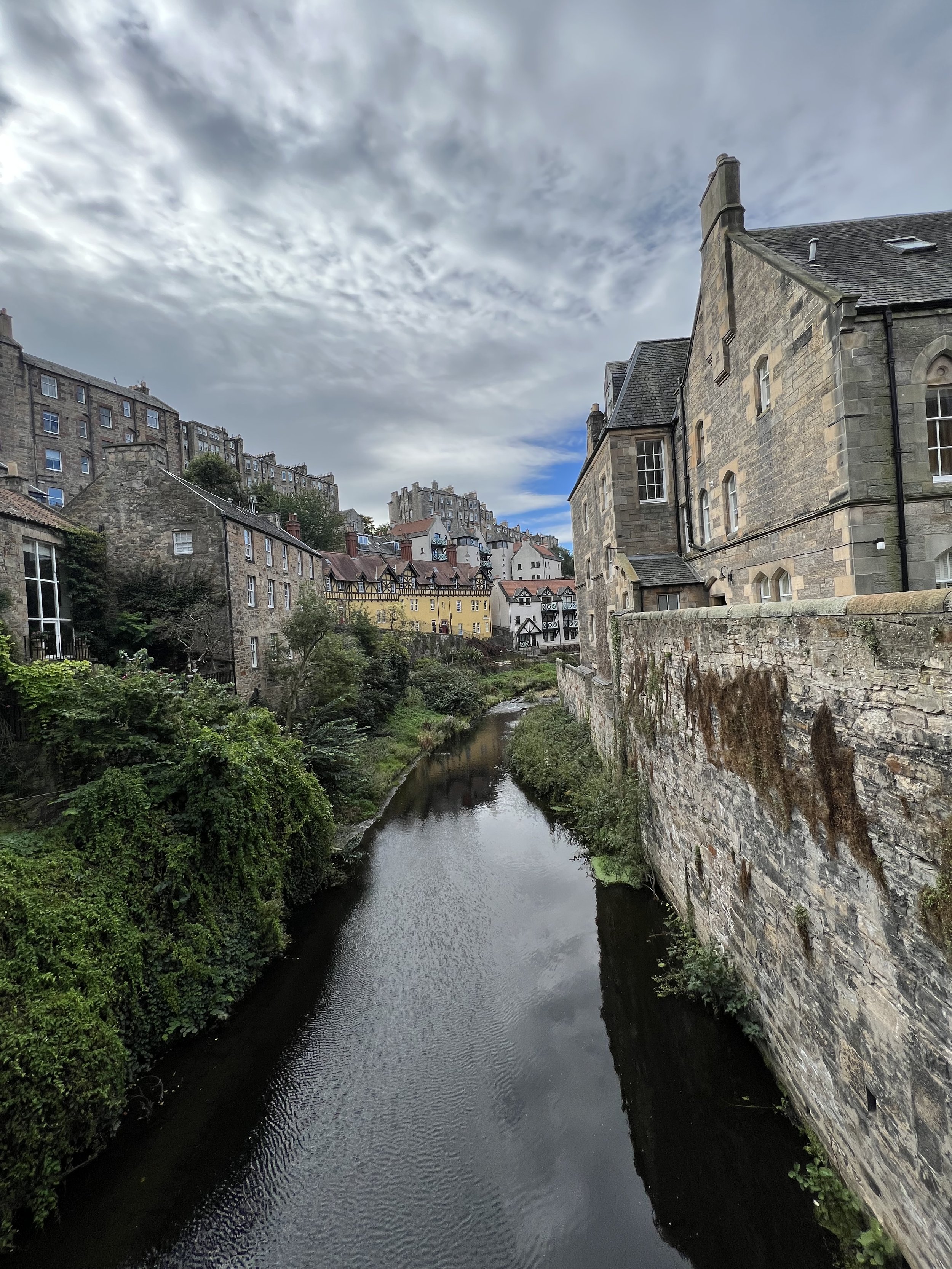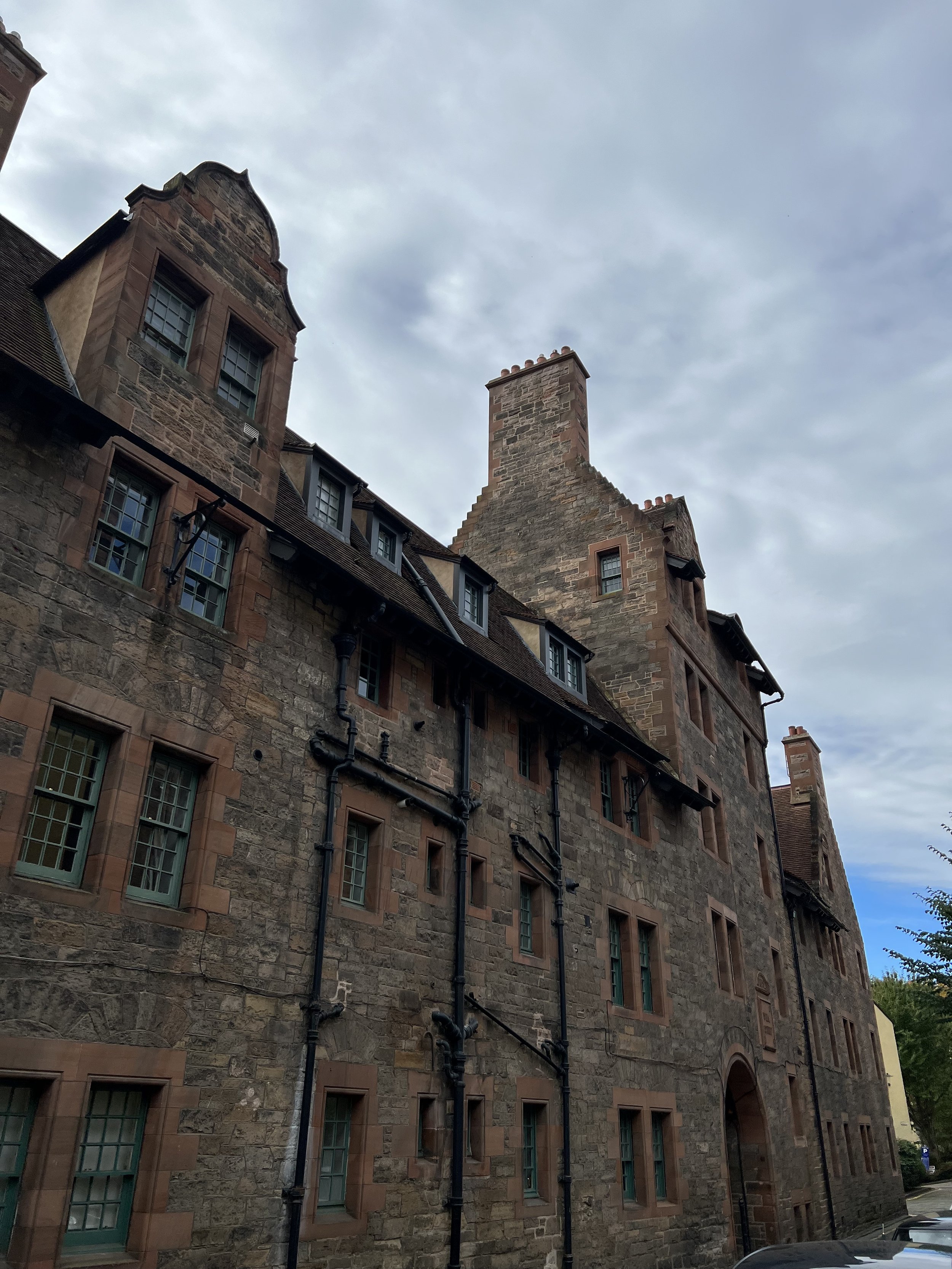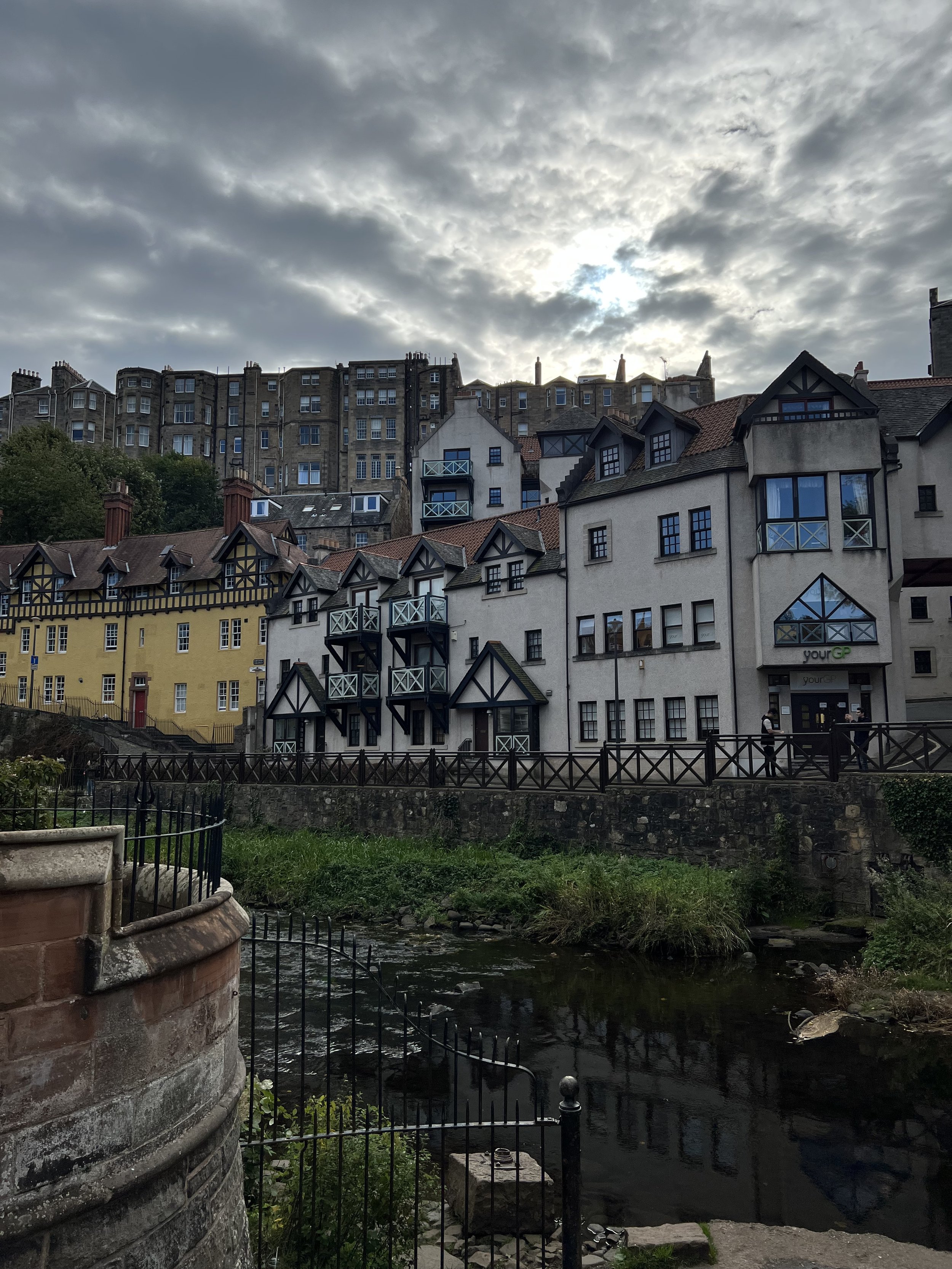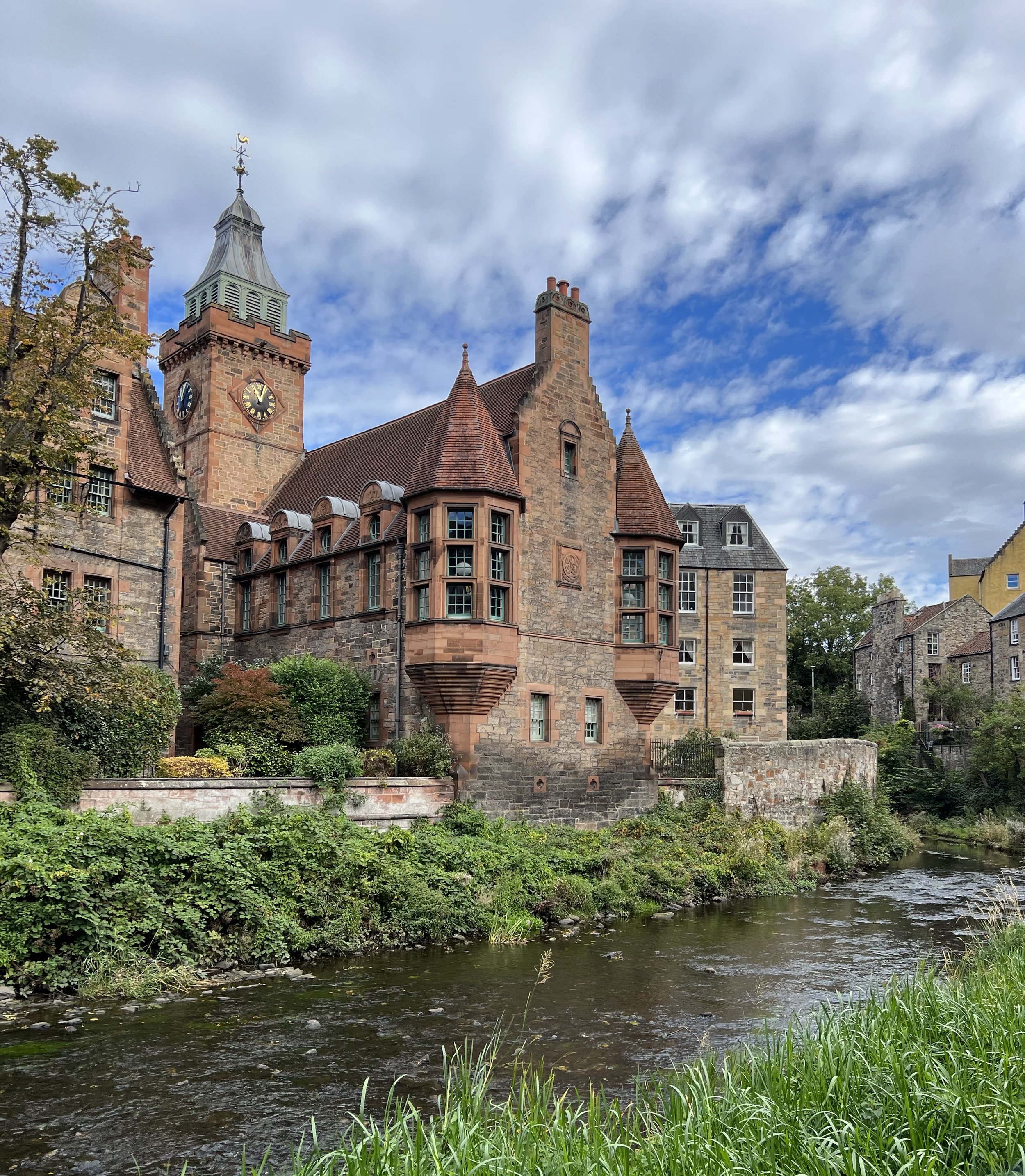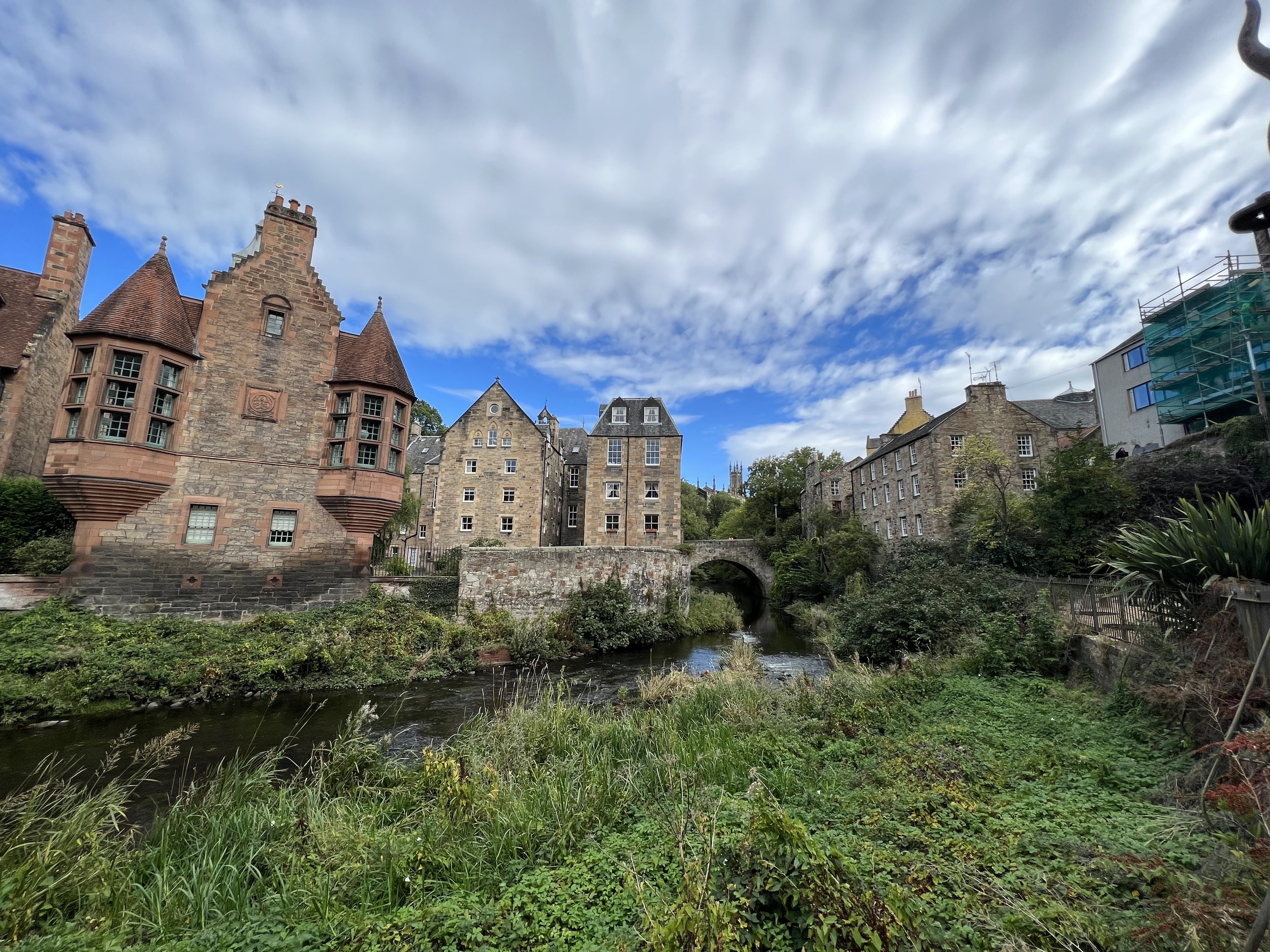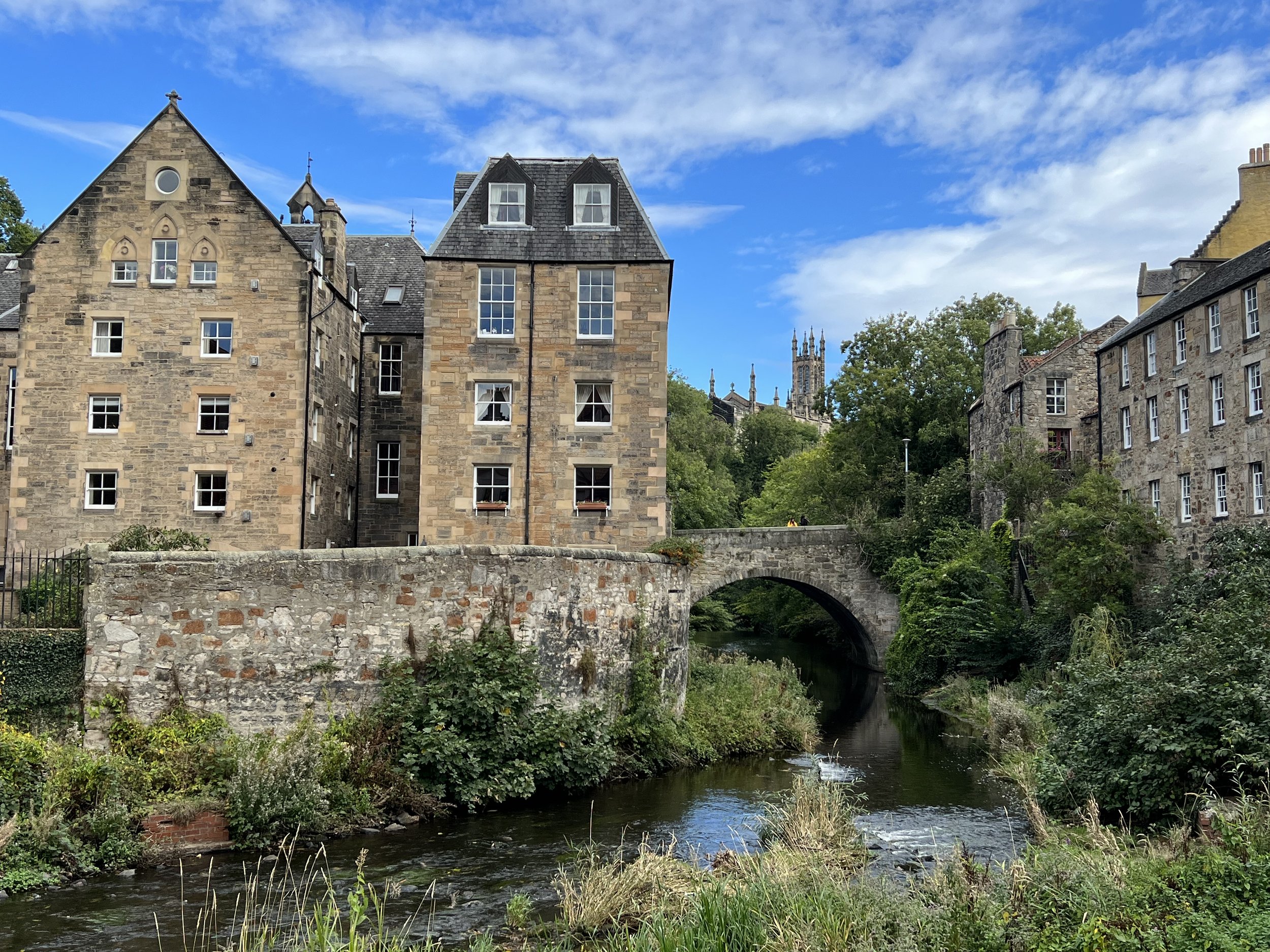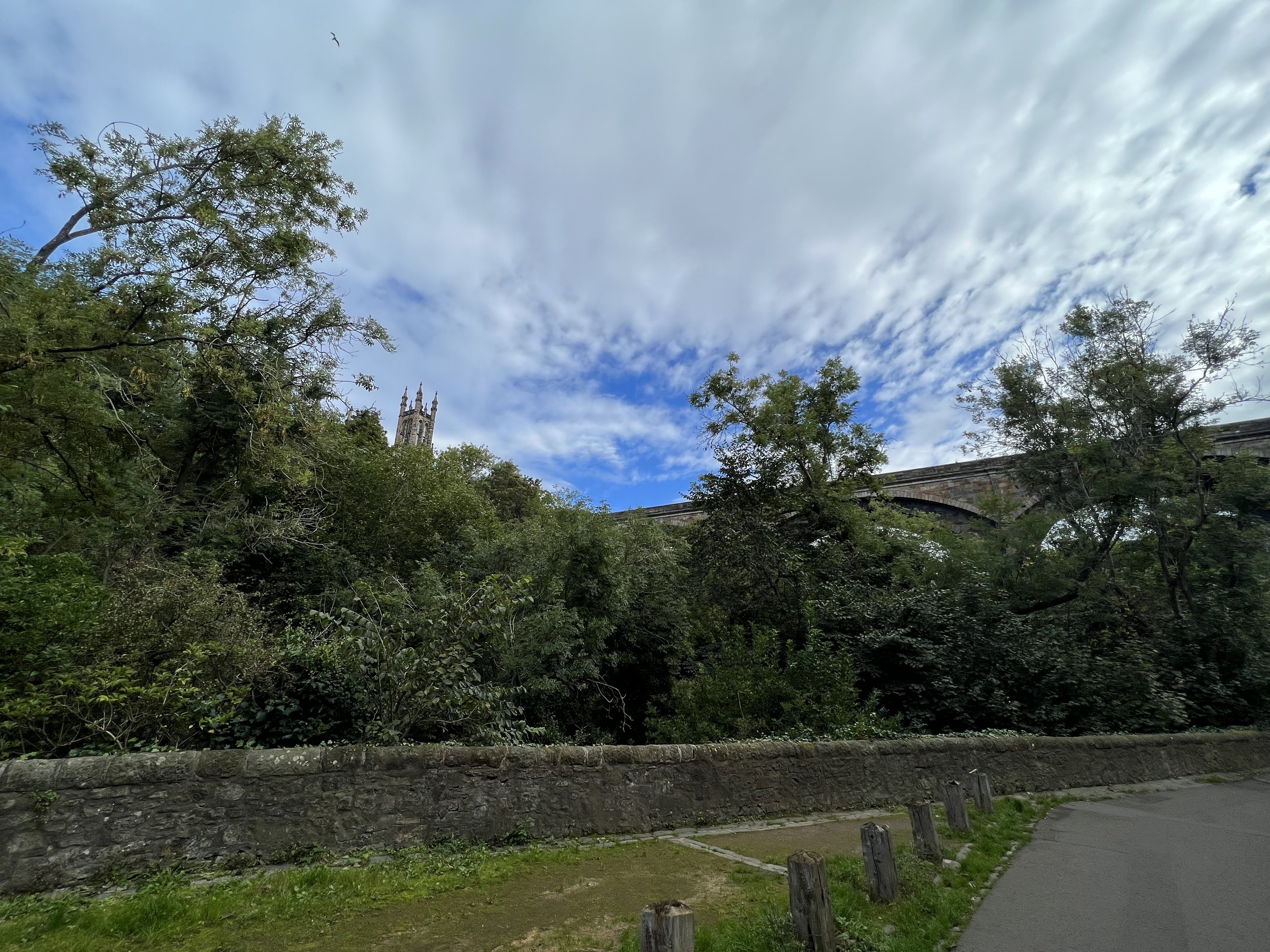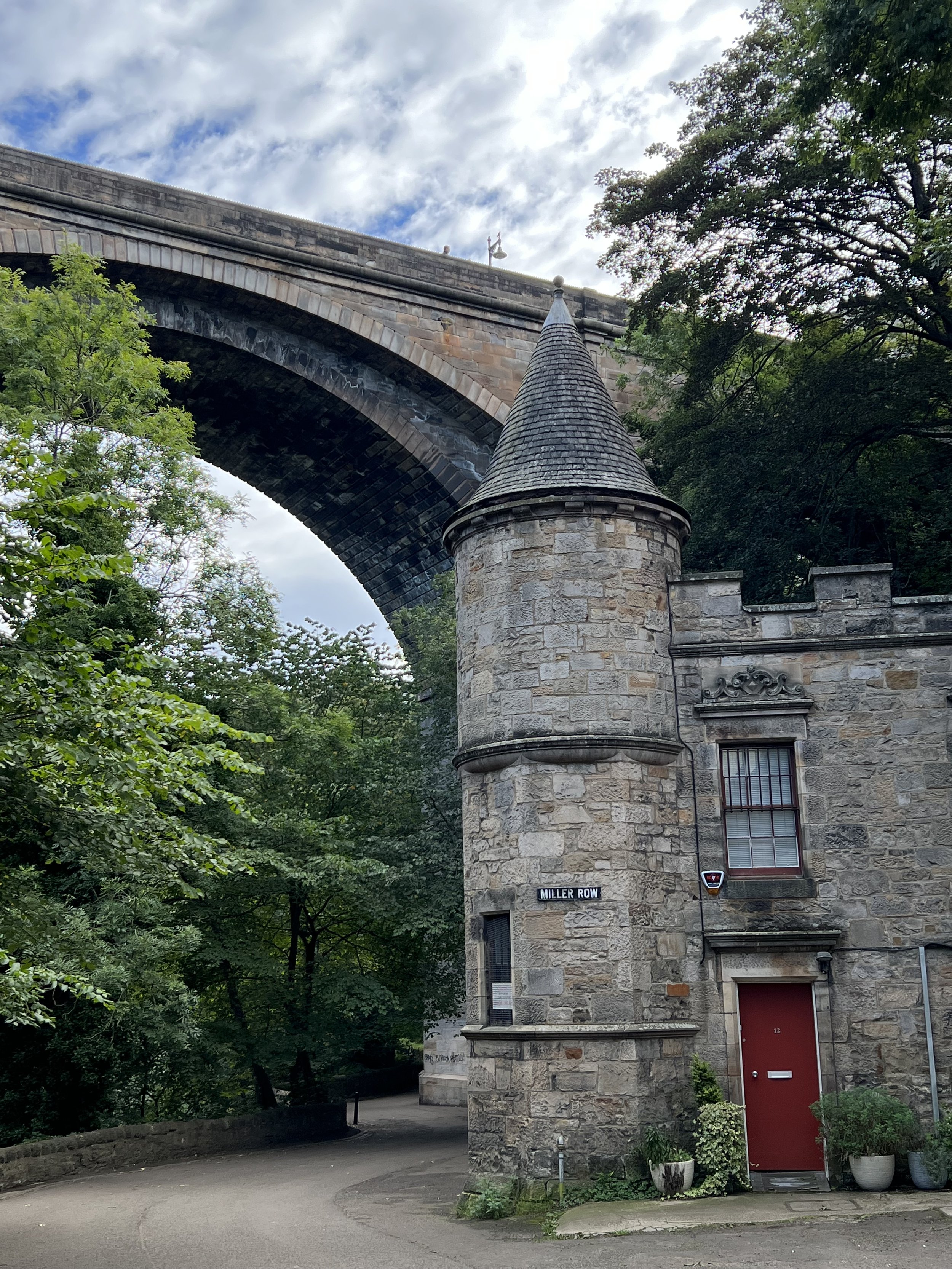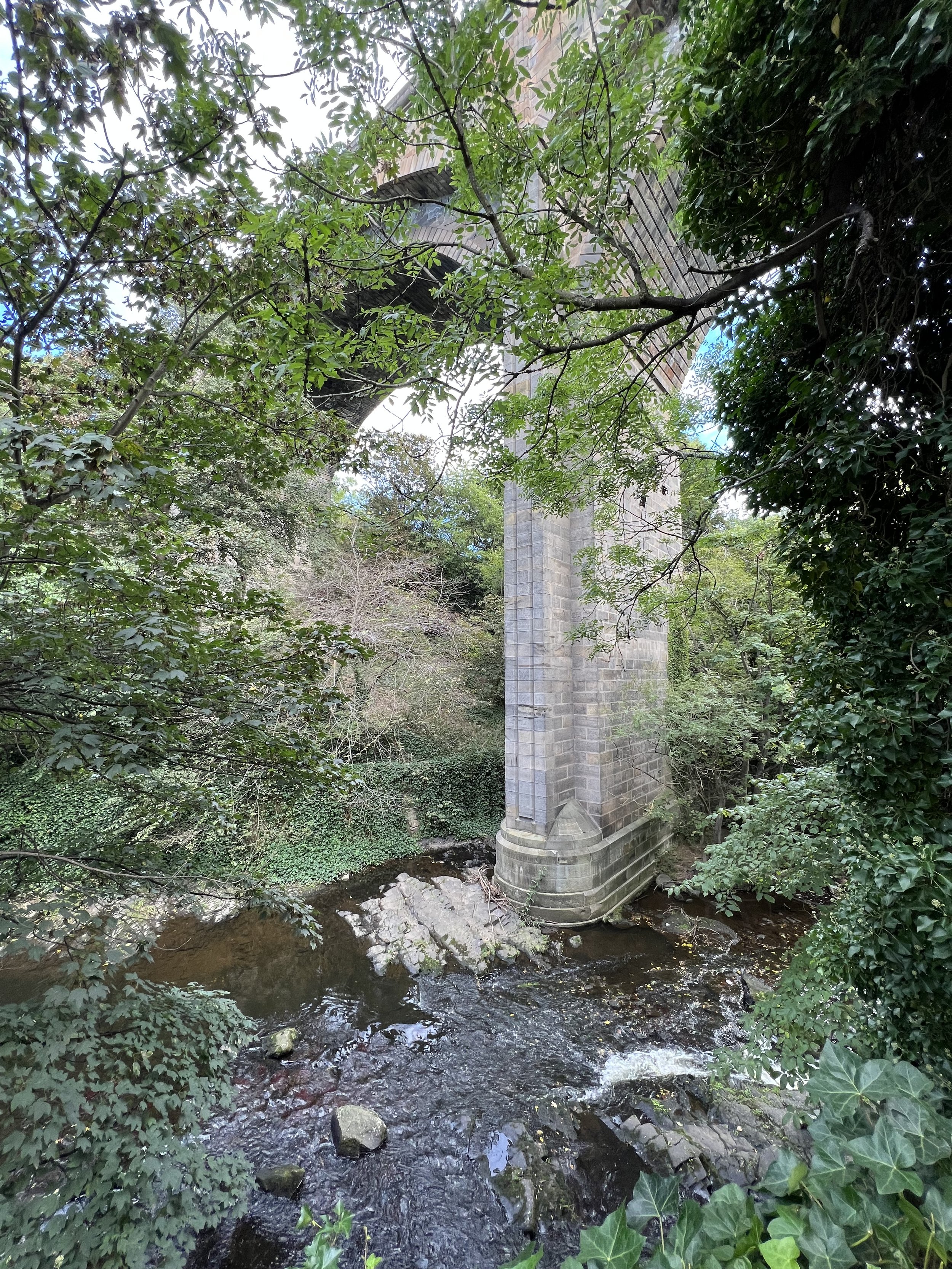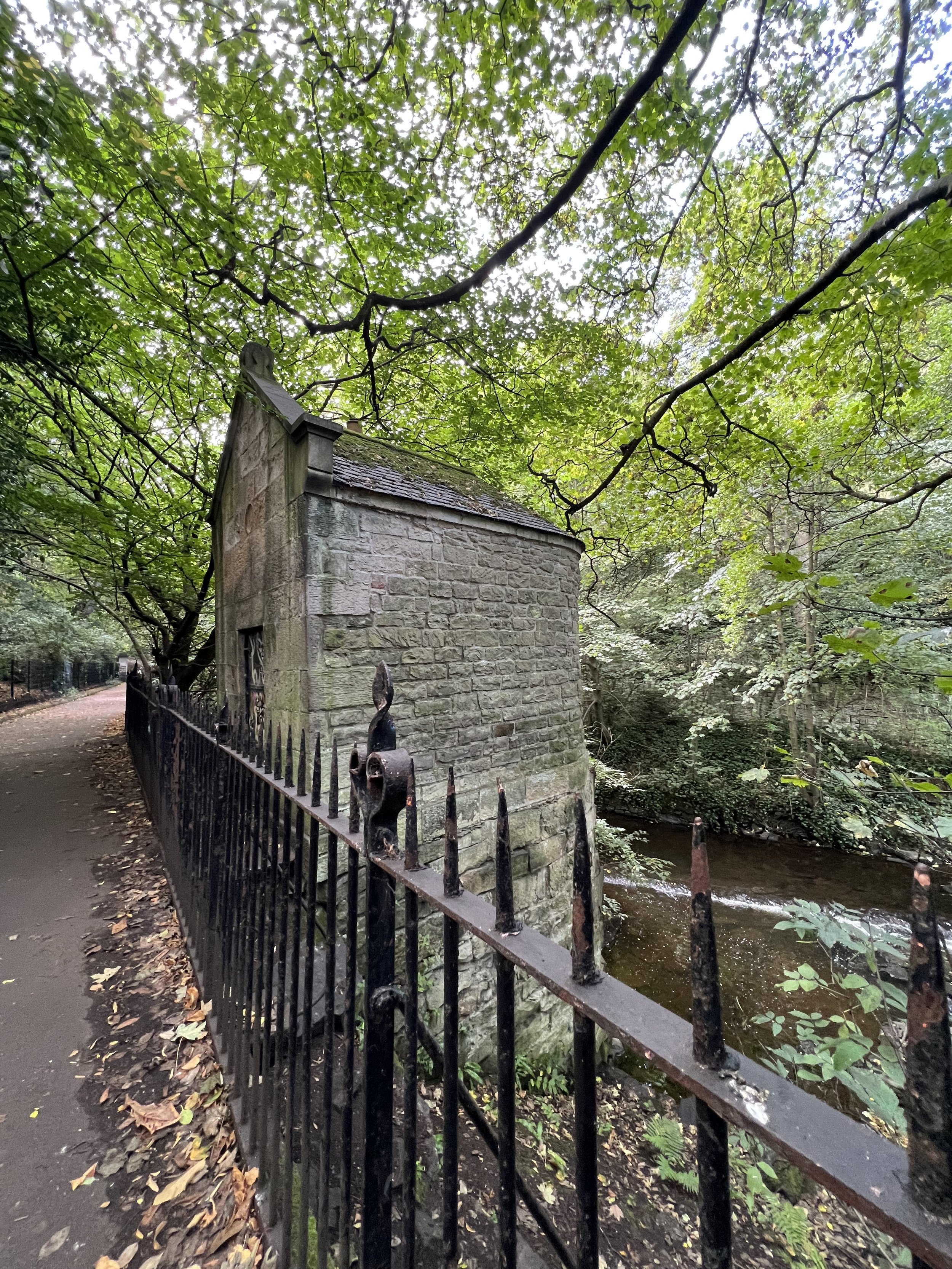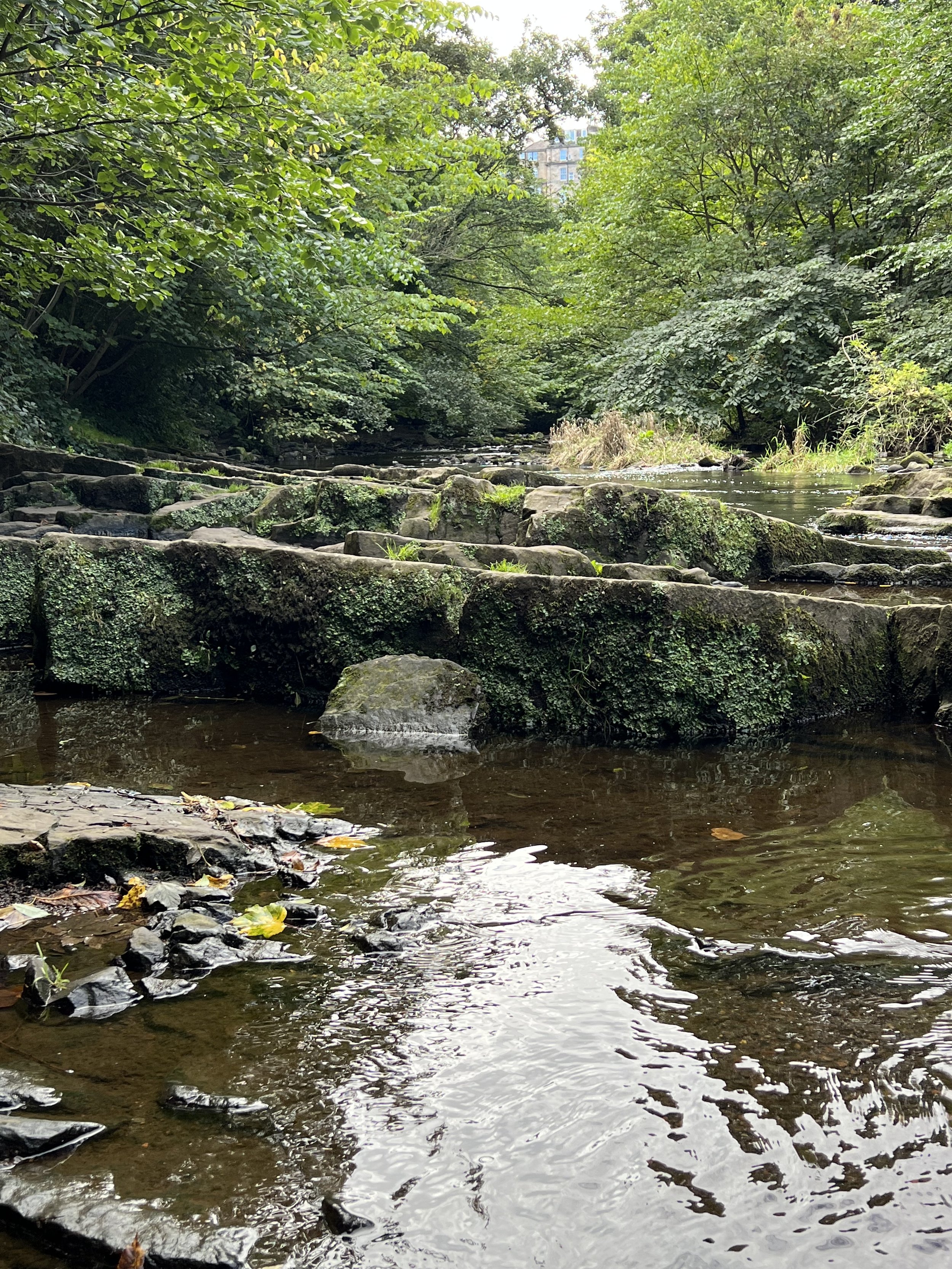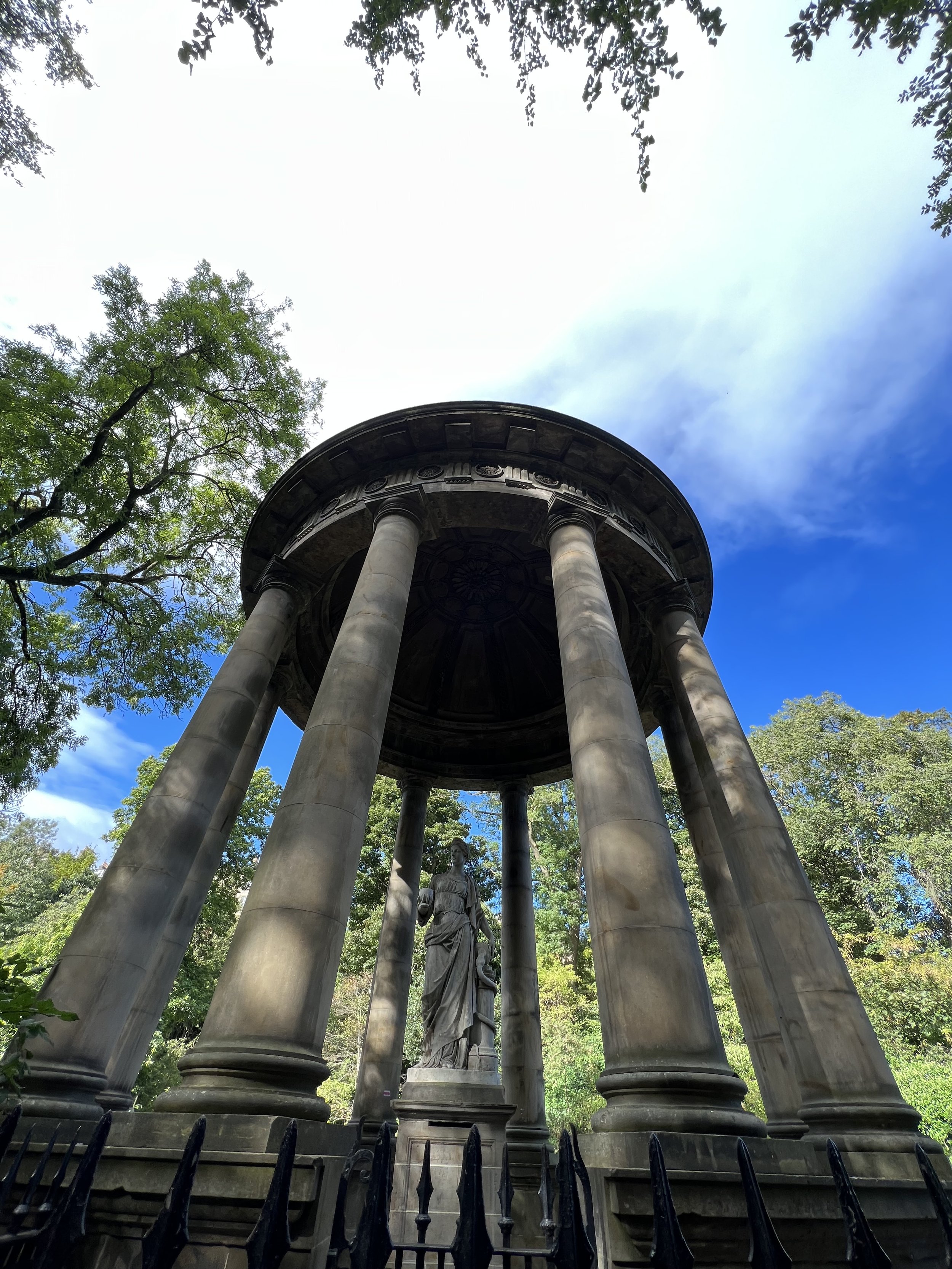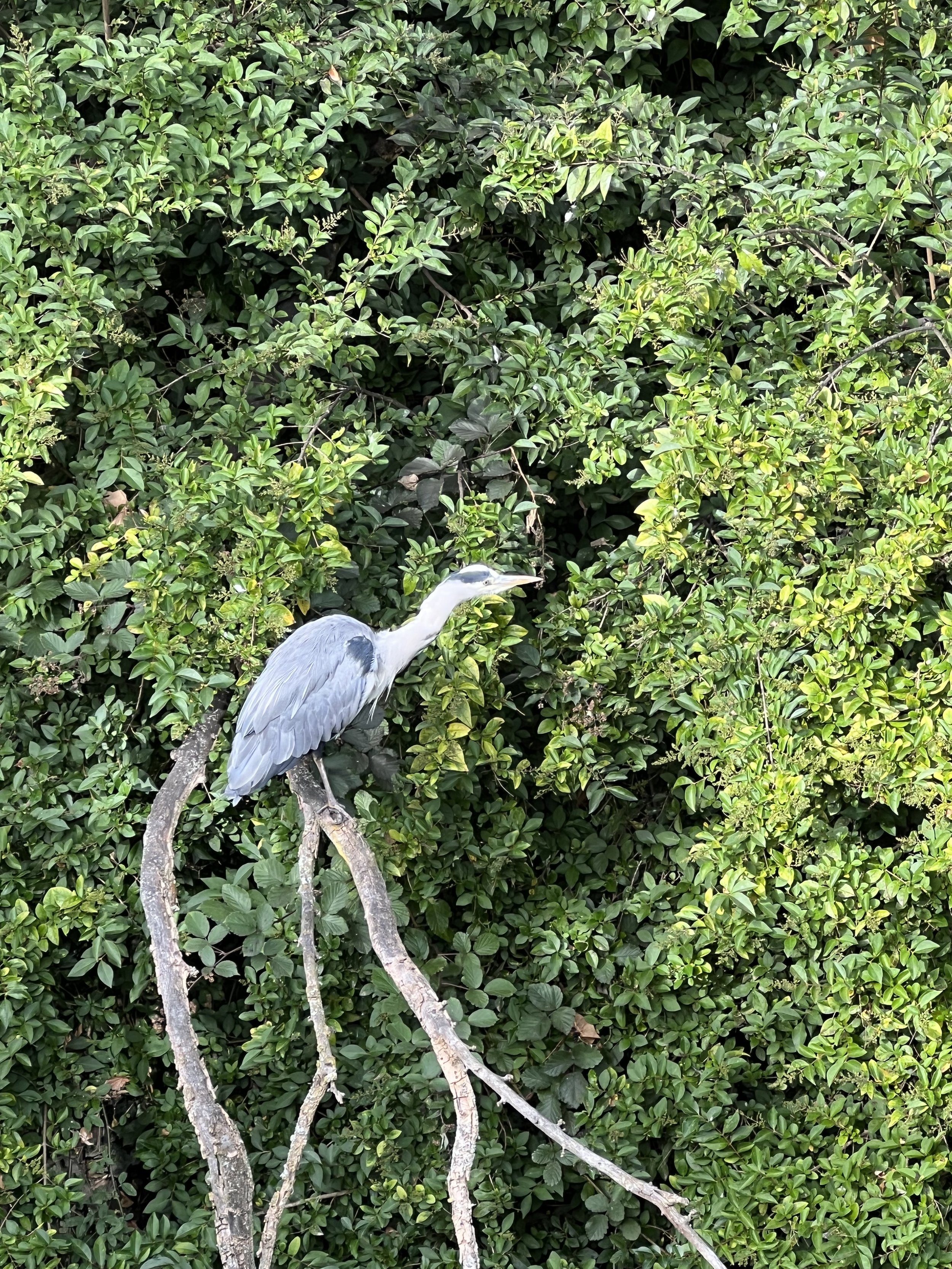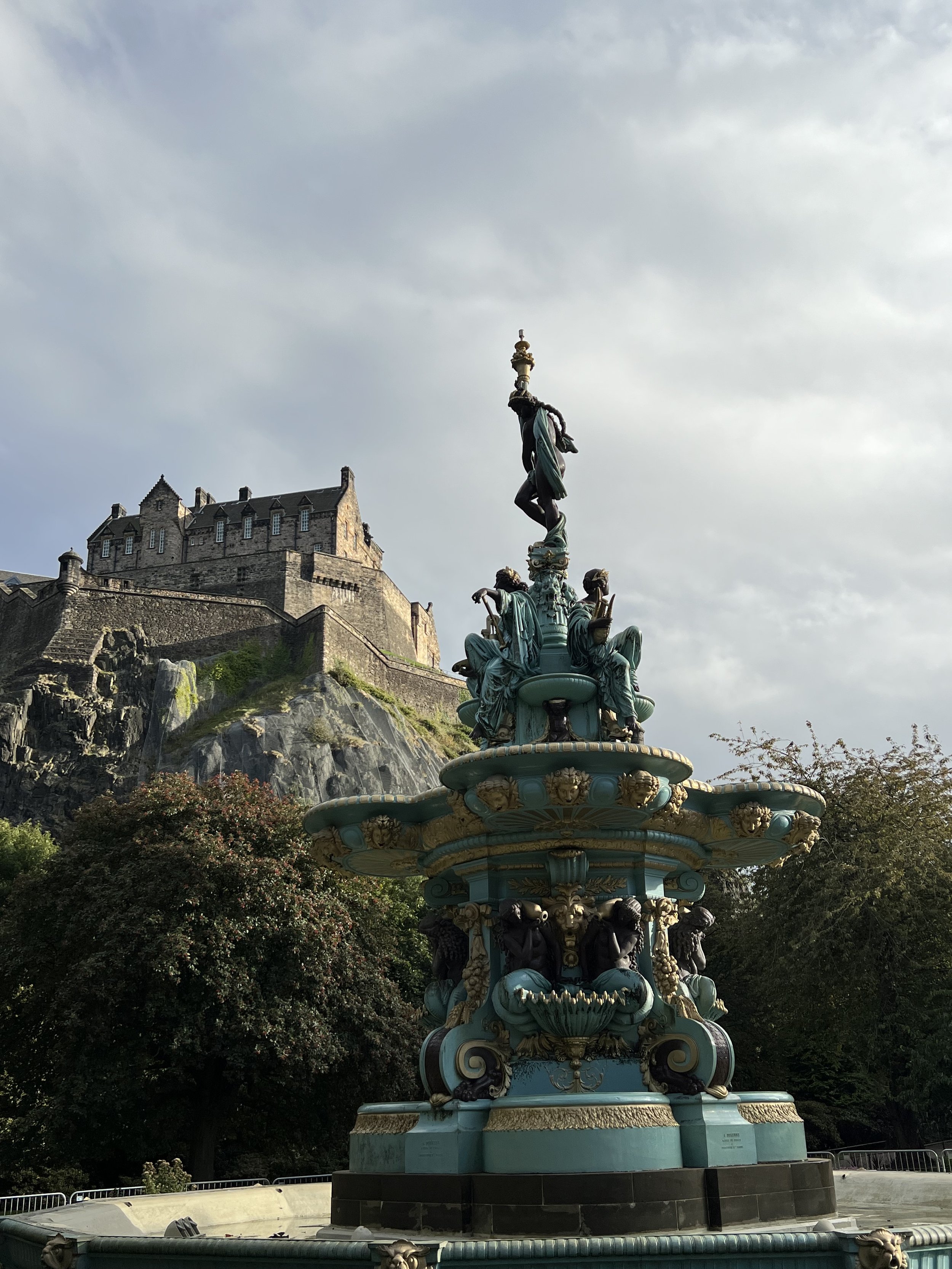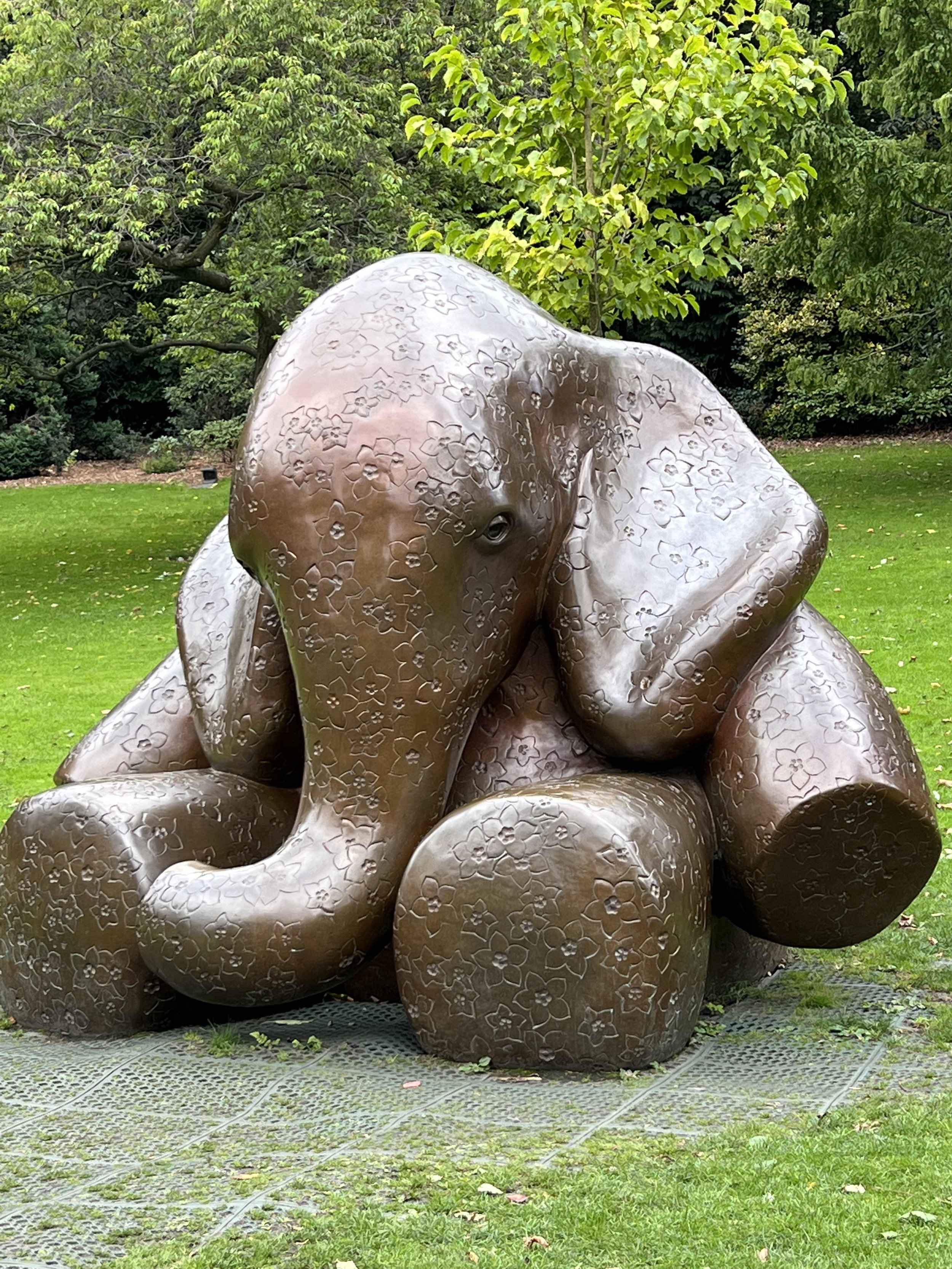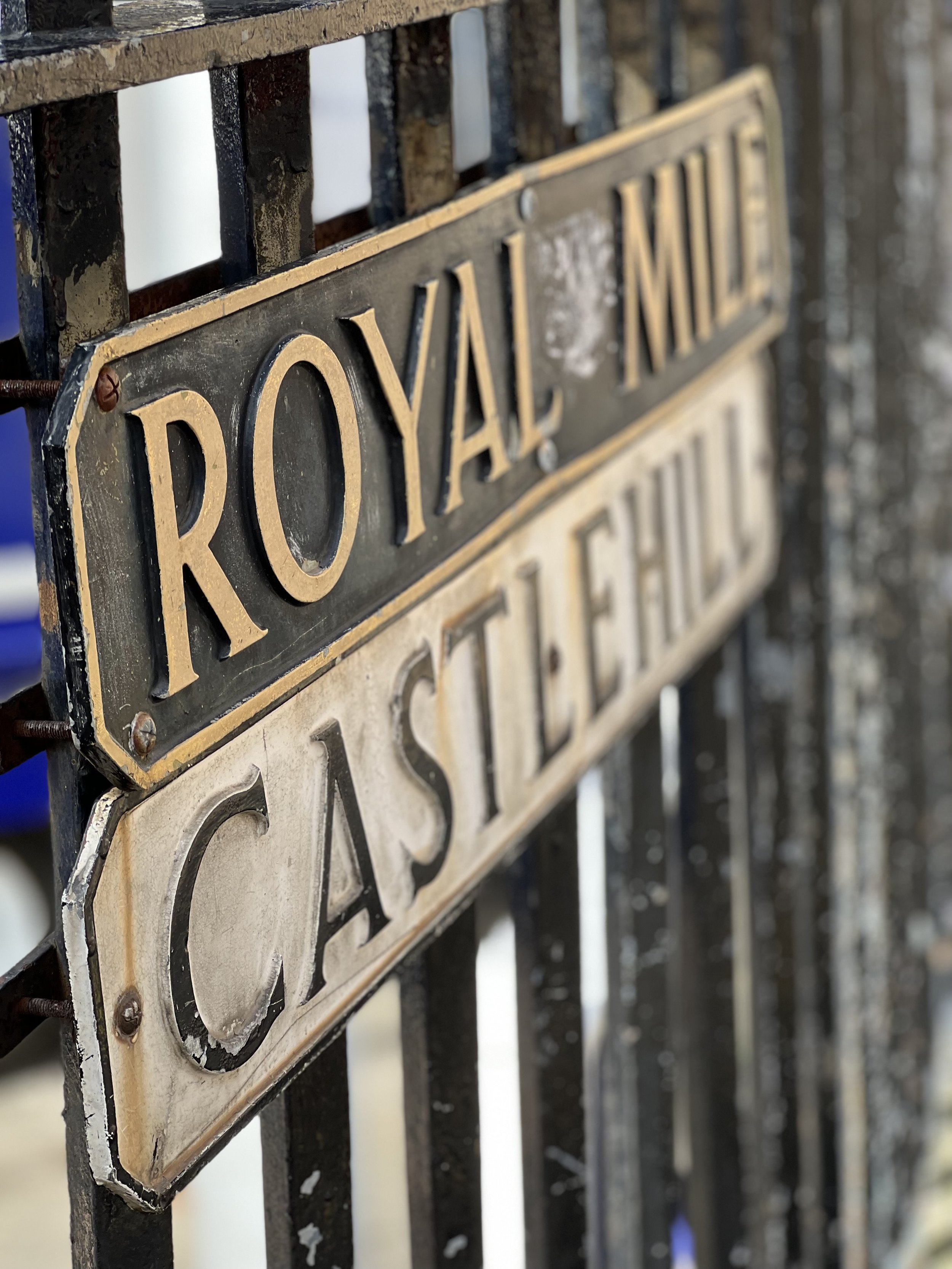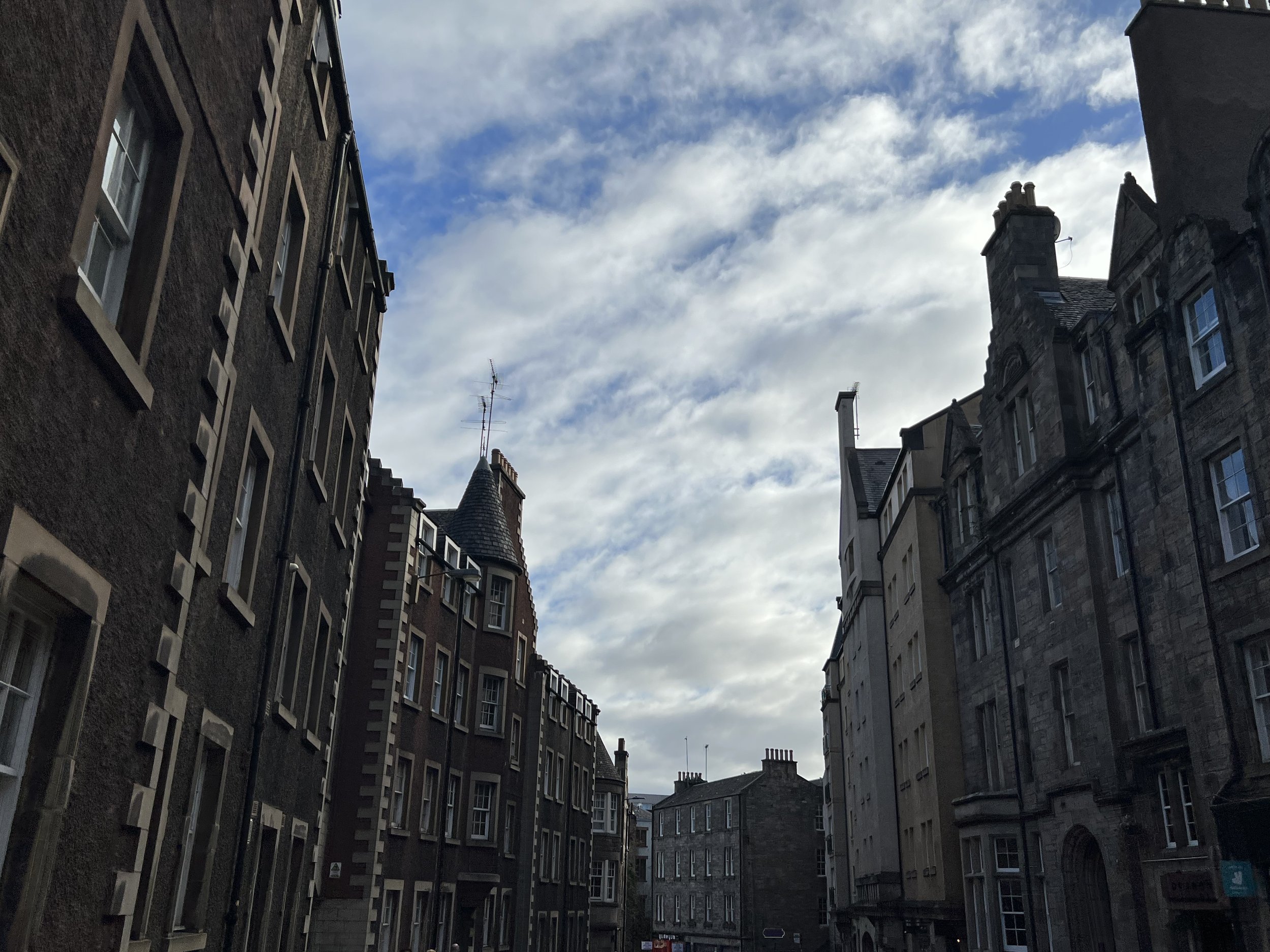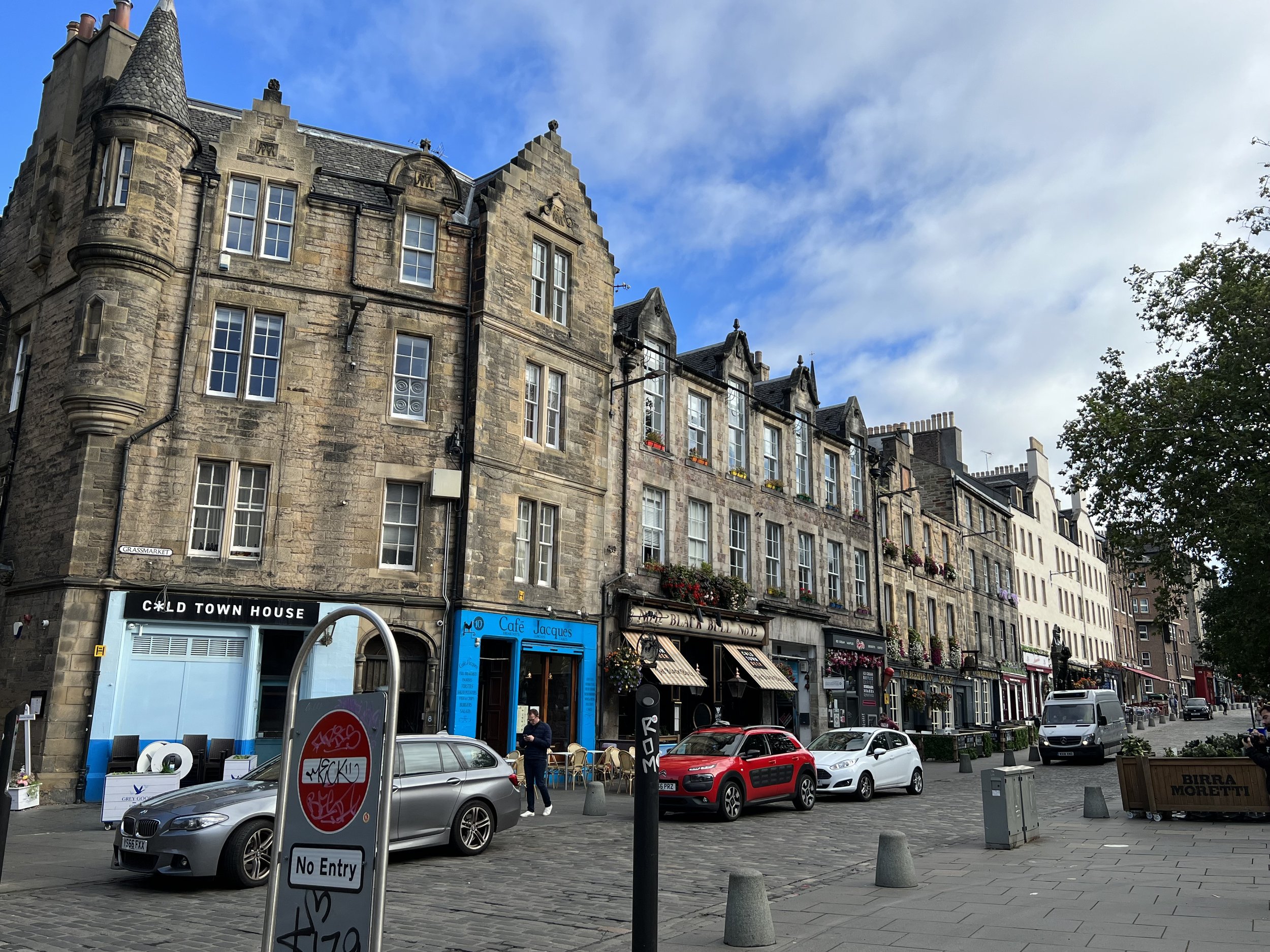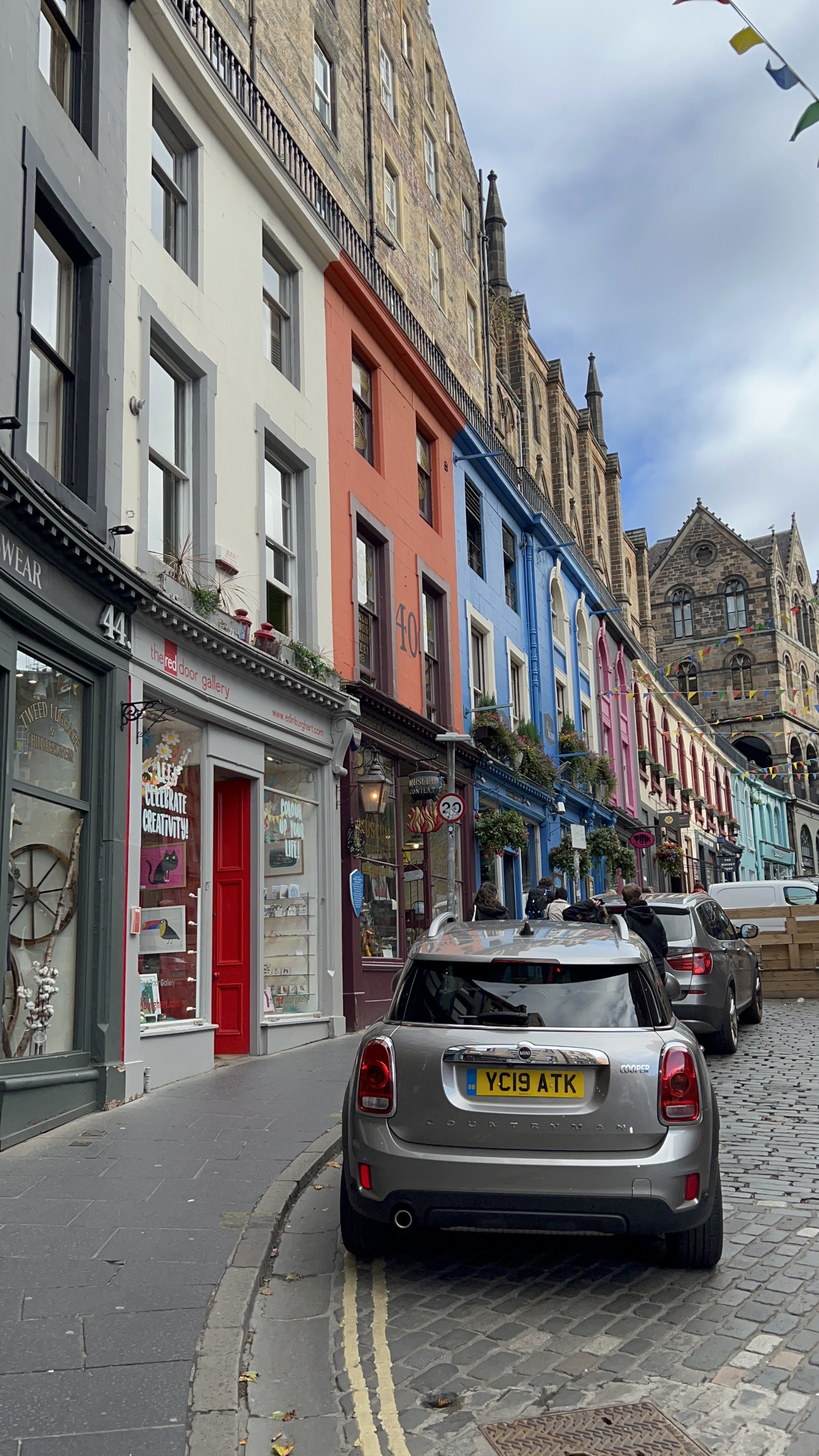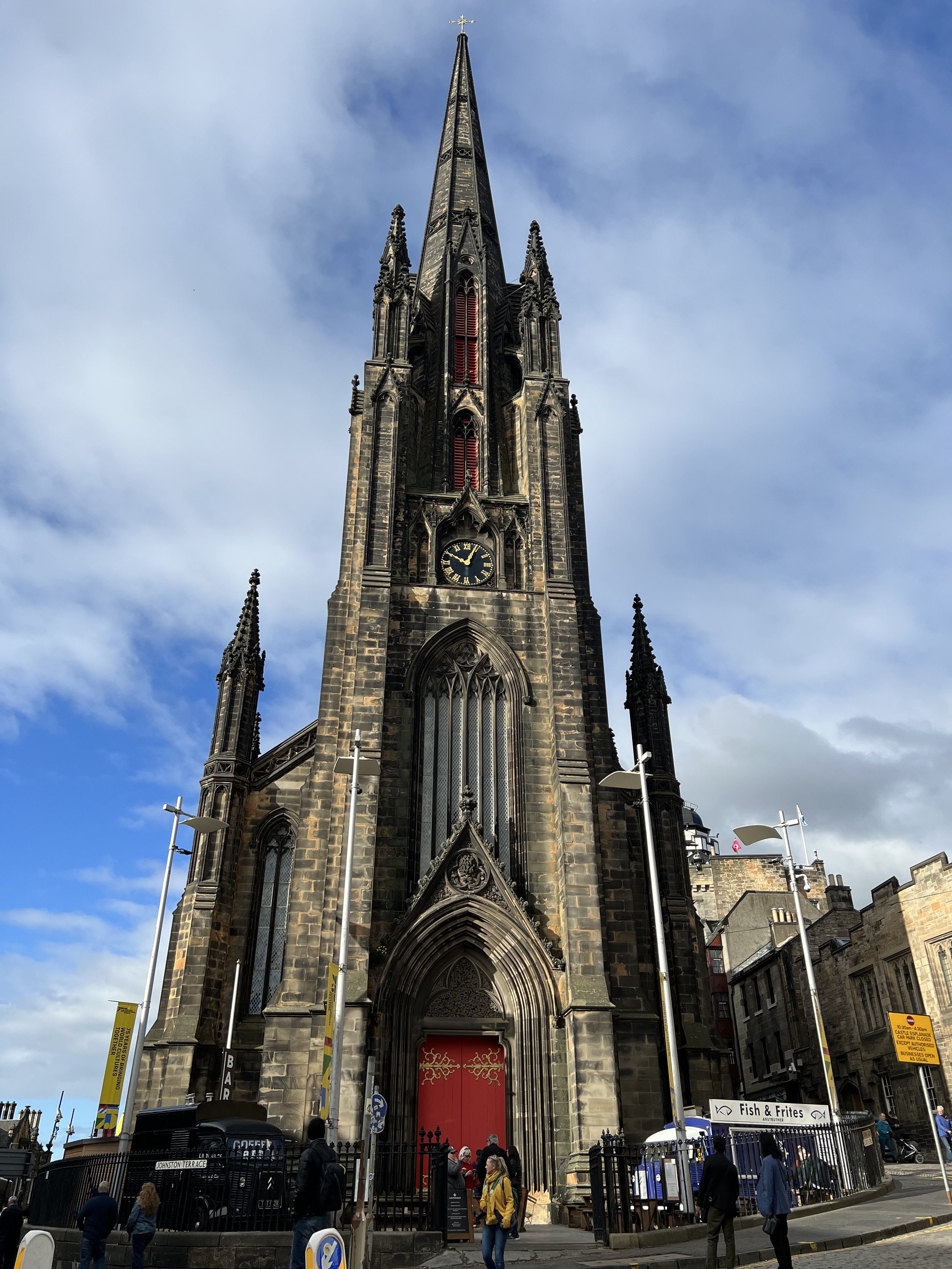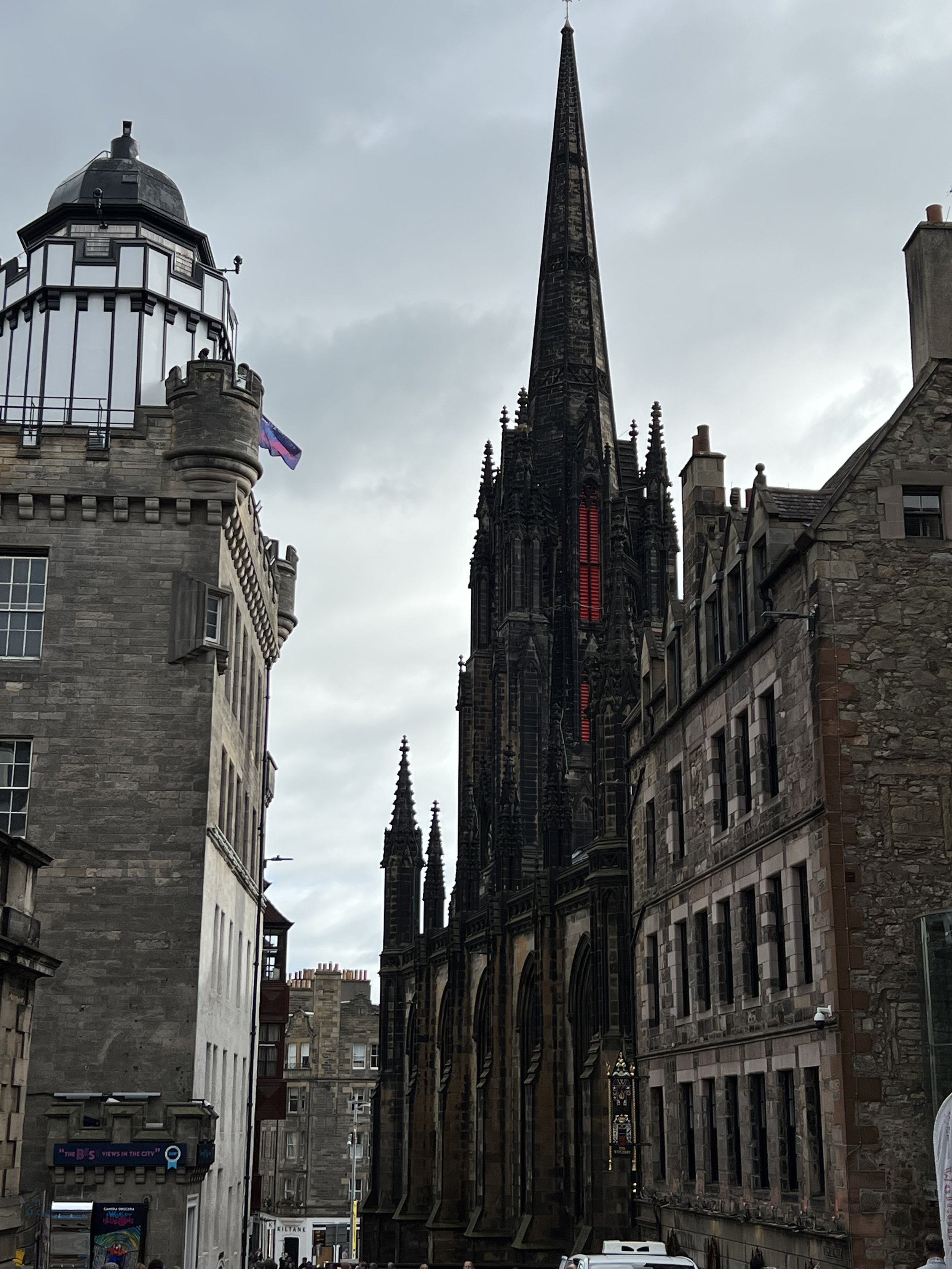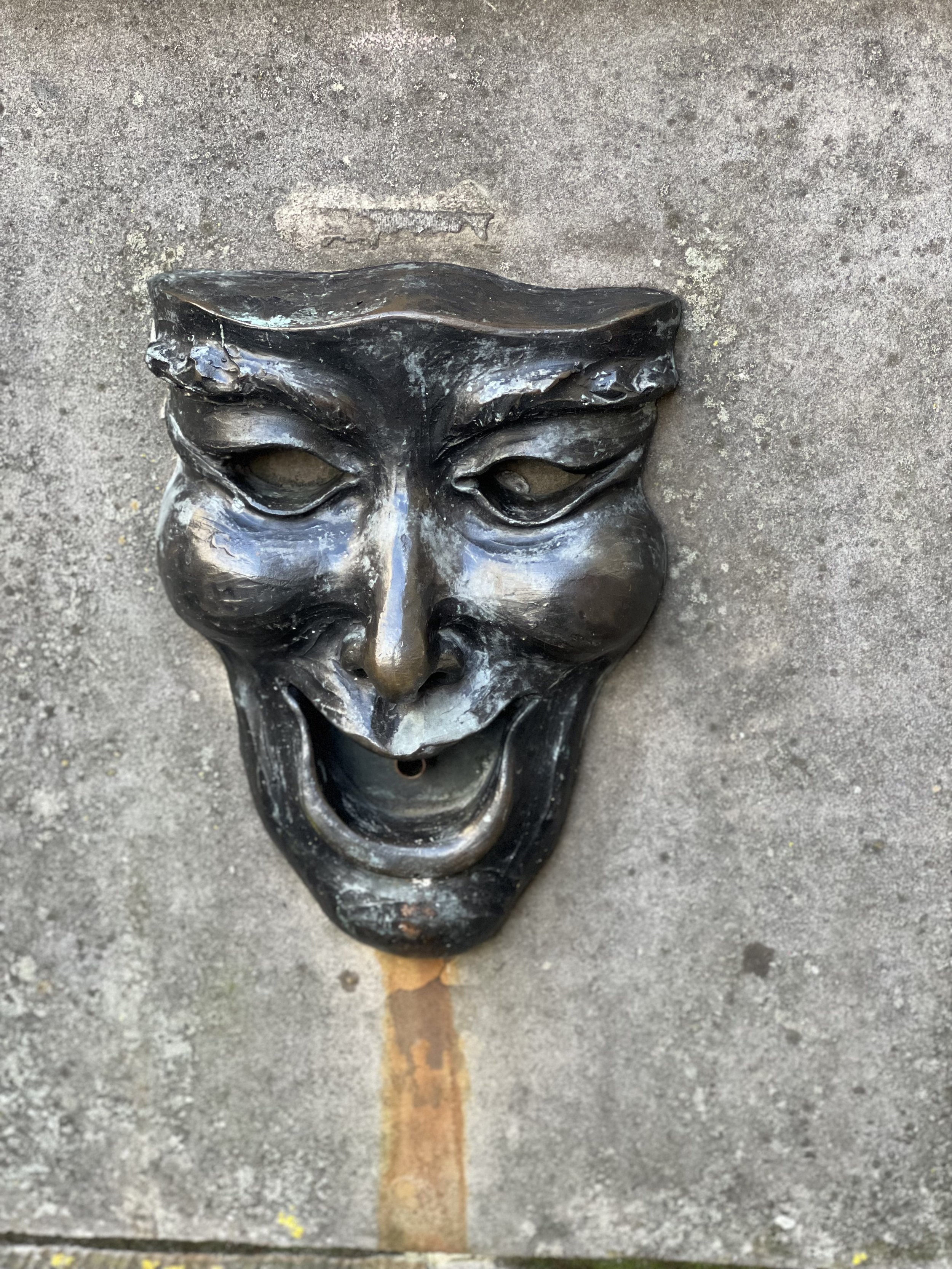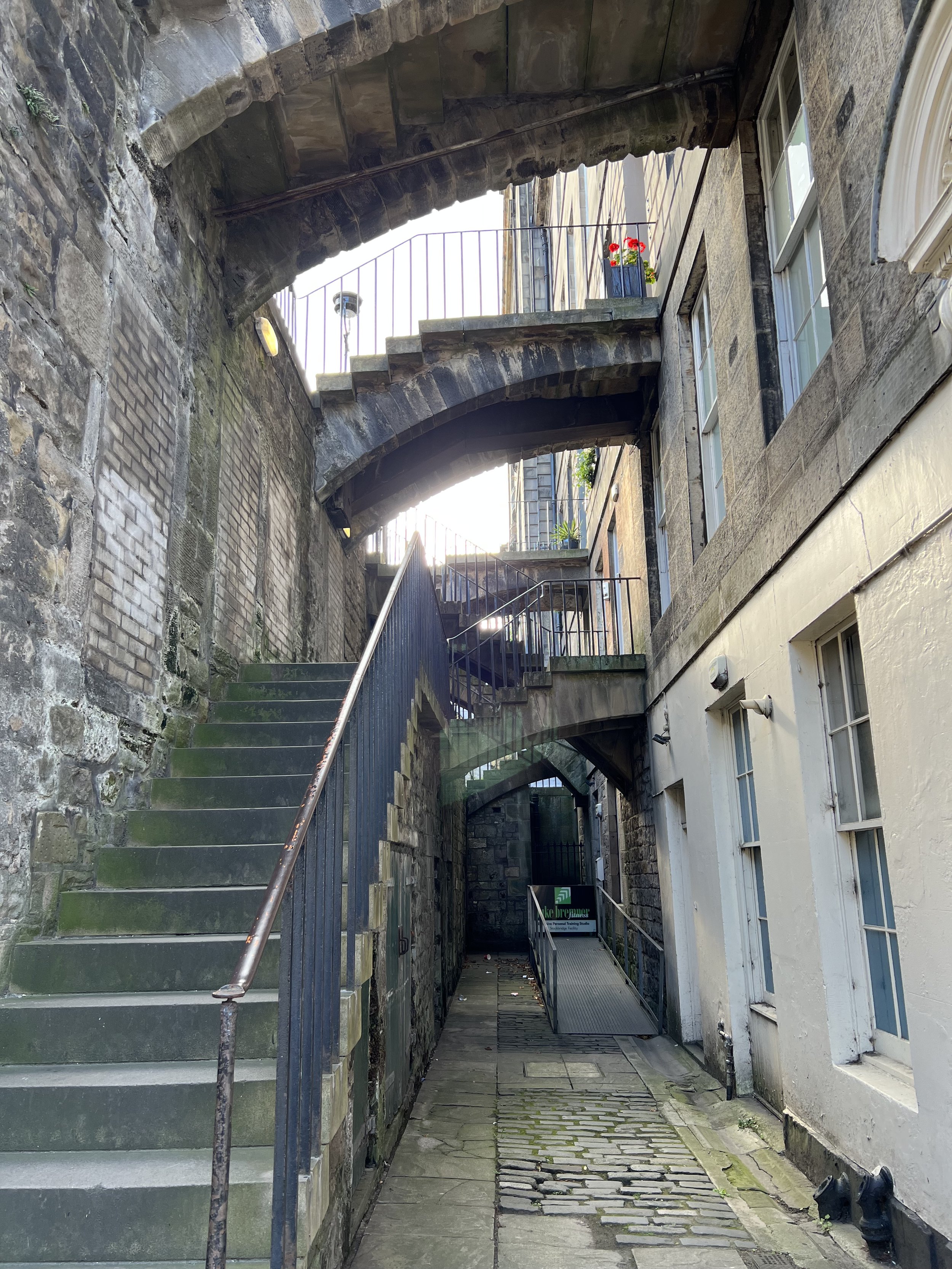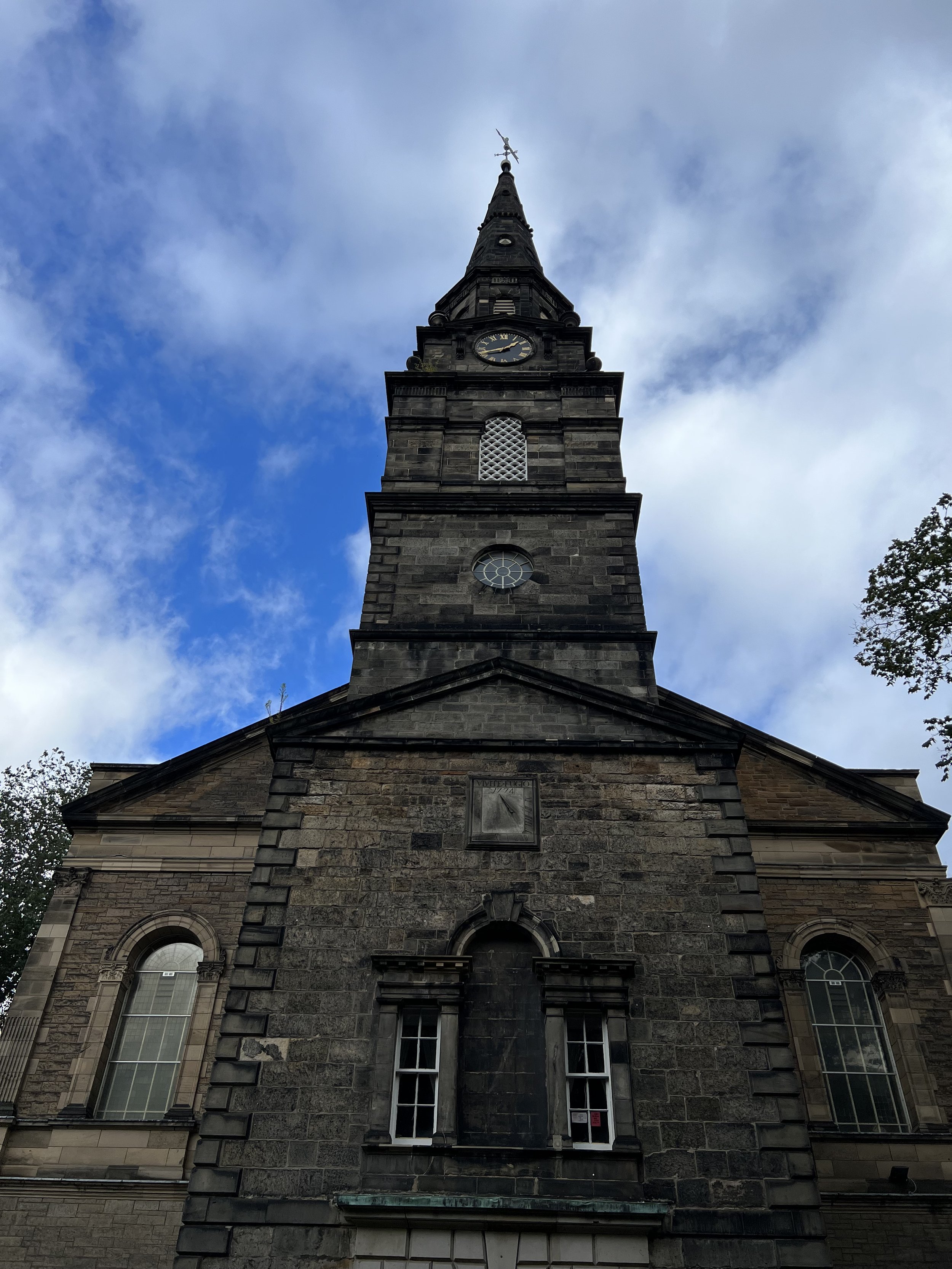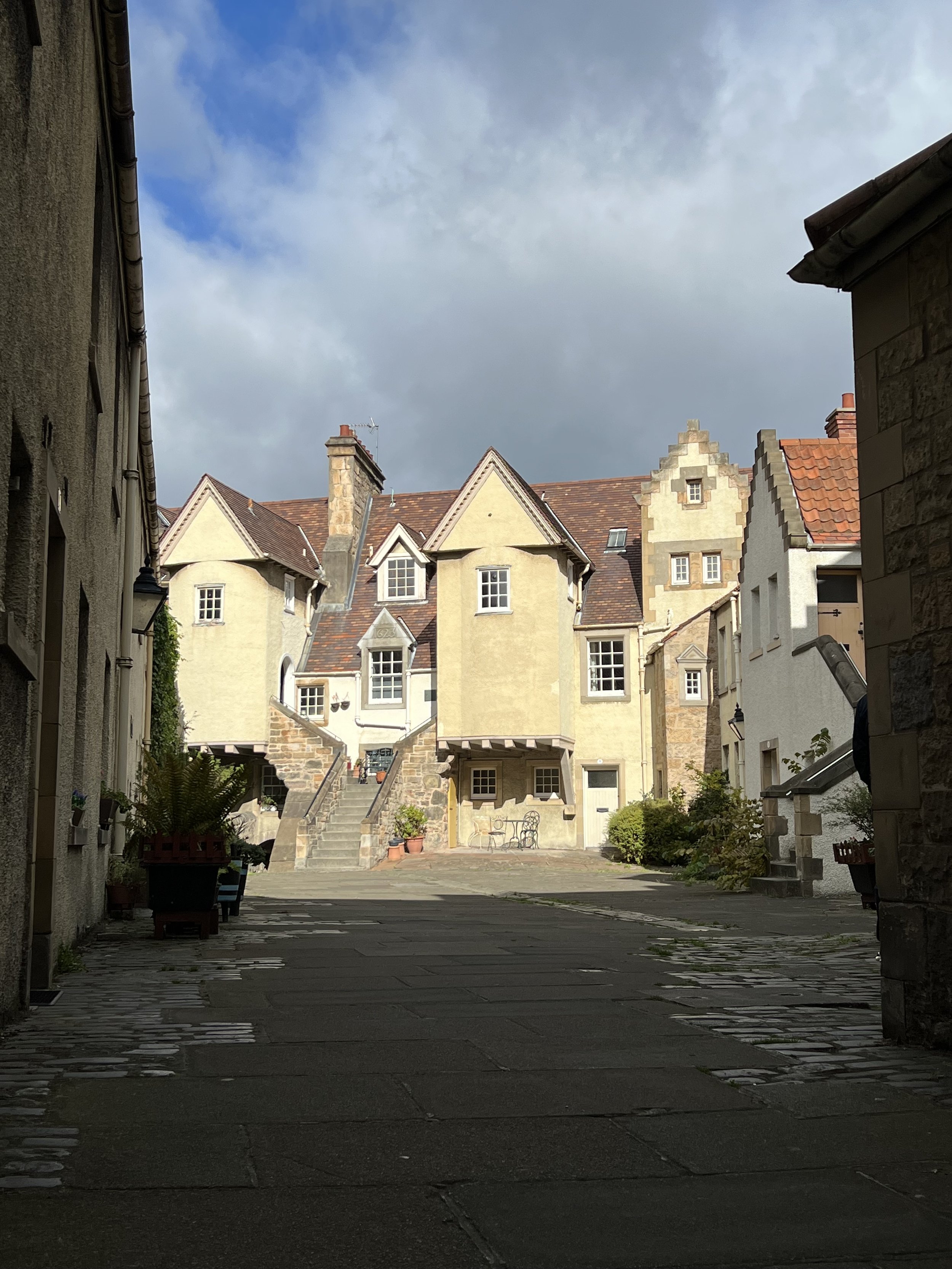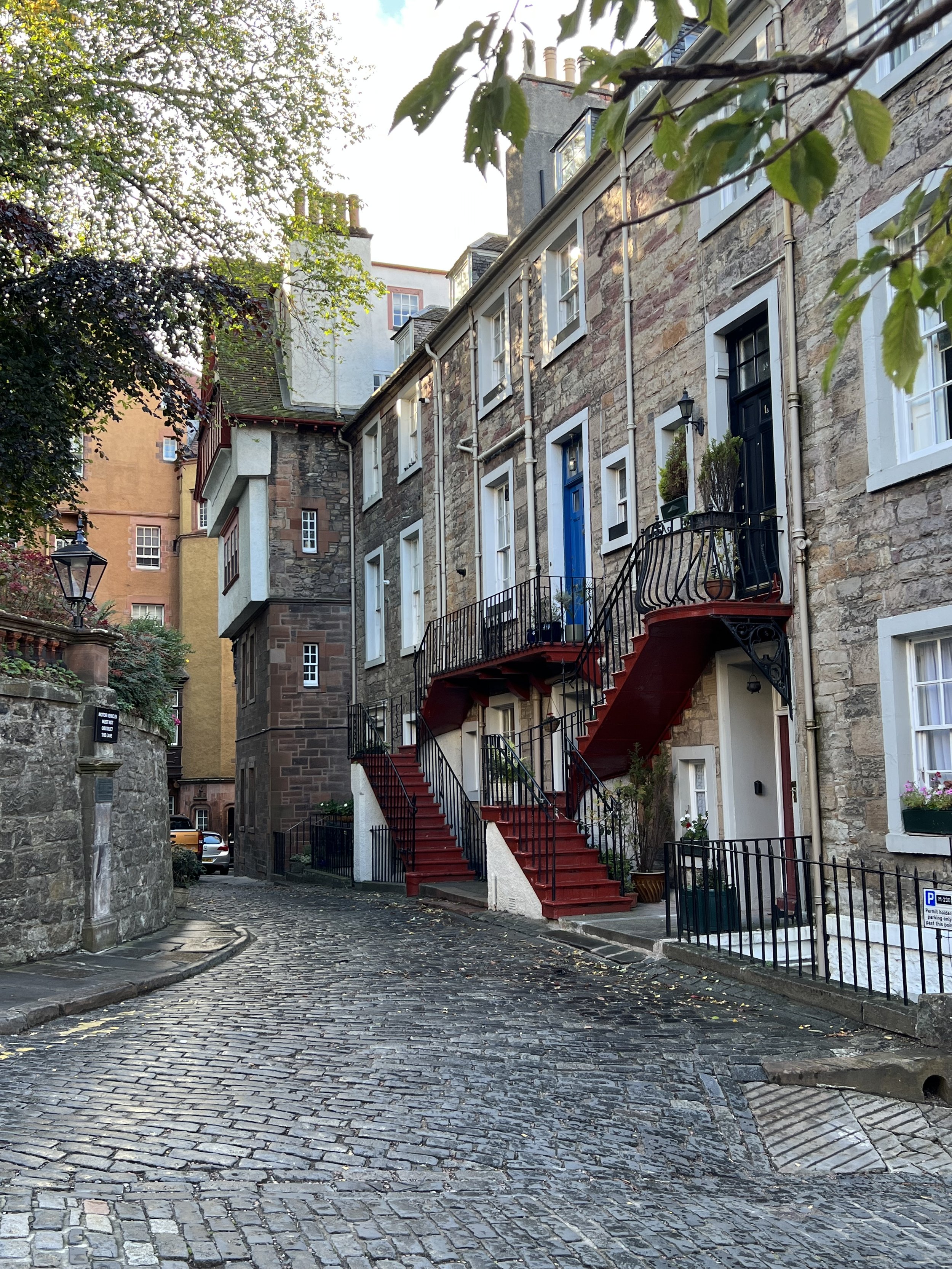Exploring Edinburgh, Scotland
Holyrood Palace
Time needed in this city: 3-4 nights (more if you are doing day trips)
Edinburgh is one of the most beautiful, clean, and historic cities I have ever been to. In the 12th century (c. 1130), King David I established the town of Edinburgh as one of Scotland's earliest royal burghs, protected by his royal fortress, on the slope below the castle rock. Fast forward nine centuries, and the history of the city is still very much present. Whether day or night, rainy or sunny, the only word to describe this city is “magical”.
The below information is a complete guide of the best places to stay, the top rated places to dine and drink, and all there is to see and do. We’ve also included transportation tips, as well as a summary of the history of this enchanting city!
Jump To:
Where to Stay
Prestonfield House is a 16th century home that was turned into a luxury hotel in the 1970s (click here to read its full history). In September of 2022, we dined at their Michelin-starred restaurant, Rhubarb (see our “Where to Dine” section below), in the oldest part of the home. Afterwards, we took a tour of the property and fell in love with it, though having no idea we’d be planning a wedding there at the time. In September of 2024, we not only said “I do”, we were blessed to be able to stay there and enjoy every part of this property for three nights. Watch until the end of the video for a teaser of our reception.
Other recommendations
The Balmoral Hotel (which is where J.K. Rowling holed up in her suite to write Harry Potter and the Deathly Hallows).
The King’s Chamber - This was once the hall in which King James VI of Scotland and his wife, Anne of Denmark, hosted a royal dinner party for the Duke of Holstein, Anne’s brother.
The exposed ceiling beams are still painted with the original designs for the 1598 banquet, featuring emblems including the Crown of Scotland and the double-headed eagle—the symbol of the Holy Roman Empire—of which the Duke of Holstein was a prince.
The room is just one part of Riddle’s Court. The building, originally a merchant’s house, was constructed in the 1590s. Now one of the Royal Mile’s oldest surviving buildings, it has lived many lives and seen several renovations.
The Witchery - The “sister” hotel to Prestonfield House, it, too, is home to a Michelin-starred restaurant. The rooms are pricey and opulent but for good reason - it’s right next door to Edinburgh Castle.
Where to Dine & Drink
Athletic Arms
Former grave-diggers pub founded in 1897 specializing in brown spirits & real ales in quaint digs.
Bennets Bar
Historic venue offering 150+ malt whiskies and Scottish menus, handy for pre-/post-theatre drinks.
FUN FACT: In 1906, to accommodate women, a separate room, known as a “jug” or “snug,” was created. Detached, but adjacent, the small room was a supposed safe haven where women, or those who wished to avoid the raucous affairs taking place in the main portion, could enjoy a meal or even keep tabs on the proceedings in the next room. That room still has its own hatch and own entrance and can still be requested!
Cafe St. Honoré
Fresh Scottish produce cooked in classic French style and served in smart Parisian brasserie decor. NOTE: They are great for those with Celiac.
CAPPUCCINOS AT THE BRASSERIE PRINCE
Nestled in the Balmoral Hotel, The Brasserie Prince brings a French flair to the hotel. While we only visited for some cappuccinos, the menu looks great for any meal!
Chez Jules
Casual red and yellow decor in friendly bistro offering French classics and set lunch menu deals.
Dishoom
Fantastic Indian Food in an upscale, golden age-style setting.
NOTE: If you do not have a reservation, they will take your name and give you a buzzer, then send you down to the speakeasy-style bar to wait for your table (be sure to order a drink there - we recommend the chai espresso martini and the mai tai).
TIP It is worth picking up their cookbook and some spices before you leave!
Eórna
Per the Michelin guide (they have a star), “Here's a plush quality to this smart counter restaurant in the suburb of Stockbridge. Small "chef’s table" operations like this allow for a much greater intimacy to your dining experience and, indeed, there are just two people working here: Brian in the kitchen and Glen looking after service and wines. Following a warm welcome, you can enjoy a highly seasonal tasting menu that has a strong Scottish heart, from the Orkney beef to the fantastic Perthshire strawberries.”
Forage and Chatter
Casual restaurant for a menu making use of Scotland's natural bounty, much of which is foraged.
Heron (Leith)
Per the Michelin guide (they have one star), “There is such a pleasant feel to this neighbourhood restaurant, courtesy of a bright, clean look that’s matched by warm and unstuffy service. The skilful cooking is founded on fine Scottish produce, whether that be excellent wild sea bass or the finest berries from Fife. The tasting menu will allow you to make the most of the chefs’ talents, and all fits together like a well-crafted jigsaw. Ask for a table by the window if you want to watch the world go by around the Port of Leith, or opt for a seat at the spacious counter.”
JOHNNIE WALKER ROOFTOP DINING EXPERIENCE
One of our last stops in Edinburgh was the Johnnie Walker Rooftop experience (see Blackbeard’s video short of the whiskey and my video short of the view). With sweeping views of Edinburgh and a delectable food and beverage menu, it’s a great place to take a break.
LOUDON’S CAFE
Loudon’s Cafe not only has some of the best food (they cater to Celiac customers extremely well), but also some of the best service.
Nauticus (Leith)
Upscale pub with dark panelling, ship-inspired decor & chandeliers, plus craft cocktails.
Noto
Compact, foliage-trimmed space offering snacks & small plates, with wine & signature cocktails.
Number One
Sophisticated Scottish fine dining in romantic luxury hotel ambiance, with a chef's tasting menu.
Panda & Sons
Dark, vintage, speakeasy-inspired bar offering a robust wine list, inventive cocktails & craft beer.
Pickles
Relaxed spot pairing a bar with cider, cheese, charcuterie and pickles in rustic digs with a patio.
RHUBARB
A Michelin-starred restaurant, nestled in Prestonfield House - a 17th century home/hotel. Everything about this experience was impeccable (we got to dine in the private 17th century turret and had a personal tour of the home, after) and we look forward to renewing our vows in the hotel, in September 2024!
Note: Their wine list is incredible and they were fantastic with my gluten allergy.
Roseleaf Bar Cafe
Playful, quirky decor in an informal cafe bistro with health-conscious menus and teapot cocktails. NOTE: Go for brunch!
Sheep Heid Inn
This 14th century inn holds an amazing secret - it has a 19th-century skittles alley.
Skittles is a type of bowling game that was once very popular in the United Kingdom (so much so that the phrase “beer and skittles” became synonymous with having a good time). Even before the Sheep Heid’s current skittles hall was built in 1882, there was a game set up in the inn’s courtyard. Legend has it that James VI (son of Mary, Queen of Scots) had such a grand time playing a game in 1580 that he offered the owners a gift - a snuff box made from a ram’s head in honor of the establishment’s name.
FUN FACT: The inn is located in the former village of Duddingston, once a hub for sheep butchers, hence the name.
TIP: Go play a round of skittles when you visit (for a fee).
The Bon Vivant
European-inspired snacks & mains pair with champagne & cocktails in relaxed, wood-accented environs.
The Kitchin
A Michelin-starred restaurant by Chef Tom Kitchin, who uses French techniques on Scottish produce in a chic, converted whisky warehouse.
The Witchery
Nestled within a 16th century (1595) merchant's house, The Witchery stands as a testament to Edinburgh's rich heritage and offers the city's most exceptional and atmospheric dining destination. Their menu showcases the finest Scottish ingredients, from succulent Scottish lobster and langoustines, to perfectly aged Angus beef steak tartare.
TIP: After your meal, head to The William Burke Museum inside of the The Cadies & Witchery Tours shop (right next door). On a counter, nestled under a glass box is an artifact that will certainly send a chill down anyone’s spine.
TOLBOOTH TAVERN
No tour of Edinburgh would be complete without a visit to Tolbooth Tavern - the oldest and most haunted tavern in the city.
Tupinquim
Kiosk with outside tables, serving gluten-free Brazilian crepes and freshly squeezed juices.
NOTE: They are known for their gluten-free crepes.
Waterstones
Per their site, “Our four-floor bookshop is right at the heart of the city, opposite Edinburgh Castle, on the capital's main shopping street; Princes St. We've got something for everyone: a large and inviting Children's department, a robust and exciting events programme, a Scottish department that reflects the richness and diversity of our great country and stationery for everyone. Our very own Café on the Second Floor, where we work with local suppliers to bring you the very best food and drink that the city has to offer, has breath taking views of the Castle and the Edinburgh skyline.”
Wellington Coffee
Cosy coffeehouse with a terrace serving traditional bites such as scones & clotted cream.
Things to See & Do
Just a week before our arrival, the late Queen Elizabeth’s Scottish funeral took place, with the procession going up Royal Mile from Holyrood Palace to St. Giles Cathedral. It was magnificent to be able to tour those places, among so many others.
Historical Exploration
Perhaps the most famous and iconic symbol of Edinburgh is Edinburgh Castle. Built in 1103 A.D. by King David I, it was routinely used until WWI when the prison was too structurally poor to hold the prisoners.
TIP: For a great private tour recommendation, click here.
Gladstone’s Land
Originally built in 1550, it was restored in 2021 and now serves as an ice cream parlor on the first floor with holiday flats on the second and third floors.
GREYFRIARS BOBBY
Perhaps the most heartbreaking AND heartwarming story is that of John Gray’s watchdog, Bobby - a Skye Terrier. John worked as a farmer’s night watchman and farm keeper and eventually, the cold, damp air took his life in 1858. Bobby belonged to the farmers but when John left for the city, knowing he didn’t have long to live, the little dog traveled the 22 miles to the city, on paw, to find him. Despite attempts to send him back to the farm, Bobby refused to leave. When John died and was buried in Greyfriars Kirkyard, Bobby would sleep on his grave, despite the graveyard keeper trying to shoe him out. For 14 years, Bobby would be fed by local restaurants and by night, would sleep on his owner’s grave. Eventually, the city built shelter for Bobby to be able to stay with his master until his own death in 1872. His statue was unveiled in 1873 and is found to be good luck when you rub his nose.
GREYFRIARS KIRKYARD
One of the most hauntingly beautiful places in Edinburgh to wander is Greyfriars Kirkyard. Founded in 1620, this graveyard is the “forever home” of very notable Scottish elites, as well as a gated off section of tombs that supposedly have dark spirits permanently residing in them. J.K. Rowling often wandered the cemetery pulling inspiration for character names, such as Tom Riddle (Tom Ridell).
FUN FACT: Some of the graves have what look like bars over them. They are called mortsafes and were used between 1827 - 1829 to keep grave robbers from getting in!
HOLYROOD PALACE
The Palace of Holyroodhouse, commonly referred to as “Holyrood Palace” or “Holyroodhouse,”, is the official residence of the British monarch in Scotland. Located at the bottom of the Royal Mile in Edinburgh, at the opposite end to Edinburgh Castle, Holyroodhouse has served as the principal royal residence in Scotland since the 16th century, and is a setting for state occasions and official entertaining.
The Palace adjoins Holyrood Abbey, and the gardens are set within Holyrood Park. The King's Gallery was converted from existing buildings at the western entrance to the Palace and was opened in 2002 to exhibit works of art from the Royal Collection.
King Charles III spends one week in residence at Holyroodhouse at the beginning of summer, where he carries out a range of official engagements and ceremonies. The 16th-century historic apartments of Mary, Queen of Scots, and the State Apartments, used for official and state entertaining, are open to the public throughout the year, except when members of the royal family are in residence. The Palace also serves as the official residence of the Lord High Commissioner to the General Assembly of the Church of Scotland during the annual meeting of the General Assembly.
Queen Mary’s Bath House
To the left of Holyroodhouse is a little stone building (from 1565) that was once Queen of Mary’s bath house. While you aren’t able to enter, you can read the plaque and peek inside, via the window!
Huly Hill
Not far from the airport, there is a site (that you probably could see from the plane) that dates back to 25 B.C. It still contains remnants of a cairn, along with four standing stones. Animal bones have been excavated from inside the cairn, as well as an Iron Age chariot burial, now known as the “Newbridge chariot”.
John Knox House
The house, itself, was built from 1490, featuring a fine wooden gallery and hand-painted ceiling. It had belonged to Walter Reidpath whose grandson, John Arres, inherited it and left it to his daughter Mariota Arres in 1556. She married James Mosman, a goldsmith. Her father-in-law John Mosman, also a goldsmith, had refashioned the crown of Scotland for James V.
In 1567, James Mosman was converting a piece of Mary, Queen of Scots' jewelry when she was imprisoned in Lochleven Castle. He remained loyal to Mary when she was exiled in England. Mosman worked in Edinburgh Castle with James Cockie making coins for Mary's supporters who held the castle during the 'Lang Siege'. The two goldsmiths valued the jewels of Mary, Queen of Scots which remained in the castle, so they could be used as security for loans.
When the Castle surrendered in August 1573, Mosman was charged with counterfeiting, for which he was hanged, quartered and beheaded. The house was forfeit for the treachery, and was given in the name of James VI of Scotland to James Carmichael younger of that ilk.
The carvings were discovered behind woodwork in 1849, and restored in 1850 by Alexander Handyside Ritchie.The building was restored again in 1984.
While it is called “John Knox House” he actually lived next to it, not in it, though the name remains. It is the oldest survivinghouse in Edinburgh.
Lauriston Castle
Mr. and Mrs. William Robert Reid, the last private owners of Lauriston Castle, bequeathed their home to Edinburgh in 1926 on the condition that their priceless collection is maintained.
With 13th century origins as a medieval fortress, belonging to the Napier family (to which the inventor of the logarithm, John Napier, belonged), Lauriston Castle is an extensively altered 16th-century manor house boasting idyllic grounds overlooking the Firth estuary. The house passed through several families over the centuries, ending with the Reids.
William Reid was the owner of Morison & Company, one of the nation’s most respected fabrication businesses; while his wife’s brother, William Barton, helmed a sanitary engineering company that dealt with plumbing, electrical work, and hospital sterilization. The brothers-in-law worked side-by-side and together, they installed much of the “modern” cabinetry and interior décor in Lauriston Castle, along with all of the utilities.
In addition to the Reids’ notable collection of furniture and decorative objects, the museum exhibits a number of fascinating personal items from their daily lives like a newspaper clipping reporting the Titanic disaster, a telephone from the 1920s, Mr. Reid’s piano and sheet music, and Mrs. Reid’s walking stick.
Like most historic Edinburgh homes, Lauriston Castle is said to be haunted.
Mary King’s Close
Mary King's Close is a historic close located under the Edinburgh City Chambers building on the Royal Mile. It took its name from Mary King, a merchant burgess who resided on the Close in the 17th century. The close was partially demolished and buried due to the building of the Royal Exchange in the 18th century and later, closed to the public for many years.
It also has a reputation for hauntings since at least the 17th century, with several paranormal investigations taking place. It has been pointed out that this particular Close ran the nearest of any to the old Nor Loch, a stagnant and highly polluted marsh. It is also said that the gas escaping into the closes was known to cause hallucinations.
NOTE: The only way to see it is via a tour. Click here for my personal recommendation.
Museum of Edinburgh
The Museum of Edinburgh, formerly known as Huntly House and the historic Bank of Scotland Head Office, located at 142-146 Canongate, houses a collection of artifacts relating to the town's origins, history, and legends. Exhibits are described as a “maze of history” with more rooms than one can imagine. From decade to decade down the timeline, rooms include an original copy of the National Covenant, signed at Greyfriars Kirk in 1638, and a reconstruction of Field Marshal Earl Haig's headquarters on the Western Front during the Great War, the latter exhibiting items bequeathed to the Museum.
Our favorite exhibit was Greyfriar Bobby’s wee collar from the 1800s, as well as his license certificate and other artifacts of his.
TIP: Go into the courtyard for some outdoor art (as seen above).
Royal Yacht Britannia
Her Majesty's Yacht Britannia is the former royal yacht of the British monarchy. She was in their service from 1954 until 1997. She was the 83rd such vessel since King Charles II acceded to the throne in 1660, and is the second royal yacht to bear the name, the first being the racing cutter built for the Prince of Wales in 1893. During her 43-year career, the yacht travelled more than a million nautical miles around the world to more than 600 ports in 135 countries. Now retired from royal service, Britannia is permanently berthed at Ocean Terminal, Leith in Edinburgh, Scotland, where it is a visitor attraction with over 300,000 visits each year.
SCOTT MONUMENT
Following Sir Walter Scott's death in 1832, a competition was held to design a monument to him. An unlikely entrant went under the pseudonym "John Morvo", the medieval architect of Melrose Abbey. Morvo was, in fact, George Meikle Kemp - a 45 year-old joiner, draftsman, and self-taught architect. He had feared that his lack of architectural qualifications and reputation would disqualify him, but his design was popular with the competition's judges, and they awarded him the contract to construct the monument in 1838.
John Steell was commissioned to design a monumental statue of Scott to rest in the center space within the tower's four columns. It is made from white Carrara marble and shows Scott seated, resting from writing one of his works with a quill pen, his dog Maida by his side. The monument carries 64 figures of characters from Scott's novels.
TIP: Want a view from the top? There are 287 steps you can climb!
THE ELEPHANT HOUSE
Just two blocks from the Royal Mile is The Elephant House - the famous cafe where J.K. Rowling wrote her first Harry Potter Books. Sadly, it was a victim of the George IV Bridge blaze in 2021 that destroyed most of the cafe, though J.K. Rowling’s table was spared.
NOTE: The Elephant House has reopened on Victoria Street, fitting as it was the inspiration for Diagon Alley. J.K. Rowling’s table and chair are displayed there.
THE WRITER’S MUSEUM
As a writer, myself, it was amazing to stumble upon The Writer’s Museum on Makar’s Court, that was once the home of Sir William Gray of Pittendrum in 1622. This museum houses rare books and other artifacts from Robert Burns, Sir Walter Scott, and Robert Louis Stevenson.
NOTE: If you are claustrophobic, this is the not house for you. The spiral staircases are narrow and steep. If you are visiting in the summer, it will be very warm to explore.
Religious History
Magdalen Chapel
Built in 1541 for the Incorporation of Hammermen, a trade guild, Mary of Guise, the Queen Regent, organized academic lectures within its walls. The Queen Regent, like the church, was Roman Catholic. However, the small chapel soon became a part of the Protestant Reformation. Colleagues of John Knox, a key figure in the Reformation, preached there. After the Reformation, the Hammermen appointed a Protestant minister to take the place of their Catholic chaplain. Several of Edinburgh’s Protestant martyrs were taken to Magdalen Chapel to be dressed for their burials. The table situated below the stained glass windows was utilized for this purpose. Now, the Scottish Reformation Society uses the building as its headquarters.
FUN FACT: Magdalen Chapel has the only stained glass that survived the Scottish Reformation in its original location. The building’s central window contains four stained glass shields, including one that represents the Royal Arms of Scotland and the arms of Mary of Guise, the mother of Mary Queen of Scots.
ST. GILE’S CATHEDRAL
St. Giles’ Cathedral was founded in 1124 by King David I and has served as the Cathedral for royal for nearly 900 years. It was surreal to be there one week after the late Queen Elizabeth’s Scottish funeral took place there.
At the entrance to Princes Street Gardens is St John’s Scottish Episcopal Church, opened in 1818. It’s absolutely stunning architecture inside and out, designed by William Burn who was only 25 years old at the time the project began.
The Arts & Sciences
Jupiter Artland
Jupiter Artland is a contemporary sculpture park and art gallery outside the city of Edinburgh, Scotland. Jupiter Artland Foundation is a registered charity that is supported by classes, workshops, events, ticket sales, and donations. It is open to general visits between May and September.
National Museum of Scotland
The National Museum of Scotland is a museum of Scottish history and culture. It was formed in 2006 with the merger of the new Museum of Scotland, with collections relating to Scottish antiquities, culture and history, and the adjacent Royal Scottish Museum, which opened in 1866 as the “Edinburgh Museum of Science and Art”, then renamed in 1904. with international collections covering science and technology, natural history, and world cultures. It is free to visit.
TIP: Make sure to visit the terrace for some stunning views also.
There’s a two-story clock in the museum that puts on a light and song show, every so often, in which various levels of the clock “awaken” from the floor, up. These gradations depict a different stage of a church’s construction, from crypt, nave, belfry, to spire. Figures and colors at the bottommost level evoke a scene of Hell, although the wonderful classical music is majestic from the beginning without being ominous.
Subsequent levels break into motion in sequence, each containing kinetic statuettes of figures from history—dictators like Adolf Hitler and Joseph Stalin appear—as well as various visual references to scientific progress and human achievement, but also genocide and other self-inflicted tragedies of humankind. At the top-most clock level is a rotating display of ivory figures, partly in chains, and at the very top of the structure all is summarized by a pieta. These effigies represent the 12 months of the year with a corresponding misfortune, for instance; December/ Pandora’s Box or July/ War Camps.
TIP: The clock goes off every hour, starting at 11am.
Scottish National Gallery
The Scottish National Gallery is the national art gallery of Scotland. It is located on The Mound in central Edinburgh, close to Princes Street. The building was designed in a neoclassical style by William Henry Playfair, and first opened to the public in 1859.
The gallery houses Scotland's national collection of fine art, spanning Scottish and international art, from the beginning of the Renaissance, up to the start of the 20th century.
In 1919, Mr. James Cowan Smith, a British civil engineer and philanthropist, donated £55,000 ( £2 million today) to the National Gallery of Scotland. It became the foundation for the museum’s acquisitions and has funded the purchase of more than 40 items. The donation, however, came with two conditions: One, that the museum would provide for his dog Fury after his death; and two, that a painting of his previous dog, Callum, would always be on display in the gallery.
HOW TO FIND: From the main entrance, head to the back of the gallery and down a flight of stairs. 'Callum' is now located in located in a section known as Scottish art 1800 - 1945, He can be found next to a bust of Sir Walter Scott.
Scottish National Portrait Gallery
Since 1889, The Scottish National Portrait Gallery has been housed in its red sandstone Gothic revival building, designed by Robert Rowand Anderson and built between 1885 and 1890, to accommodate the gallery and the museum collection of the Society of Antiquaries of Scotland. The building was donated by John Ritchie Findlay, owner of The Scotsman newspaper. In 1985, the National Museum of Antiquities of Scotland was amalgamated with the Royal Scottish Museum, and later moved to Chambers Street as part of the National Museum of Scotland.
FUN FACT: A giant fresco mural surrounds the entire hall and features 155 important figures significant to Scottish history. Above them, one can find the Great Hall’s zodiacal ceiling.
The People’s Story Museum
The People's Story Museum is located in the historic Canongate Tolbooth, and features collections that narrate the story of the working-class people of Edinburgh, from the late 18th century, to the present day. The museum achieves this through the use of oral history, reminiscence, and written sources.
Unique Experiences
Advocates Close
All we’re gonna say is… the views…
Afternoon Tea at The Signet Library
Per their description, “This exquisitely calm building is just a few paces away from the hustle and bustle of the High Street and Colonnades is set within the beautiful surroundings of the Lower Library which has been meticulously restored to its former glory. Tall fluted Corinthian columns line the salon surrounded by the gallery’s ornate balustrades in neo-classical style. There are not many other opportunities to spend time in the spectacular buildings that line the Capital’s Royal Mile but here at the Colonnades not only are you able to step foot into this 19th Century building, but you are also invited to enjoy some of the finest food and drink in Scotland too.
The Signet Library is proud to work exclusively with the award-winning caterers Heritage Portfolio. They have been granted a Royal Warrant of Appointment to Her Majesty The Queen for their catering services and they bring the passion, excitement, and most importantly wonderful food that this award commands to our guests here at Colonnades.”
Balm Well
Located on the property of the Toby Carvery Restaurant, towards the rear on the right-hand side, is what looks like an entrance to a cave. It’s actually a well that dates back to the 16th century. There was a leper colony nearby and they believed that the black, tar-like substance (that is actually oil linked to the Pentland Fault and fed into the well by the oil shale below) had healing properties.
The water’s properties not only attracted peasants, but also captivated the attention of royals from near and far. King James IV of Scotland was said to be a regular visitor, as were dignitaries from Denmark and Pomerania. A stone well house was erected around the site during the 16th century by King James VI, although Oliver Cromwell’s army had it demolished in 1650.
Ghost Bus Tours
A comedy-horror theatre sightseeing experience on wheels - the Necrobus has been in public service for over a decade now, running numerous haunted tours daily of the best of Edinburgh, London and York, entertaining tourists from around the globe. Their large fleet is comprised of classic 1960’s Routemaster buses, lovingly restored in their signature ‘midnight-black’ livery and finished with antique lamps and plush red velvet curtains.
Their tour guides are comprised entirely of classically-trained actors, with an excellent record of high-class customer care to boast. See top attractions in style, while being immersed in a true theatre show experience.
Gilbert the Phone Box
The phone company, British Telecom, started a program called “Adopt a Kiosk,” which gave communities a chance to keep their phone boxes and find new uses for them. The charity organization Save the Children purchased one, which the good people at Stewart Christie’s, the oldest outfitters in Scotland, christened as “Gilbert,” after Sir Giles Gilbert Scott, the designer of the telephone box.
Inside the kiosk, visitors will find a wide assortment of hats and books. And all who enter are encouraged to dress up and take photos. For a small donation, guests are allowed to explore the various nooks and crannies of this creatively re-used space. The antique phone is no longer operational, but you might have better luck with file drawers labeled “stuff” and “nonsense.”
TIP: Access to the interior of the box is provided by a key, which can be retrieved from inside Stewart Christie & Co. A £3 donation to Save the Children Foundation is requested, and can be made by either texting the phone number provided on the telephone box or through a collection box inside
Harry Potter Locations Tour
Experience the magic of the world’s most famous wizard on this Harry Potter–themed walking tour of Edinburgh. Alongside your Potter-mad guide, enjoy exploring the winding streets and mysterious alleys that inspired J. K. Rowling to create the iconic wizarding world. As well as checking off filming locations, you can also enjoy the thrill of interactive games with prizes to be won.
John Rattray Statue
John Rattray was a surgeon and an avid player of golf. He was also a member of the Gentlemen Golfers of Leith, who maintained a five-hole course known as Leith Links. In April 1744, a list of 13 rules and regulations were crafted. Rattray would go onto win this first competition and was declared “Captain of the Goff.” Several centuries later on September 11th, 2019, a bronze statue with three accompanying stones and plaques was unveiled honoring Rattray. At the statue, visitors can read his backstory and see the full list of regulations.
HOW TO FIND: It is situated near the first hole, of a five-hole course, where the original Leith Links would have been located. It’s surrounded by mounds of marram grass, similar to a 17th-century golf course. It has been reported that both Charles I and James VII played more than a few rounds here.
Museum of Childhood
The history of toys and nostalgia - the Museum of Childhood charts the generations of Edinburgh youth through the decades, as well as British youth culture going back to the 19th century.
Highlights of the collection include a “shoe doll” from the turn of the 20th century, a small teddy bear from Vienna that made its way on the last Kindertransport train with a Jewish child, rescued from Nazi Germany in 1939; a dollhouse built in 189, and the oldest object in the museum’s collection - a rare wooden Queen Anne doll from 1740.
Northern Lighthouse Board
On one of the city’s most prestigious streets is a minuscule model of a lighthouse with a working and revolving lantern since the 1950s. This happens to be the headquarters for The Northern Lighthouse Board. The board provides marine navigational aid for the coastal areas of Scotland and the Isle of Man. It’s visible right outside of their building.
Outlander filming locations Tour
Embark on an epic adventure to learn the history that inspired the popular television show and discover that the real locations are as exciting as the show itself. Visit Culross (the fictional Cranesmuir), Doune Castle (Castle Leoch), Blackness Castle (Fort William), Midhope Castle (Jamie’s home), and Linlithgow, the site of one of the series’ most intense scenes.
Scotsman Hotel - Scotsman PictureHouse
Per their description, “A luxury take on a big screen experience, expect 48 sumptuous leather armchair seats, nestled between individual tables and classic empire lamps. All seats benefit from their own power and USB points, and the screen benefits from a claret soft deep pile carpet throughout.”
TARTAN WEAVING MILL AND EXHIBITION
Right next door to Edinburgh Castle and across the street from The Witchery is the Tartan Weaving Mill. They have three floors of great prices on all woolen items and also serve as tailors for formal tartan dress.
TIP: The Witches’ well should not be missed. It is on the wall of this building that faces the castle’s esplanade. It’s a cast iron fountain and plaque (built in 1912) that honors the Scottish people who were burned at the stake between the 15th and 18th centuries because they were deemed “witches”.
Whiskey Tasting with History & Storytelling
We will take you to Hot Toddy which is our very own bespoke whisky lounge built by Luca and Ben specifically to host this event. On this tasting tour, sample four single malt whiskies from four different whisky-producing regions of Scotland, uncover the secrets of Scotch whisky-making, and experience the great Scottish tradition of storytelling.
Underground tours of Edinburgh
Edinburgh's underground network of vaults, which dates from the 1700s, is one of the most fascinating parts of the city to explore. To truly understand these former slum dwellings, and their dark histories, you need to explore them in the company of a guide who can provide all of the necessary context, background information and spooky stories.
PRO TIP: Do the Luxury Underground Whisky tasting. Click here for our recommendation.
Vennel Steps
An alleyway tucked into the Grassmarket area, Vennel Street connects Lauriston Place with West Port up several flights of stairs. It’s on these steps that visitors report the most breath-taking view of Edinburgh Castle anywhere in the city.
Walking Tours
Calton Hill
Calton Hill is a hill in central Edinburgh, situated beyond the east end of Princes Street and included in the city's UNESCO World Heritage Site. Views of, and from, the hill are often used in photographs and paintings of the city.
Calton Hill is the headquarters of the Scottish Government, which is based at St Andrew's House, on the steep southern slope of the hill. The Scottish Parliament Building and other prominent buildings, such as Holyrood Palace, lie near the foot of the hill. Calton Hill is also the location of several monuments and buildings - the National Monument, the Nelson Monument, the Dugald Stewart Monument, the old Royal High School, the Robert Burns Monument, the Political Martyrs' Monument, and the City Observatory.
DEAN VILLAGE
Tucked away in Edinburgh, just a few blocks south of the hustle and bustle, is a little idyllic village called “Dean Village”. The village dates back to 1100 A.D. when King David I established it for use of the River of Leith (11 working mills were in operation until the 19th century).
Below are some of the landmarks you can find on your walking tour of Dean Village:
One of the most charming and colorful streets in Dean Village, it’s worth taking a quiet walk down it for a few minutes!
HOW TO GET THERE: Walk through Dean Village and down the water of Leith.
Legend states the well was discovered by a group of schoolboys who were out fishing sometime around 1760. From then, and for a couple of centuries, locals believed the waters of this natural spring had medicinal healing properties. They believed the mineral-rich spring water could cure a variety of ailments, including muscle pain, arthritis, and even blindness. It was eventually closed in the 1940s because the water contained arsenic and other impurities.
The well gets its name from a saintly monk from the 12th century, named St. Bernard of Clairvaux, who is said to have lived in a cave nearby.
HOW TO GET THERE: Walk down the Water of Leith Walkway.
PRINCES STREET GARDENS
Dating back to the 1840s, the Princes Street Gardens have been a peaceful respite in the hustle and bustle of the city. Each section of the gardens commemorate different events in history.
Royal Botanic Garden Edinburgh
The Royal Botanic Garden Edinburgh (RBGE) is a scientific center for the study of plants, their diversity and conservation, as well as a popular tourist attraction. Founded in 1670 as a physic garden to grow medicinal plants, today it occupies four sites across Scotland—Edinburgh, Dawyck, Logan and Benmore—each with its own specialist collection. The RBGE's living collection consists of more than 13,302 plant species, while the herbarium contains in excess of 3 million preserved specimens.
The Royal Mile
The Royal Mike starts with Edinburgh Castle, its midway point is St. Giles, and it ends with Holyroodhouse at the bottom of the hill. It’s a historic route, most known for being the main artery between the two. It has seen royal funeral processions, gruesome hangings and other punishments, people selling their wares, and so much more.
Today, along this route are infamous pubs, closes, wool and tweed stores, and other specialty shops. It’s the best representation of what it’s like to step back in time and should be the first thing you do when you go to Edinburgh.
There are a series of brass bricks in different patterns all across Royal Mile, marking former mid-15th-century structures that were referred to as “Luckenbooths,” or lockable booths (market stalls). They tended to congregate around St. Giles and what is now Tollbooth Tavern. In the 1800s, they were all removed and brass bricks were put in their place.
The bricks can be found between The World's End bar and No. 1 bar on High Street.
At the foot of the Royal Mile, near the entrance to Holyrood Palace, there’s a row of three brass letter “S”s lying among the cobblestones. These shiny letters mark the boundary of a five-mile area once known to those in need as Abbey Sanctuary.
Within the sanctuary, those who were in debt could seek refuge from their creditors. Here, food and housing were provided (for an unlimited amount of time), though at a substantially higher rate than could be found in the walled city of Old Town. But more importantly, the sanctuary prevented creditors from being able to harass and haul these poor souls off to the Tollbooth Gael (Jail).
The Royal Mile Guided Walking Tour
Explore famous landmarks and hidden secrets in Edinburgh on this walking tour. Explore Edinburgh’s famous Royal Mile with a guide, and gain insight into famous writers and inventors who have called the city home. Hear tales of Scotland's national bard—Robert Burns—and discover top landmarks such as St. Giles’ Cathedral and the National Galleries of Scotland. Capture Edinburgh through the eye of your camera as you go, and find out what makes this ancient city tick.
Opened in 1647, Tron Kirk was originally a church and important gathering point that is now the Royal Mile Market with 15 vendors selling their wares. Below it are the archaeological remains of Marlin’s Wynd, the earliest paved street in Scotland. Check out my video short here.
WANDER DOWN CHARMING STREETS
Head to Victoria Street to see the inspiration for Diagon Alley, or head down Grassmarket for some charming historic buildings, too!
A History Summary
7000 BC - The first settlers arrived during the post-glacial period. The best access to the interior was provided by estuaries and rivers, with the Forth being among the most important.
1500 BC - Finds of swords and other metal objects suggest that these peoples were using the crags of Arthur’s Seat (also known as the Lion’s Head), the area’s highest hill, for defense.
1000 BC - Castle Rock started to be occupied
700 BC - In the Iron Age, hill forts proliferated in the Lothians—the area in the immediate vicinity of Edinburgh—and the Borders to the south.
2nd century AD - The Romans saw strategic value in the Edinburgh plain, between the Pentland Hills and the Forth. During three or four decades in the second half of the 2nd century AD, the Antonine Wall, stretching across Scotland between the River Clyde and the Firth of Forth, was the northernmost defense in Roman Britain, and the site of Cramond (a major Roman garrison), a village on the Forth within the modern city boundary, was the point at which one of Roman Britain’s major north-south roads terminated.
5th century - 500 AD - The Votadini, the dominant Celtic tribe of the Lothians, with whom Rome had a relatively stable relationship, were the group most likely to have occupied the Castle Rock site. The Votadini capital was on Traprain Law however, it appears that about AD 500, after the Roman withdrawal from Britain, the capital was moved to the site of the present castle.
854 AD - Din Eidyn had become Edwinesburh, burh meaning “fortress” or “fortified town.” This name later gave rise to the supposition that a Northumbrian princeling, Edwin, had founded the town.
12th century AD - St. Margaret’s Chapel on the Castle Rock and the gate at the Netherbow to Holyrood Abbey, endowed by Margaret’s son King David I, marked the limits of the Old Town, with the parish church of St. Giles in between. Sometime before 1127, David I granted Edinburgh the status of a king’s burgh, a privilege that promoted trade, which allowed Edinburgh to act both as a market and as a center for organized manufacturing (particularly of cloth). When David instituted the earliest Scottish coinage, one of the king’s mints was situated in Edinburgh. He also granted the monks (canons) of Holyrood their own burgh with their own jurisdiction, which came to be known as the Canongate. The High Street of Edinburgh ended and the Canongate began at the intersection called Netherbow, where Edinburgh’s main town gate (port) was sited.
1329 AD - King Robert I granted Edinburgh a charter confirming its privileges as a royal burgh. The city profited from the sack and loss of Berwick in the Wars of Independence (1296–1328) fought with England.
1437 AD - James II was crowned in Holyrood, and most of his parliaments were held in the burgh (on the site, adjacent to St. Giles, where the Tolbooth was erected in 1466).
1460 AD - After the Wars of Independence, Edinburgh quickly developed into Scotland’s major trading center and was, by the reign of James III its capital.
1477 AD - Churches, royal and civic buildings were all made of wood, and only the houses of the well-to-do had glazed windows and wooden doors. All domestic refuse and the offal of the skinners, butchers, and fishmongers were heaped on either side of the main street, forcing pedestrians to the center of the thoroughfare. More than a dozen separate markets stretched along the length of the High Street in 1477. The graveyards—including that of St. Giles —were used as rubbish dumps.
1681 AD - Water no longer had to be fetched from pumped wells in the Canongate.
1501 AD - King James IV began the construction of a palace beside Holyrood Abbey, which was substantially added to by his son James V.
1507 AD - A royal license prompted the establishment of Scotland’s first printing press.
1513 - 1544 AD - In the years of political unrest following the disastrous defeat of the Scots by the English at the Battle of Flodden in Northumberland, Edinburgh encircled the Old Town (as far as the Netherbow) with a defensive wall, parts of which still stand (especially in the Pleasance). It proved sadly ineffective, however, as was shown in 1544 when an English commander, the earl of Hertford, devastated part of the town, including the Canongate and Leith.
1579 AD - The young King James VI established a court in near-permanent residence at Holyrood. This urban court opened up Edinburgh to both European culture and aristocratic violence - a number of feuds, murders, and even gunfights between rival gangs of nobles and their retainers took place in the town’s narrow closes.
1582-1583 AD - James granted the town council a charter encouraging the provision of buildings to house the teaching of “humanity, philosophy, theology, medicine, and laws, or of any other liberal sciences whatsoever.” This stimulated the opening the following year of “the Town’s [Toun’s] College,” which later became the University of Edinburgh.
16th - 17th century AD - James VI succeeded to the English throne and left for the south, marking a decline in political and cultural importance in Edinburgh. Yet, the town continued to grow to about 50,000 people.
1605 AD - The first Edinburgh girls’ school, the Merchant Maiden Hospital, was opened.
1628 AD - Construction of Heriot’s Hospital (now George Heriot’s School), a school endowed by the bequest of the goldsmith, moneylender, and philanthropist George Heriot, began.
1639 AD - The Parliament House, on the site of St. Giles’s burial ground, was completed, and was occupied by the Scottish Parliament until its abolition in 1707.
Mid-17th century AD - The area around St. Giles had become the center of the capital’s bustling life. Immediately to the west of the church stood the Tolbooth, combining the roles of council chamber, jail, and place of execution. To the south, was the Parliament House and embryonic Parliament Close, with the Court of Exchequer. To the north, was the narrow tenement called “the Luckenbooths”, with its street-level shops. Around the church walls were the krames—wooden booths of goldsmiths, jewelers, stationers, and craftsmen. To the east, was the Mercat Cross, where business was done from morning to evening.
1690s AD - England had, for the first time, become Scotland’s principal trading partner, and Edinburgh also became the head office of an enterprise aimed at establishing a Scottish-led colony in Darién on the Isthmus of Panama.
Early 18th century AD - Scotland unionized with England and thus, freedom to trade in the English colonial markets seemed the last hope of economic growth.
1700 AD - Much of Parliament Square, badly damaged by fire (and rebuilt by 1715)
1707 AD - The Act of Union was signed in a cellar in Parliament Square, and Edinburgh lost all independent political life. Although it remained a center of law and administration, it was now a capital without a parliament or government.
1720s AD - New tenement courts were built in the Lawnmarket. Also, the town had reformed and developed its university on the faculty system (the medical faculty was instituted in 1726). They considered this period of time the “Scottish Enlightenment”, of which the country produced a mass amount of writers, scholars, and other educated figures. It also showed progressiveness in how people lived - the wealthier you were, the higher floor you were living on and yet, all people shared staircases and restaurants.
1729 AD - The first infirmary (hospital) was opened (with later, something much grander in 1748)
1730s AD - George Watson’s Hospital (a great rival of Heriot’s school) was endowed
Early 1750s AD - The Royal Exchange (near the City Chambers) was built on the north side of the High Street at the Mercat Cross.
1772 AD - The North Bridge was erected and a large-scale development took place beyond the confines of the Old Town, called “The New Town”.
End of the 18th century AD - Those who could afford a house in the New Town deserted the Old Town. For the first time in five centuries, Edinburgh became socially segregated, and, in the political climate of the French Revolution, the city’s intellectual elite became authoritarian and deeply suspicious of radicalism.
1800 - 1830 AD - Edinburgh continued to dominate the literary world in Britain, with Sir Walter Scott, creator of the historical novel.
1833 - 1837 AD - The pace of social segregation slowed in 1833, when the town council, which had sponsored the building of the New Town, went bankrupt. Also, beginning of the reign of Queen Victoria in 1837, Edinburgh’s intellectual fervour had subsided.
1830 - WW I - Edinburgh developed as an industrial center, which resulted in a huge growth in the laboring population, resulting in severe problems of overcrowding, malnutrition, and epidemics. The city’s industries included baking, brewing, distilling, book printing, wire-drawing, coachbuilding, and the manufacture of machinery for paper mills along arteries of the Water of Leith and the North Esk.
1850s AD - Parts of the Old Town had become notorious for both overcrowding and a lack of sanitation.
1890s AD - The first attempt to revive the Old Town came when Sir Patrick Geddes, a polymath and pioneer of urban planning, attempted to attract back the professional and middle classes.
1920s - 1930s - Edinburgh was at the center of the Scottish political and literary renaissance, led by the nationalist poet Hugh MacDiarmid. Many writers joined in his attempt to revitalize the Lowland Scottish dialect as a literary language. (Edinburghers have, since 1930, and particularly since the 1960s, grown more conscious of their Scottish individuality and outlook, which they see not as parochial and inward-turned, but as much more European than the relative isolationism of English culture.)
Late 1920s - Great expansion of higher education started to occur with the University of Edinburgh growing to establish itself as a world leader in areas of advanced research, such as medicine and surgery, electronics, and artificial intelligence.
1947 - Today - The Edinburgh International Festival was initiated with firm roots having been put down in more local enterprises, such as the Traverse Theatre, the Demarco art gallery, the restoration by the University of Edinburgh of St. Cecilia’s Hall in Cowgate as a small concert hall; the creation of the Scottish Baroque Ensemble, the opening of the Scottish National Gallery of Modern Art, and the conversion of Hope Park Chapel of Ease (now Queen’s Hall) into a home for the Scottish Chamber Orchestra. Literature has also flourished, with small individual publishing firms emerging. Third, the city has become acutely conscious of its own heritage in stone and has mounted a strong conservation movement. Finally, Edinburgh has resumed its place as an autonomous political center.
1999 - A new Scottish Parliament and government in Edinburgh was established, allowing the city to regain control of its role as not only the cultural center, but also the capital and political center of Scotland.
2002 - In December 2002, a fire in the Cowgate area of the Old Town destroyed more than 10 historic, but generally lesser, buildings.




